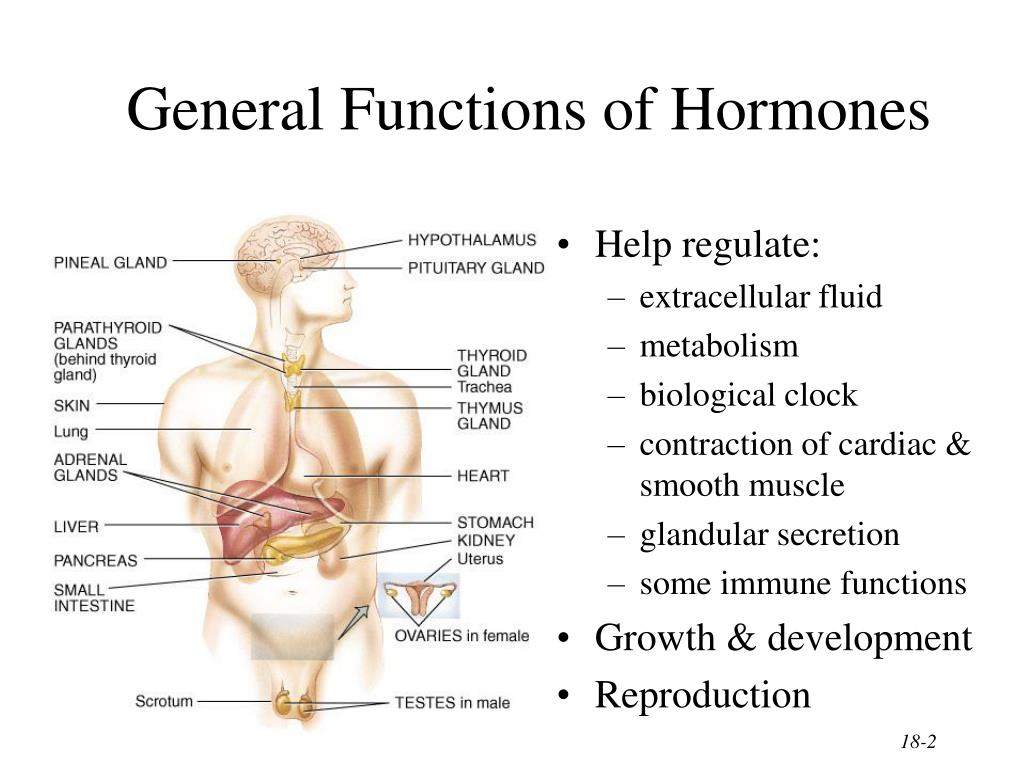What are the different glands in the human body. Endocrine System and Glands: Functions, Hormones, and Disorders Explained
What are the main glands in the human body. How does the endocrine system work. What hormones do different glands produce. What are common endocrine disorders. How do hormones affect our daily lives.
The Endocrine System: A Complex Network of Glands and Hormones
The endocrine system is a sophisticated network of glands and organs that use hormones to regulate various bodily functions. This intricate system plays a crucial role in controlling metabolism, energy levels, reproduction, growth, development, and our responses to stress and mood changes.
Understanding the endocrine system is essential for maintaining overall health and well-being. But what exactly are the key components of this system, and how do they function together?
Key Components of the Endocrine System
- Glands: Specialized organs that produce and secrete hormones
- Hormones: Chemical messengers that travel through the bloodstream
- Target cells: Specific cells that respond to particular hormones
The endocrine system works in harmony with the nervous system to maintain homeostasis, or balance, within the body. While the nervous system uses electrical impulses for quick responses, the endocrine system relies on hormones for more gradual, long-lasting effects.
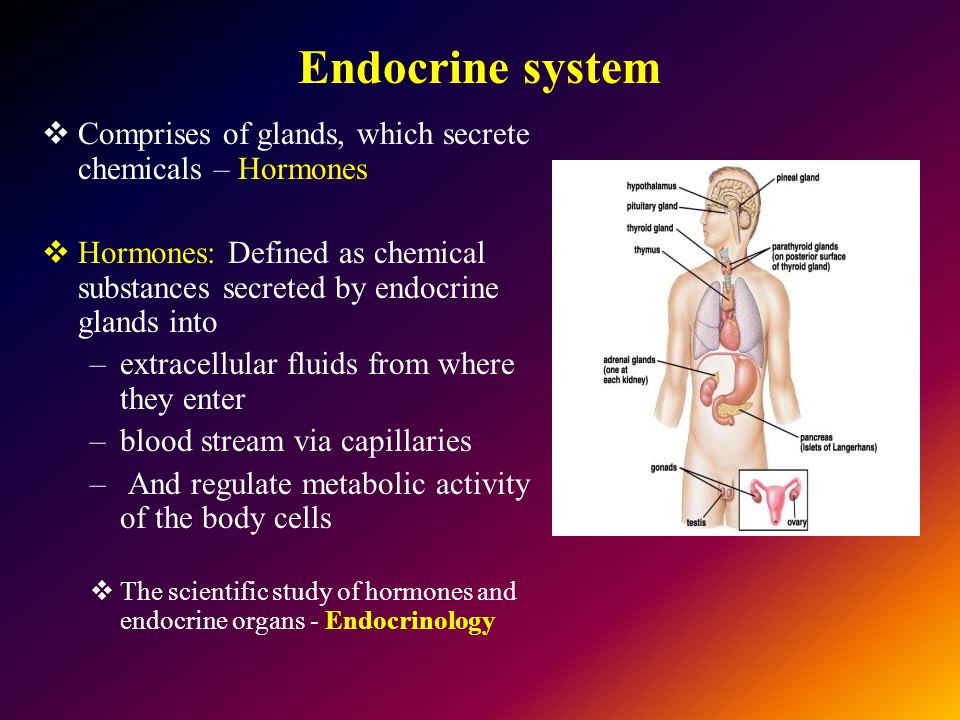
Major Endocrine Glands and Their Functions
The human body contains several endocrine glands, each with specific functions and hormone productions. Let’s explore the main glands and their roles in maintaining our health:
Hypothalamus: The Master Controller
Located at the base of the brain, the hypothalamus acts as a link between the nervous and endocrine systems. What hormones does the hypothalamus produce?
- Anti-diuretic hormone (ADH)
- Oxytocin
- Dopamine
- Corticotrophin releasing hormone
- Thyrotrophin releasing hormone (TRH)
- Gonadotrophin releasing hormone (GnRH)
- Growth hormone releasing hormone (GHRH)
- Somatostatin
These hormones influence various bodily functions, including sleep patterns, alertness, appetite, body weight, thirst, blood pressure, heart rate, sex drive, learning, memory, and mood regulation.
Pituitary Gland: The Master Gland
Often referred to as the “master gland,” the pituitary gland is a small, kidney bean-shaped structure located at the base of the brain. It produces several important hormones:
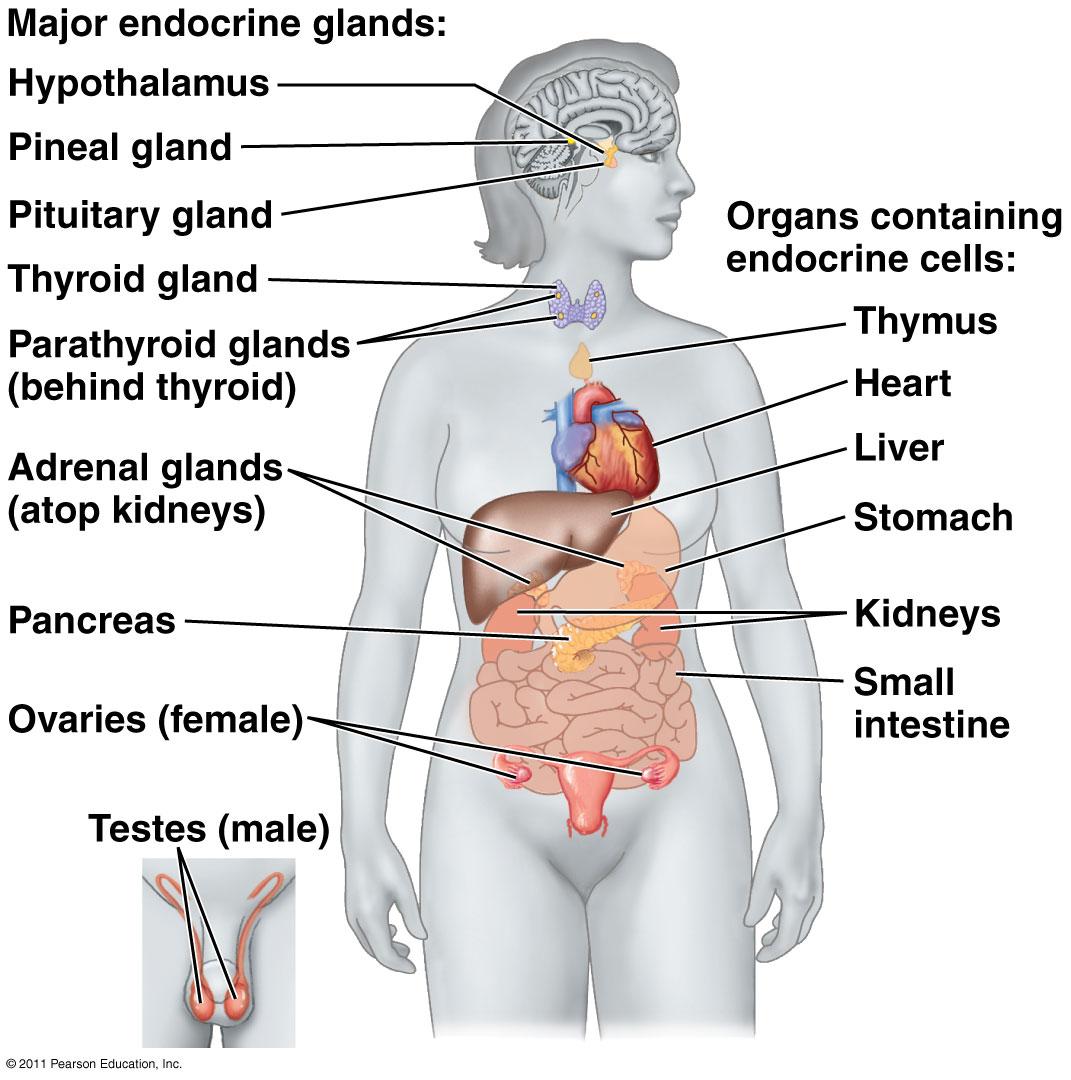
- Luteinising hormone (LH)
- Follicle-stimulating hormone (FSH)
- Prolactin
- Growth hormone
- Thyroid stimulating hormone (TSH)
- Adrenocorticotrophic hormone (ACTH)
The pituitary gland’s hormones control various bodily functions, including blood pressure regulation, blood sugar levels, stress response, menstruation, sperm production, bone growth, muscle mass, childbirth contractions, breastmilk production, and mother-baby bonding.
Thyroid Gland: Metabolism Regulator
The thyroid gland, located in the front of the neck, produces hormones that play a crucial role in regulating metabolism and energy levels. What are the main thyroid hormones?
- Tri-iodothyronine (T3)
- Thyroxine (T4)
- Calcitonin
These hormones influence metabolism, bone growth, energy levels, body temperature, oxygen utilization by cells, heart rate, blood flow, calcium levels, vitamin metabolism, and brain development in infants and children.
Hormones: The Body’s Chemical Messengers
Hormones are the endocrine system’s primary means of communication. These chemical messengers travel through the bloodstream to target specific cells, triggering various responses throughout the body. But how exactly do hormones work?
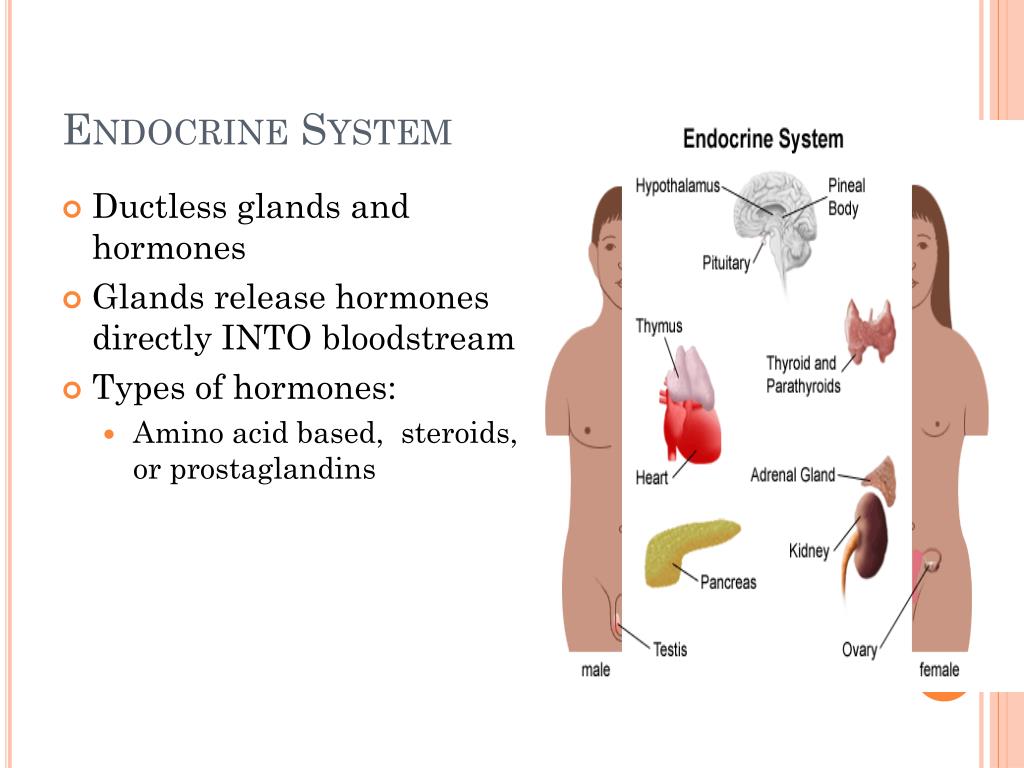
The Hormone Signaling Process
- Hormone production: Endocrine glands synthesize and release hormones into the bloodstream.
- Transport: Hormones travel through the blood to reach their target cells.
- Receptor binding: Hormones attach to specific receptors on or within target cells.
- Cellular response: The target cell responds by altering its function or activity.
- Feedback: The body monitors hormone levels and adjusts production as needed.
This intricate process allows the endocrine system to maintain balance and respond to changing conditions within the body.
Endocrine Disorders: When Glands Malfunction
Endocrine disorders occur when glands produce too much or too little of a hormone, or when the body doesn’t respond correctly to hormones. These imbalances can lead to various health issues. What are some common endocrine disorders?
- Diabetes mellitus: Inability to regulate blood sugar levels
- Thyroid disorders: Hypothyroidism (underactive thyroid) or hyperthyroidism (overactive thyroid)
- Adrenal insufficiency: Inadequate production of adrenal hormones
- Growth disorders: Abnormalities in growth hormone production or response
- Osteoporosis: Weakening of bones due to hormonal imbalances
- Polycystic ovary syndrome (PCOS): Hormonal imbalance affecting women’s reproductive health
Early detection and proper management of endocrine disorders are crucial for maintaining overall health and preventing complications.

The Endocrine System’s Impact on Daily Life
The endocrine system plays a vital role in many aspects of our daily lives, often without us realizing it. How do hormones affect our day-to-day experiences?
Sleep-Wake Cycle
The pineal gland, located near the center of the brain, produces melatonin, a hormone that regulates our sleep-wake cycle. This hormone helps signal to our body when it’s time to sleep and wake up, influencing our circadian rhythm.
Stress Response
The adrenal glands, situated atop each kidney, produce cortisol and epinephrine (adrenaline). These hormones are crucial in our body’s “fight or flight” response, helping us cope with stress and challenging situations.
Mood and Emotions
Various hormones, including serotonin, dopamine, and oxytocin, play significant roles in regulating our mood and emotions. Imbalances in these hormones can contribute to mood disorders such as depression and anxiety.
Growth and Development
Growth hormone, produced by the pituitary gland, is essential for proper physical development during childhood and adolescence. It continues to play a role in maintaining muscle mass and bone density throughout adulthood.
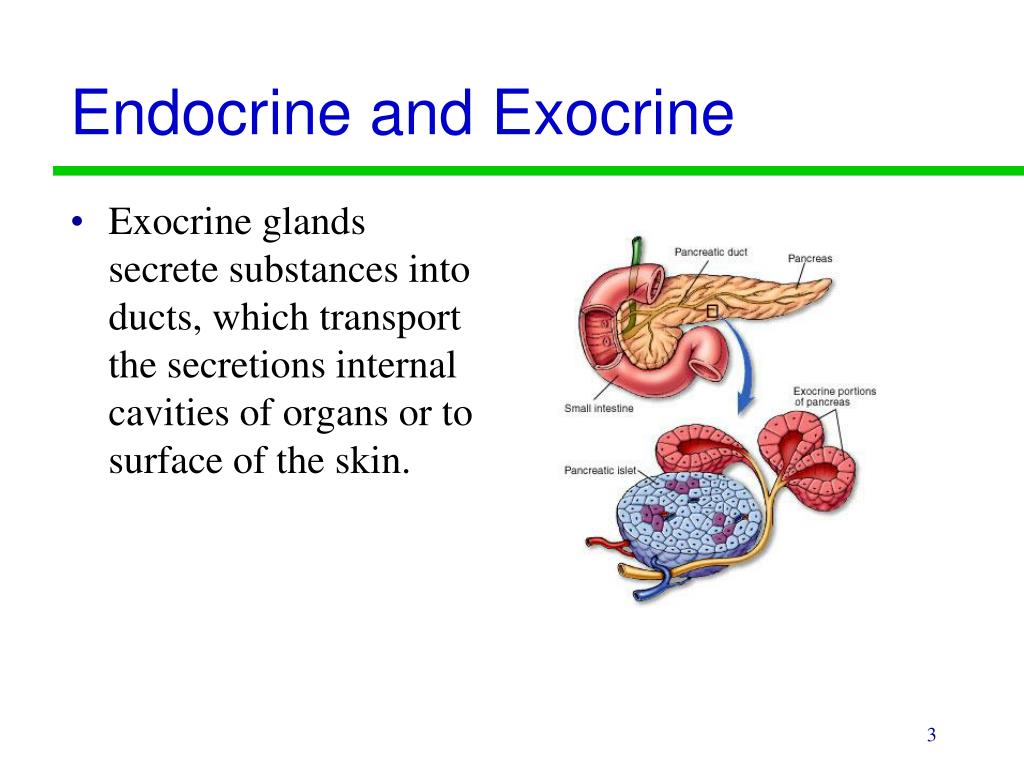
Maintaining a Healthy Endocrine System
Given the endocrine system’s crucial role in our overall health, it’s important to take steps to keep it functioning optimally. What can we do to support our endocrine health?
- Eat a balanced diet rich in nutrients
- Exercise regularly to promote hormone balance
- Manage stress through relaxation techniques
- Get adequate sleep to support hormone production
- Limit exposure to endocrine-disrupting chemicals
- Stay hydrated to support gland function
- Attend regular check-ups with a healthcare provider
By adopting these healthy habits, we can help maintain the delicate balance of our endocrine system and support overall well-being.
Advances in Endocrinology: New Frontiers in Hormone Research
The field of endocrinology continues to evolve, with researchers making exciting discoveries about the complex interactions between hormones and the body. What are some recent advances in endocrine research?
Gut-Brain Axis
Scientists are uncovering the intricate relationship between the gut microbiome and the endocrine system. This “gut-brain axis” may play a role in various health conditions, including obesity, diabetes, and mood disorders.
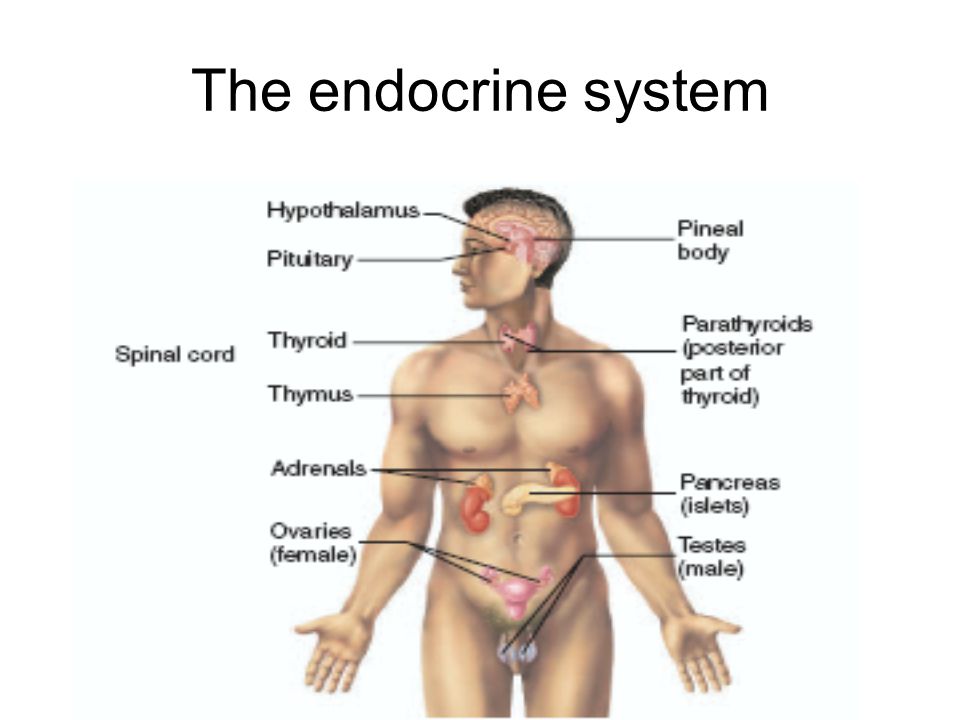
Chronobiology
Research into the body’s internal clock, or circadian rhythm, is revealing how hormonal fluctuations throughout the day impact our health. This knowledge could lead to more effective treatments for sleep disorders and metabolic conditions.
Endocrine Disruptors
Increased awareness of environmental chemicals that interfere with hormone function has sparked research into their long-term health effects and potential preventive measures.
Personalized Endocrine Therapy
Advances in genetic testing and molecular diagnostics are paving the way for more personalized approaches to treating endocrine disorders, tailoring treatments to individual patients’ unique hormonal profiles.
As our understanding of the endocrine system grows, so does our ability to maintain hormonal balance and treat endocrine disorders more effectively. The future of endocrinology holds promise for improved health outcomes and quality of life for millions of people worldwide.
Anatomy of the Endocrine System
The endocrine system is a complex network of glands and organs. It uses hormones to control and coordinate your body’s metabolism, energy level, reproduction, growth and development, and response to injury, stress, and mood. The following are integral parts of the endocrine system:
Hypothalamus. The hypothalamus is located at the base of the brain, near the optic chiasm where the optic nerves behind each eye cross and meet. The hypothalamus secretes hormones that stimulate or suppress the release of hormones in the pituitary gland, in addition to controlling water balance, sleep, temperature, appetite, and blood pressure.
Pineal body. The pineal body is located below the corpus callosum, in the middle of the brain. It produces the hormone melatonin, which helps the body know when it’s time to sleep.
Pituitary. The pituitary gland is located below the brain.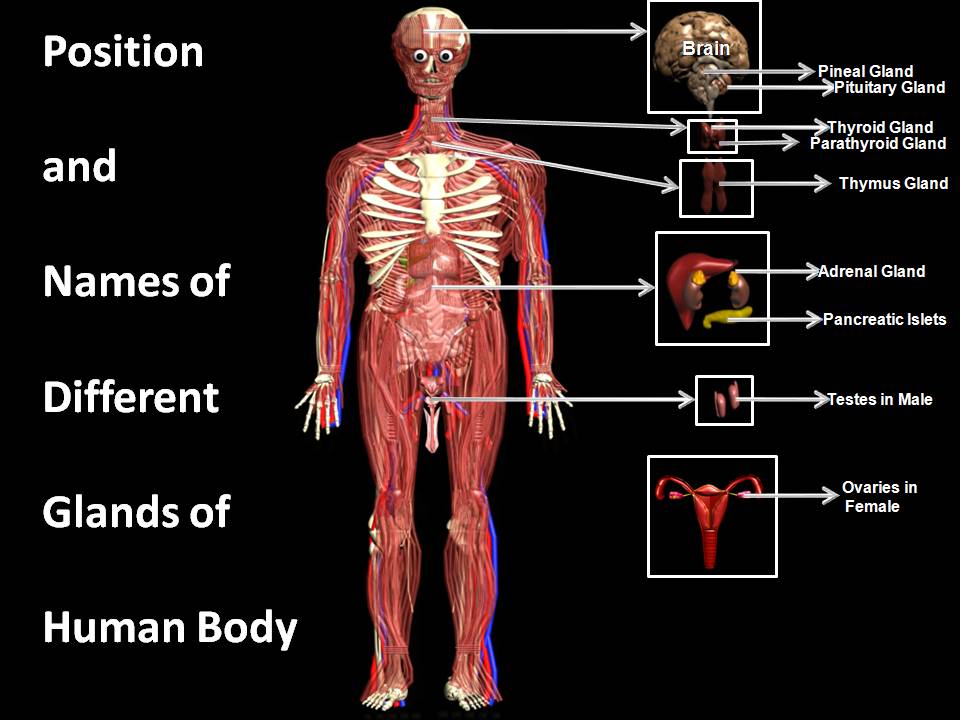 Usually no larger than a pea, the gland controls many functions of the other endocrine glands.
Usually no larger than a pea, the gland controls many functions of the other endocrine glands.
Thyroid and parathyroid. The thyroid gland and parathyroid glands are located in front of the neck, below the larynx (voice box). The thyroid plays an important role in the body’s metabolism. The parathyroid glands play an important role in the regulation of the body’s calcium balance.
Thymus. The thymus is located in the upper part of the chest and produces white blood cells that fight infections and destroy abnormal cells.
Adrenal gland. An adrenal gland is located on top of each kidney. Like many glands, the adrenal glands work hand-in-hand with the hypothalamus and pituitary gland. The adrenal glands make and release corticosteroid hormones and epinephrine that maintain blood pressure and regulate metabolism.
Pancreas. The pancreas is located across the back of the abdomen, behind the stomach. The pancreas plays a role in digestion, as well as hormone production. Hormones produced by the pancreas include insulin and glucagon, which regulate levels of blood sugar.
The pancreas plays a role in digestion, as well as hormone production. Hormones produced by the pancreas include insulin and glucagon, which regulate levels of blood sugar.
Ovary. A woman’s ovaries are located on both sides of the uterus, below the opening of the fallopian tubes (tubes that extend from the uterus to the ovaries). In addition to containing the egg cells necessary for reproduction, the ovaries also produce estrogen and progesterone.
Testis. A man’s testes are located in a pouch that hangs suspended outside the male body. The testes produce testosterone and sperm.
Endocrine glands and their hormones
beginning of content
3-minute read
The hormonal system (called the endocrine system in medical terminology) has various glands that release different hormones.
Hormones are like the body’s communication system.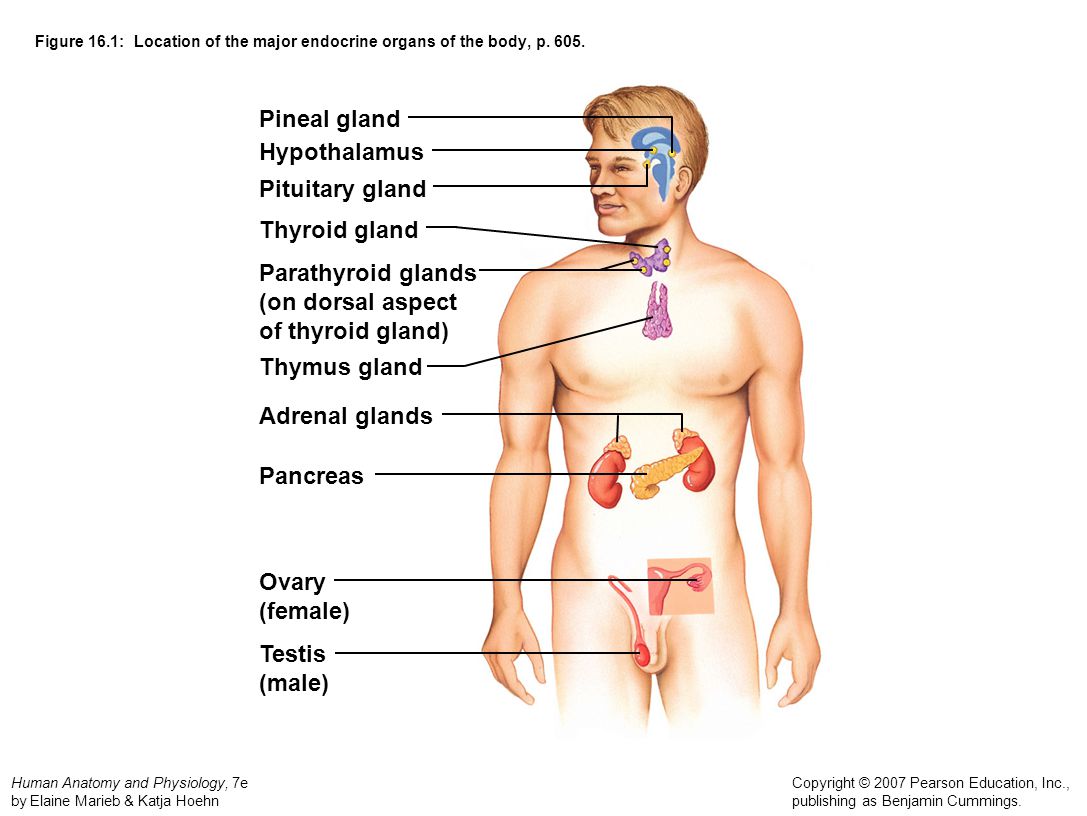 They take messages from one part of the body (the gland) to tell another part of the body (the target cell) to do something important. The endocrine glands influence reproduction, metabolism, growth and many other functions.
They take messages from one part of the body (the gland) to tell another part of the body (the target cell) to do something important. The endocrine glands influence reproduction, metabolism, growth and many other functions.
Below is a list of the main glands (see diagram for their location), some of the hormones they produce and what effects they have on the body.
Hypothalamus: an area in the base of the brain that links the brain to the hormonal system.
The endocrine system.
- major hormones — anti-diuretic hormone (ADH), oxytocin, dopamine, corticotrophin releasing hormone, thyrotrophin releasing hormone (TRH), gonadotrophin releasing hormone (GnRH), growth hormone releasing hormone (GHRH) and somatostatin
- influences — they hypothalamus links the hormonal and nervous systems. Its hormones keep the body stable. They influence sleep rhythms, alertness, appetite, body weight, thirst, blood pressure, heart rate, sex drive, learning, memory, mood and how the body responds to being sick
Pituitary gland: a kidney bean-shaped gland in the base of the brain.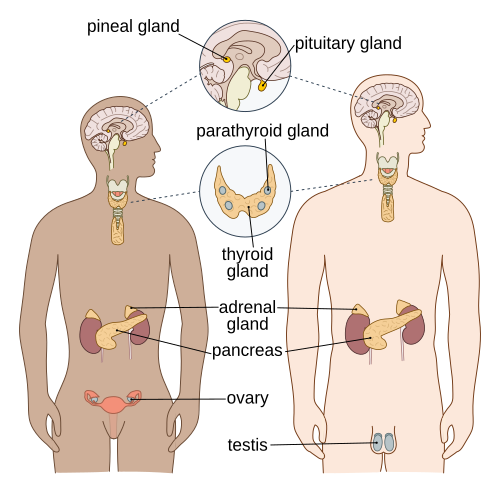
- major hormones — luteinising hormone (LH), follicle-stimulating hormone (FSH), prolactin, growth hormone, thyroid stimulating hormone (TSH), adrenocorticotrophic hormone (ACTH)
- influences — the pituitary gland helps control other glands and makes hormones that control blood pressure, blood sugar levels, response to stress, menstruation, sperm production, bone growth, muscle mass, contractions during childbirth, making breastmilk and bonding between mother and baby
Other glands
Pineal gland: a small gland near the centre of the brain.
Thyroid gland: a small gland in the front of the neck, wrapping around the windpipe.
- major hormones — tri-iodothyronine (T3), thyroxine (T4), calcitonin
- influences — metabolism, bone growth, energy levels, body temperature, how the cells use oxygen, heart rate, blood flow, calcium levels, vitamin metabolism, brain development in babies and children, and reproduction
Parathyroid glands: four small glands in the neck behind the thyroid gland.
- major hormones — parathyroid hormone (PTH)
- influences — regulating calcium levels in the blood
Adrenal glands: 2 glands that sit above the kidneys on each side of the body.
- major hormones — adrenaline, cortisol, aldosterone, DHEA, testosterone
- influences — stress response and blood pressure/salt and water control, blood sugar levels, energy, development of sex organs, heart rate, attention, inflammation, development of the fetus
The parathyroid glands.
Pancreas: a long gland behind the stomach, under the liver.
- major hormones — insulin, glucagon, somatostatin, vasoactive intestinal peptide (VIP)
- influences — blood sugar control
Ovaries (females only): 2 glands found on each side of the uterus in the pelvis.
- major hormones — oestrogen, progesterone, testosterone, anti-mullerian hormone (AMH), Inhibin A and Inhibin B
- influences — female characteristics, storing and releasing eggs
Testes (males only): 2 glands in the scrotum, behind the penis.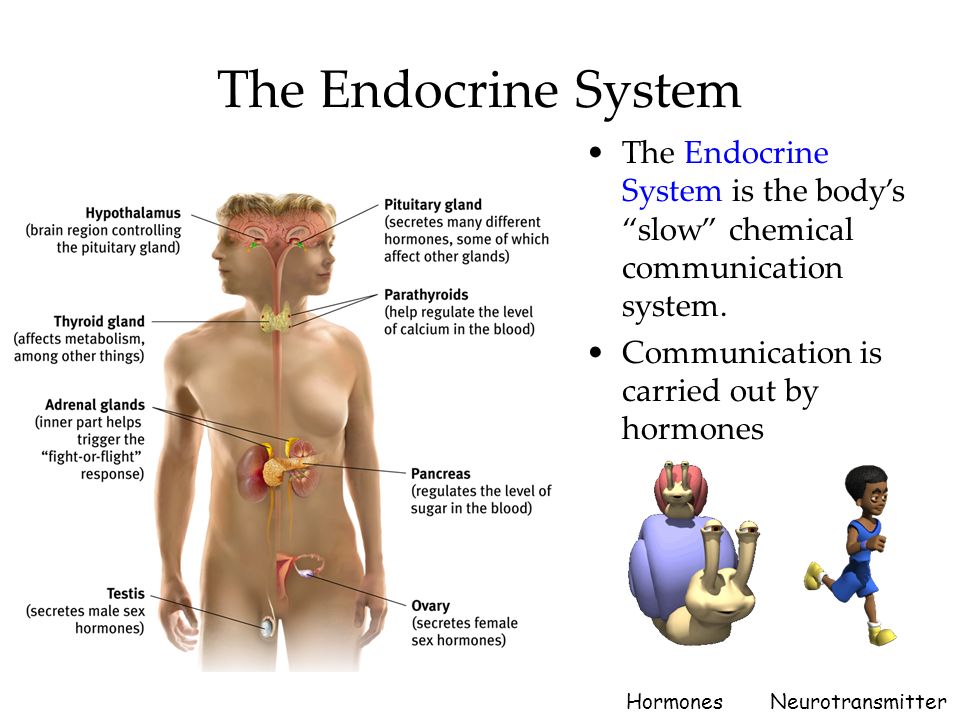
- major hormones — testosterone, anti-mullerian hormone (AMH), estradiol, inhibin B
- influences — male characteristics, sperm production
Find out more about the hormonal system.
Learn more here about the development and quality assurance of healthdirect content.
Last reviewed: November 2020
What Is It, Functions & Organs
Overview
What is the endocrine system?
Your endocrine system is made up of several organs called glands. These glands, located all over your body, create and secrete (release) hormones.
Hormones are chemicals that coordinate different functions in your body by carrying messages through your blood to your organs, skin, muscles and other tissues.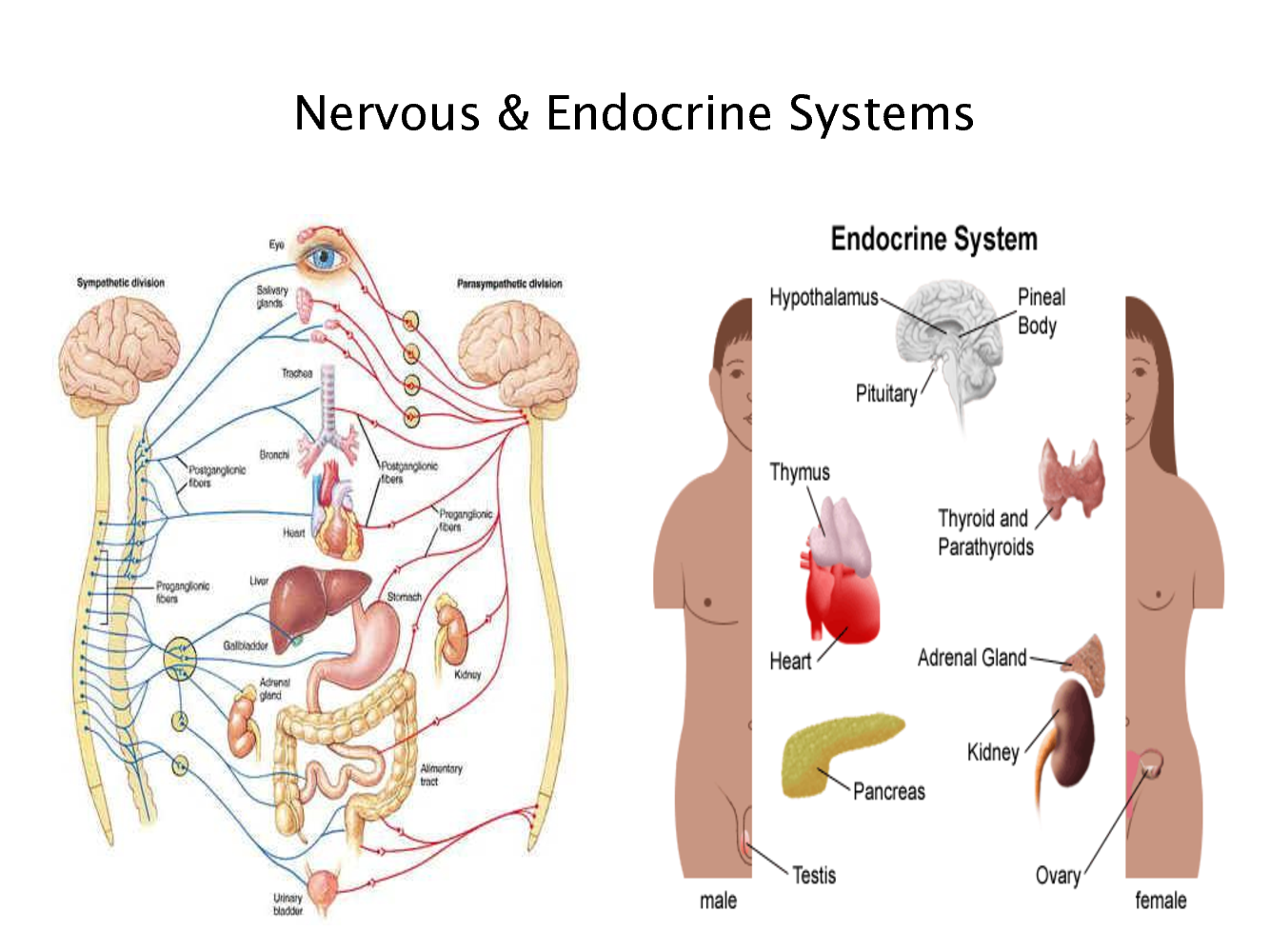 These signals tell your body what to do and when to do it.
These signals tell your body what to do and when to do it.
Function
What does the endocrine system do and how does it work?
Your endocrine system continuously monitors the amount of hormones in your blood. Hormones deliver their messages by locking into the cells they target so they can relay the message.
The pituitary gland senses when your hormone levels rise, and tells other glands to stop producing and releasing hormones. When hormone levels dip below a certain point, the pituitary gland can instruct other glands to produce and release more. This process, called homeostasis, works similarly to the thermostat in your house. Hormones affect nearly every process in your body, including:
- Metabolism (the way you break down food and get energy from nutrients).

- Growth and development.
- Emotions and mood.
- Fertility and sexual function.
- Sleep.
- Blood pressure.
Sometimes glands produce too much or not enough of a hormone. This imbalance can cause health problems, such as weight gain, high blood pressure and changes in sleep, mood and behavior. Many things can affect how your body creates and releases hormones. Illness, stress and certain medications can cause a hormone imbalance.
Anatomy
What are the parts of the endocrine system?
The endocrine system is made up of organs called glands. Glands produce and release different hormones that target specific things in the body. You have glands all over your body, including in your neck, brain and reproductive organs. Some glands are tiny, about the size of a grain of rice or a pea. The largest gland is the pancreas, which is about 6 inches long.
Some glands are tiny, about the size of a grain of rice or a pea. The largest gland is the pancreas, which is about 6 inches long.
The main glands that produce hormones include:
- Hypothalamus: This gland is located in your brain and controls your endocrine system. It uses information from your nervous system to determine when to tell other glands, including the pituitary gland, to produce hormones. The hypothalamus controls many processes in your body, including your mood, hunger and thirst, sleep patterns and sexual function.
- Pituitary: This little gland is only about the size of a pea, but it has a big job. It makes hormones that control several other glands such as the thyroid gland, adrenal glands, ovaries and testicles. The pituitary gland is in charge of many different functions, including how your body grows. It’s located at the base of your brain.
- Thyroid: Your thyroid is a butterfly-shaped gland in the front of your neck.
 It’s responsible for your metabolism (how your body uses energy).
It’s responsible for your metabolism (how your body uses energy). - Parathyroid: These four tiny glands are no larger than a grain of rice. They control the level of calcium in your body. For your heart, kidneys, bones and nervous system to work, you need the right amount of calcium.
- Adrenal: You have two adrenal glands, one on top of each kidney. They control your metabolism, blood pressure, sexual development and response to stress.
- Pineal: This gland manages your sleep cycle by releasing melatonin, a hormone that causes you to feel sleepy.
- Pancreas: Your pancreas is part of your endocrine system, and it plays a significant role in your digestive system too. It makes a hormone called insulin that controls the level of sugar in your blood.
- Ovaries: In women, the ovaries release sex hormones called estrogen, progesterone and testosterone. Women have two ovaries in their lower abdomen, one on either side.

- Testes: In men, the testes (testicles) make sperm and release the hormone testosterone. This hormone affects sperm production, muscle strength and sex drive.
Conditions and Disorders
What conditions and disorders affect the endocrine system?
Dozens of conditions can cause issues in the endocrine system. These conditions can lead to health problems all over the body. Some of the most common disorders are:
- Diabetes: This endocrine disorder affects the way your body uses the energy from the food you eat. Diabetes develops when the pancreas doesn’t make enough of a hormone called insulin, or insulin doesn’t work as it should.
- Thyroid disorders: Several conditions can affect the function of the thyroid gland.
 Hypothyroidism happens when the thyroid doesn’t produce enough hormones. Hyperthyroidism occurs when it creates too many hormones.
Hypothyroidism happens when the thyroid doesn’t produce enough hormones. Hyperthyroidism occurs when it creates too many hormones. - Hypogonadism (low testosterone): In men, hypogonadism can cause erectile dysfunction. It can also cause memory and concentration problems, changes in muscle strength and low sex drive. It happens when the testes do not produce enough of the sex hormone testosterone.
- Polycystic ovary syndrome (PCOS): A hormonal imbalance causes women with PCOS to have irregular periods, abnormal hair growth, excess acne and weight gain. It can lead to diabetes, increased risk of metabolic syndrome and infertility.
- Osteoporosis: When a woman’s ovaries don’t produce enough estrogen, bones become brittle and weak. Although it is more common in women, men sometimes have osteoporosis when testosterone levels get too low. People with an overactive parathyroid gland (hyperparathyroidism) may also have weak bones.

Chemicals called endocrine disrupters can also affect the endocrine system. These chemicals appear everywhere — in pesticides, plastics, cosmetics and even our food and water. Endocrine disrupters cause a wide range of problems throughout the body by changing how hormones send messages.
How common are these conditions?
- Diabetes: This condition is widespread. Almost 10% of people in the United States have diabetes and 27% have prediabetes.
- Thyroid disorders: About 20 million Americans have thyroid disease. Women are about five times more likely than men to develop the condition.
- Hypogonadism: About 40% of men over 45 have low testosterone. Levels of this sex hormone naturally drop as men age. Other factors, such as a man’s diet, weight and other health problems also affect testosterone levels.
- PCOS: This common condition affects about 5% to 10% of adult women in the U.
 S. It is a leading cause of infertility.
S. It is a leading cause of infertility. - Osteoporosis: More than half of adults over age 50 have osteoporosis. It is more likely to occur in women than in men.
Care
How can I keep my endocrine system healthy?
Your endocrine system needs the same things the rest of your body needs to stay healthy. You should exercise, eat right and see your healthcare provider regularly.
If you have a family history of diabetes, thyroid disorders or PCOS, talk to your provider. Managing these conditions can help you avoid a hormone imbalance that can lead to health problems.
Frequently Asked Questions
When should I call my doctor?
Some symptoms can point to a serious health condition, such as diabetes.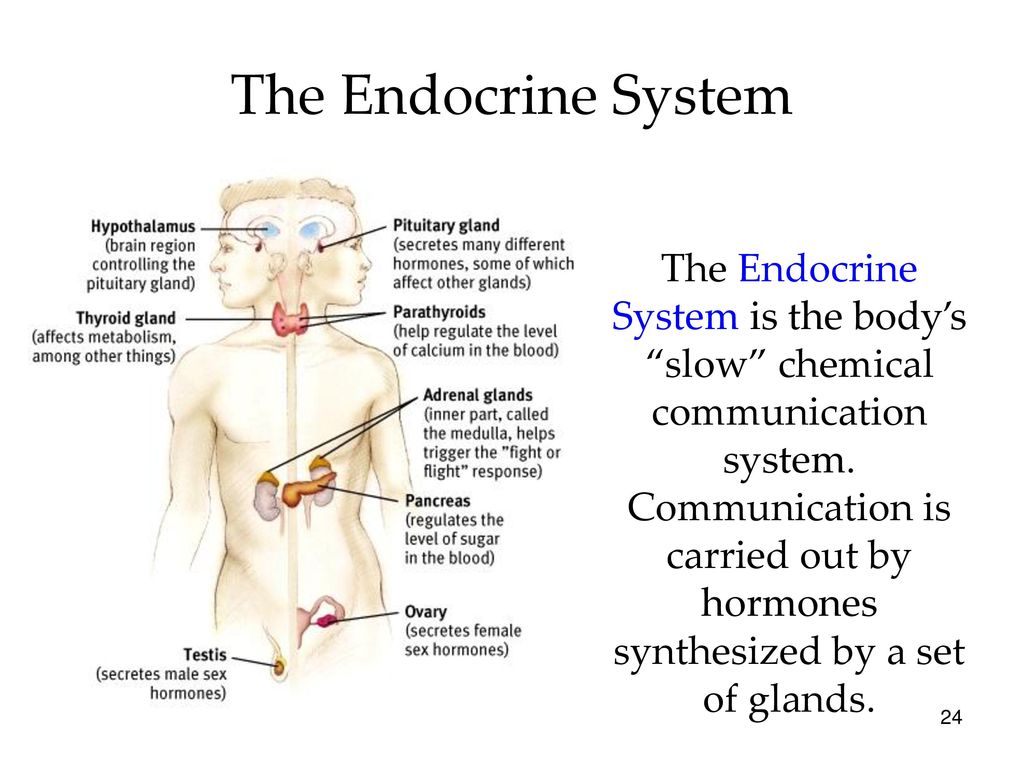 Call your provider if you have:
Call your provider if you have:
- The urge to urinate (pee) a lot.
- Extreme thirst, even after you’ve had plenty of water.
- Nausea or stomach pain that doesn’t go away.
- Sudden weight loss or unexplained weight gain.
- Severe exhaustion or weakness.
- Problems with sweating too much.
- Sudden episodes of rapid heart hearts or elevated blood pressure
- Developmental or growth delays.
Gland – Definition, Types, Examples and Quiz
Gland Definition
A gland is a group of cells or a “secreting organ” that excretes a chemical substance. This substance can take the form of hormones, sweat, saliva, mucus, or acids (i.e. HCl acid in gastric glands). Glands are tasked with helping create the substance that they then secrete for further use or total elimination from the body.
The image shows the different ways that cells secrete substances
Now, let’s discuss the actual development of a gland.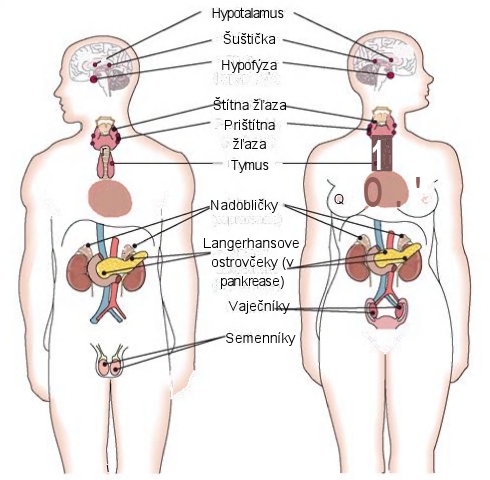 Each gland can be thought of as an ingrowth of the top layer of skin called the epithelium. It is the surface-most layer of our skin. This ingrowth is notably tubular and could start off as a column of cells or as a tubular pre-structure. With time, the column of cells divides or gives rise to branches that help form compound glands. This branching is particularly useful in the creation of large and heavily branched glands like the salivary and pancreatic glands in the body that contain an impressive surface area. These formations (simple, branched and compound) make up a variety of glandular structures.
Each gland can be thought of as an ingrowth of the top layer of skin called the epithelium. It is the surface-most layer of our skin. This ingrowth is notably tubular and could start off as a column of cells or as a tubular pre-structure. With time, the column of cells divides or gives rise to branches that help form compound glands. This branching is particularly useful in the creation of large and heavily branched glands like the salivary and pancreatic glands in the body that contain an impressive surface area. These formations (simple, branched and compound) make up a variety of glandular structures.
However, shape is the ultimate determinant of the gland’s classification. If the gland maintains a tubular shape during growth, then it is called a tubular gland. If the secretory part of the gland swells in size, then it is called an alveolar gland (taking on a “bulb-like” shape much like the one in our lung’s alveolar sacs). Coiled glands curl around and acinar cells have a lobed berry look.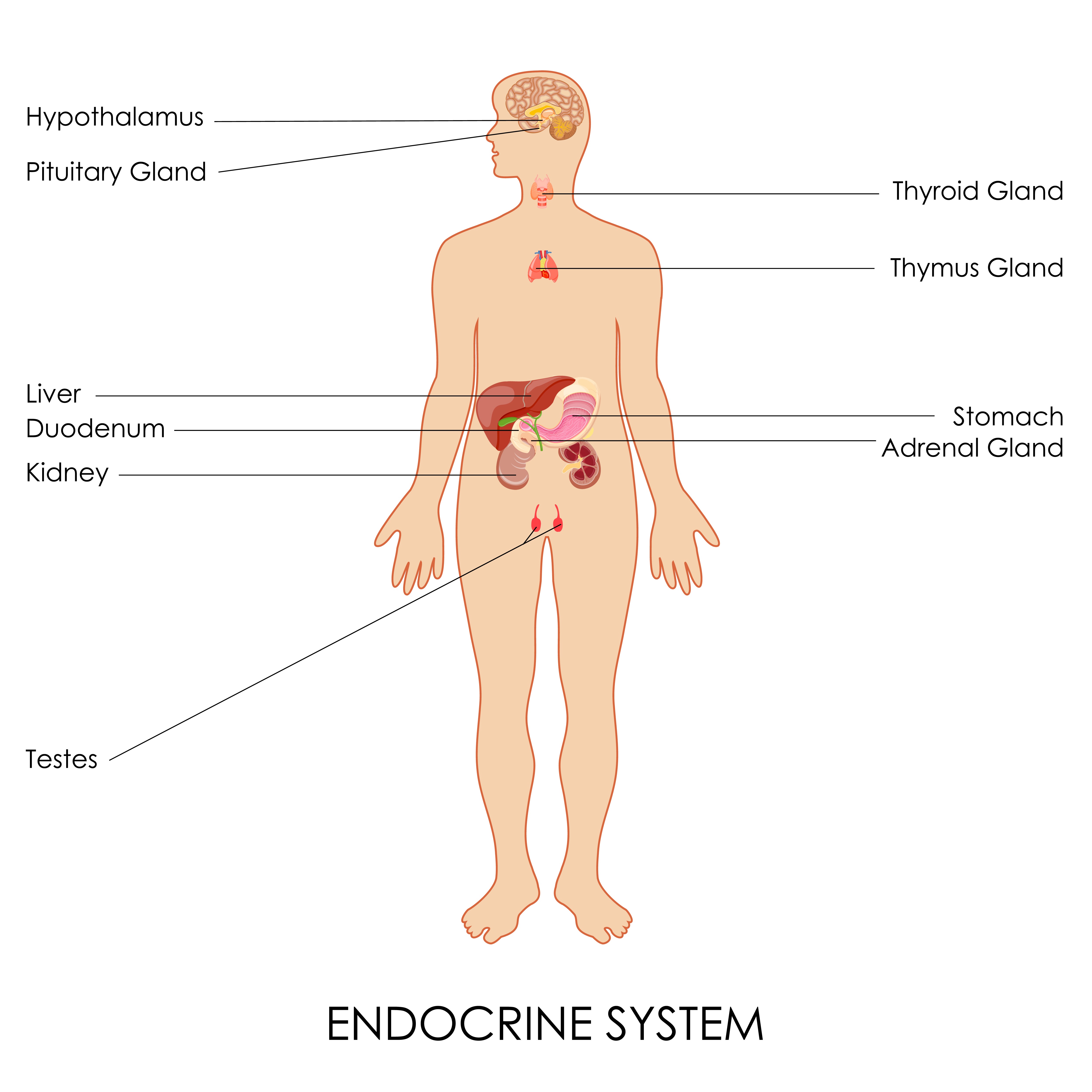 Glands organized in a simple, non or minimally-branched form include the variations listed in the figure below.
Glands organized in a simple, non or minimally-branched form include the variations listed in the figure below.
The image depicts five types of simple glands (in order): simple tubular, simple branched tubular, simple coiled tubular, simple acinar, and simple branched acinar glands.
Similarly, compound glands come in three main forms. The main difference between compound glands and simple glands is that they come in more complicated, branched arrangements. They take on tubular, acinar, or a combined tubule-acinar shape, as shown below.
The image depicts three compound glands: compound tubular, compound acinar, and compound tubule-acinar glands.
Types of Gland
Glands are sectioned into two groups on the basis of their function. Endocrine glands excrete chemicals, such as hormones, through the basal lamina of cells that travel through the blood stream. Examples of endocrine glands are the thyroid glands and pituitary glands which play important roles in preserving the homeostatic balance of the body.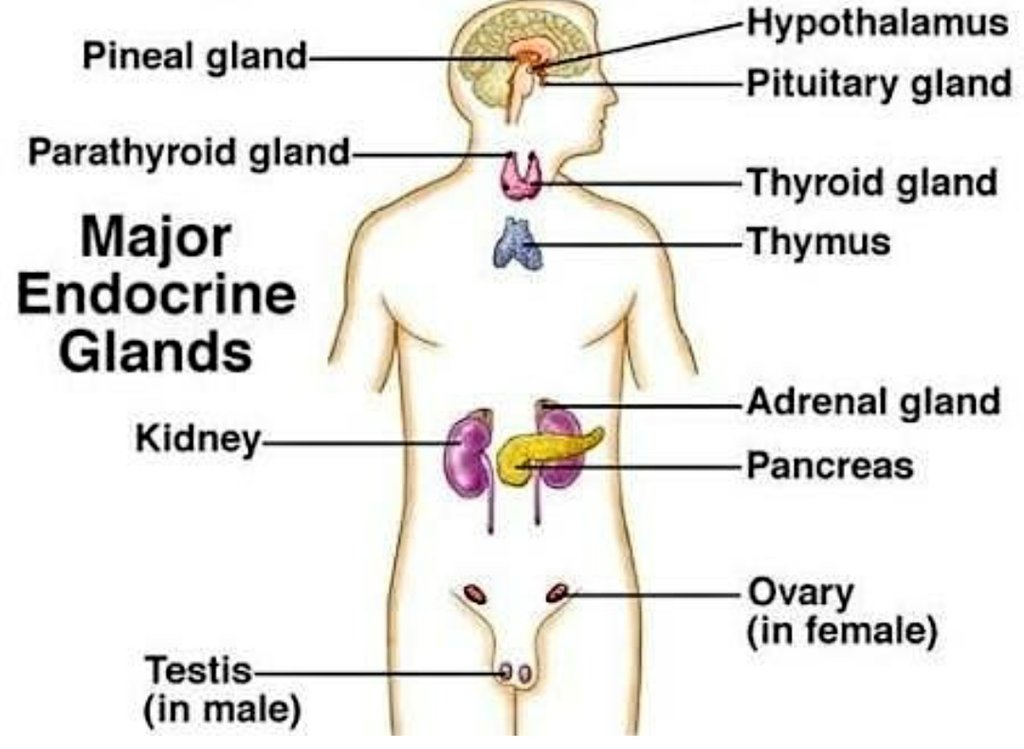 But endocrine glands are varied.
But endocrine glands are varied.
Major endocrine glands (and their main functions):
- Thyroid gland: mainly helps to regulate our metabolism and vital bodily functions with the release of TSH, T3, and T4 hormones. This gland is butterfly-shaped and located in the neck. Other functions it helps regulate are our breathing, our hear rate, our weight and our body temperature (and so much more).
- Pituitary gland: is the size of a pea and is located behind our noses. It is directly controlled by the hypothalamus. The pituitary gland is often called the “master gland” because it releases a plethora of growth and stimulatory hormones that affect our thyroid, adrenal glands, and sex organs (i.e. prolactin which stimulates milk production, growth hormones for muscle and bone mass, etc.)
- Pancreas: is also considered a gland despite being an entire organ as it is a secretory organ. It maintains healthy blood sugar levels via insulin and glucagon release.
 The pancreas also releases digestive enzymes that break down protein, fats, and carbs in our food.
The pancreas also releases digestive enzymes that break down protein, fats, and carbs in our food. - Pineal gland: releases melatonin, which is involved in the sleep cycle. The pineal gland has a role in regulating our circadian rhythm (or waking-sleeping cycles that are linked to the periods of lightness and darkness over the 24-hour cycle).
- Adrenal gland: help control blood sugar and use of carbs and fats. They are located on top of each kidney, and release sex hormones and cortisol – which is a stress hormone.
- Thymus: is located between our lungs and is only active until puberty commences. It secretes hormones important for puberty and a healthy immune system.
- Testes (in males): release the sex hormone testosterone. Despite lying freely in the scrotum, it is connected to the body by the spermatic cord, which is highly innervated and connected to our blood vessels. Testosterone promote sperm production & our sex drive.

- Ovaries (in females): produces estrogen, which promotes breast development & healthy periods. Estrogen initiates menstruation, and the release of an egg each month.
Exocrine glands, on the other hand, use ducts to expel their material onto an epithelial surface rather than the bloodstream. This external surface can be our skin or even our GI tract. The material is always expelled onto the apical (“top”) surface of our cells.
Major exocrine glands:
- Salivary glands (contains amylase to help soften our food)
- Bile-making glands of liver
- Part of the pancreas that secretes pancreatic enzymes into the duodenum of the small intestine
- Prostate gland (helps propel seminal fluid during ejaculation)
- Gastric glands (digests our food)
- Sweat glands (removes heat from the body)
Everyday Examples of Glands
A gland that we are all, perhaps, painfully aware of is the sweat gland. Whether we sense them during a class speech or after a nice hour of exercise, we know that our sweat glands are close to the epidermis of the skin and secrete beads of moisture.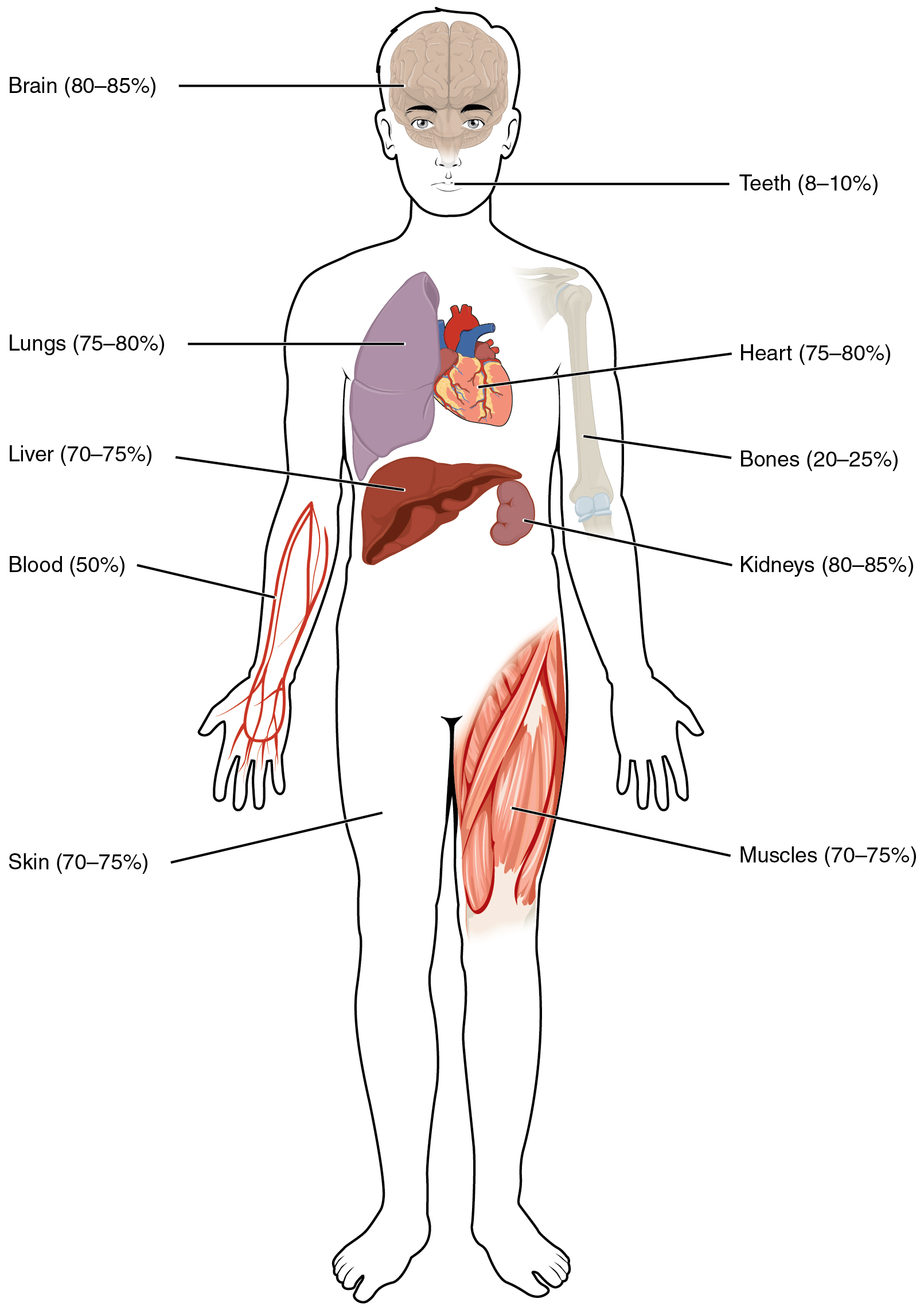 There are two types of sweat glands: eccrine and apocrine. Eccrine glands are distributed throughout our bodies and secrete water-based moisture; it is our body’s main way of cooling itself. Apocrine glands, on the other hand, are those located in our armpits and perineal areas. Apocrine glands are known to pinch their secretions off into vesicles that then enter the lumen. While they play a less significant role in humans, they are the sole glands in hoofed animals like cattle.
There are two types of sweat glands: eccrine and apocrine. Eccrine glands are distributed throughout our bodies and secrete water-based moisture; it is our body’s main way of cooling itself. Apocrine glands, on the other hand, are those located in our armpits and perineal areas. Apocrine glands are known to pinch their secretions off into vesicles that then enter the lumen. While they play a less significant role in humans, they are the sole glands in hoofed animals like cattle.
Depicted in the figure is an eccrine sweat gland.
Another familiar apocrine gland in mammals are mammary glands. Mammary glands can be classified as exocrine (rather than endocrine), and are used to store and secrete milk to feed young animals. As apocrine glands do, lactating animals are able to pinch off their milk secretions in membrane-bound vesicles.
Quiz
1. What is the main determinant of how a gland is classified?
A. Material excreted
B.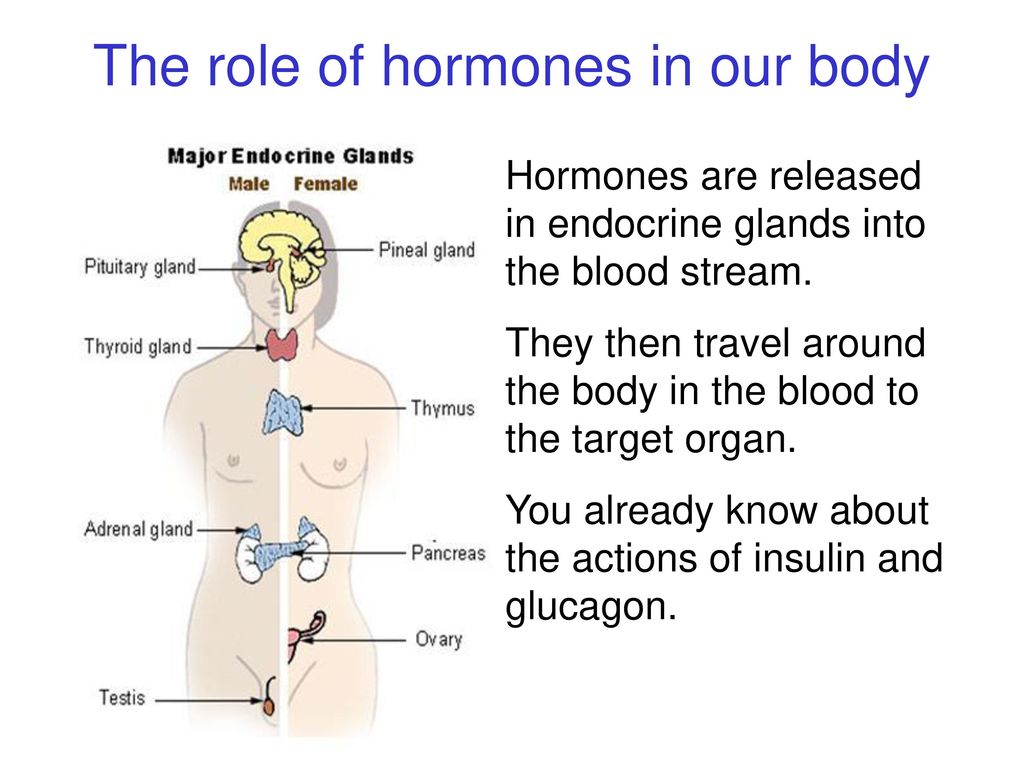 Cell quantity
Cell quantity
C. Shape
D. Location
Answer to Question #1
C is correct. Although the other options listed are important to the understanding of the type of gland being studied, the main determinant of how a gland is classified is its shape (i.e. simple acinar, compound tubular, etc.)
2. Define the distinction between endocrine and exocrine glands:
A. Endocrine glands secrete from apical lamina into the bloodstream; exocrine glands to basal surface of epithelium
B. Endocrine glands secrete from basal lamina into the bloodstream, exocrine glands to apical surface of epithelium
C. Exocrine glands secrete from the apical lamina into the bloodstream, endocrine glands to basal surface of epithelium
D. Exocrine glands secrete material through membrane-bound vesicles, endocrine glands do not.
Answer to Question #2
B is correct.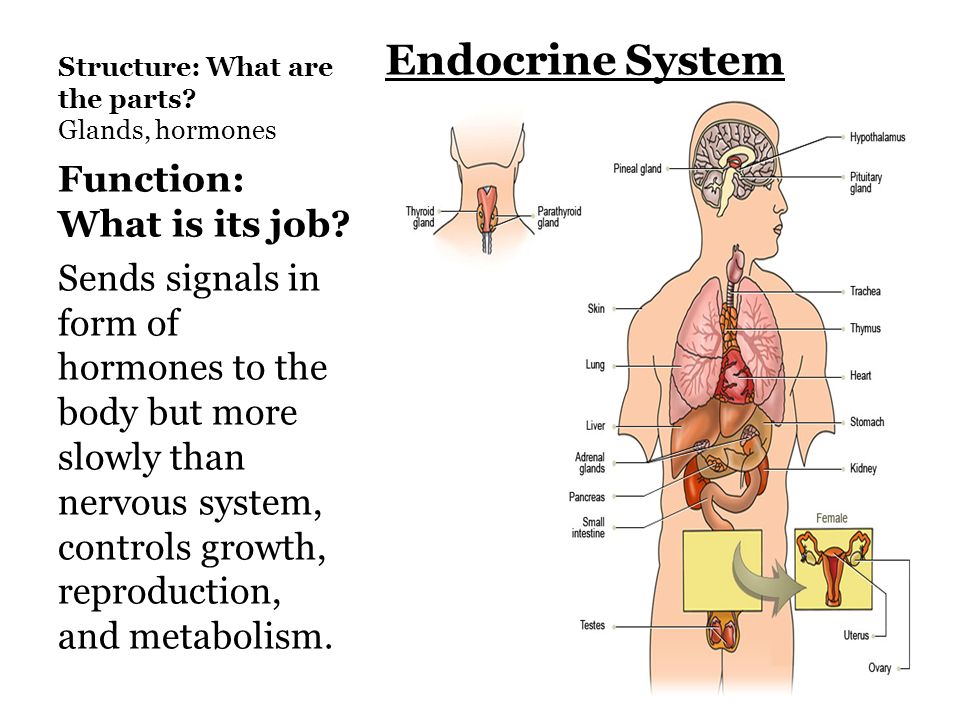 As discussed previously, endocrine glands release hormones directly into the bloodstream through the gland’s basal lamina, whereas exocrine glands release their contents to the apical surface of epithelial lining such as skin or even our GI tract.
As discussed previously, endocrine glands release hormones directly into the bloodstream through the gland’s basal lamina, whereas exocrine glands release their contents to the apical surface of epithelial lining such as skin or even our GI tract.
3. Which of the following is characteristic of the apocrine method of secretion?
A. Apocrine glands use vesicles to secrete contents
B. Apocrine glands release water-based moisture in beads to cool off the body
C. Apocrine glands use cell-signaling mechanisms exclusively to coordinate secretion
D. Unlike eccrine glands, apocrine glands are more populous and dispersed throughout the body
Answer to Question #3
A is correct. Apocrine glands are less numerous than eccrine glands in the human body, and unlike eccrine glands use membrane-bound vesicles to carry secretions. Notably, apocrine glands are not limited to a type of sweat gland but also include mammary glands.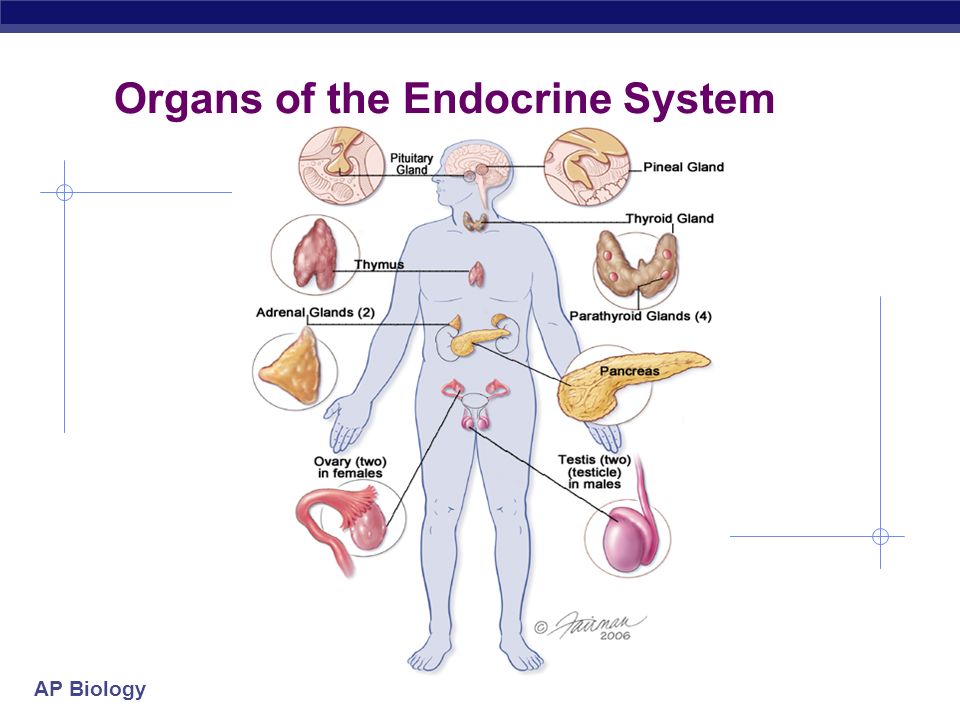
References
- Hormone Health Network (2017). “Endocrine Glands and Types of Hormones.” Hormone.org. Retrieved on 2017-05-28 from http://www.hormone.org/hormones-and-health/endocrine-glands-and-types-of-hormones
- Ingraham, Susan (2016). “The Exocrine System: How it Works.” Exocrine-System Retrieved on 2017-05-28 from http://www.susaningraham.net/exocrine-system.html
- Prakash Mohini (2017). “What is the difference between Simple Gland and Compound Gland?” Preserve articles. Retrieved on 2017-05-29 from http://www.preservearticles.com/2011082111261/what-is-the-difference-between-simple-gland-and-compound-gland.html
- Theodora (2017). “Epithelial, endothelial and glandular tissue.” Theodora Encyclopedia. Retrieved on 2017-05-30 from http://www.theodora.com/encyclopedia/e/epithelial_endothelial_and_glandular_tissues.html
Endocrine Glands | Boundless Anatomy and Physiology
Overview of Endocrine Glands
Endocrine glands are glands that have no duct and release their secretions directly into the intercellular fluid or into the blood.
Learning Objectives
Differentiate among the types of endocrine glands (pituitary [posterior pituitary, anterior pituitary], thyroid, parathyroid, adrenal, and pancreas) in the endocrine system
Key Takeaways
Key Points
- The main endocrine glands are the pituitary (anterior and posterior lobes), thyroid, parathyroid, adrenal (cortex and medulla), pancreas, and gonads.
- The parathyroid glands are four masses of tissue, two embedded posteriorly in each lateral mass of the thyroid gland.
- The pancreas lies along the lower curvature of the stomach, close to where it meets the first region of the small intestine, the duodenum.
Key Terms
- adrenal gland: This gland is responsible for releasing hormones in response to stress through the synthesis of corticosteroids, such as cortisol and catecholamines (epinephrine (adrenaline) and norepinephrine), as well as the production of androgens.
- thyroid: One of the largest endocrine glands, it is responsible for the secretion of thyroxine which controls how quickly the body uses energy, makes proteins, and is sensitive to other hormones.

Endocrine glands are ductless and release their secretions directly into the intercellular fluid or into the blood. A collection of endocrine glands makes up the endocrine system: the pituitary (anterior and posterior lobes), thyroid, parathyroid, adrenal (cortex and medulla), pancreas and gonads.
Endocrine glands in the human head and neck: The endocrine system is the system of glands, each of which secretes different types of hormones directly into the bloodstream (some of which are transported along nerve tracts) to regulate the body.
Pituitary Gland
The hypothalamus makes up the lower region of the diencephalons and lies just above the brain stem. The pituitary gland (hypophysis) is found in the inferior part of the brain, attached to the bottom of the hypothalamus by a slender stalk called the infundibulum.
The pituitary gland consists of two major regions, the anterior pituitary gland (adenohypophysis) and the posterior pituitary gland (neurohypophysis).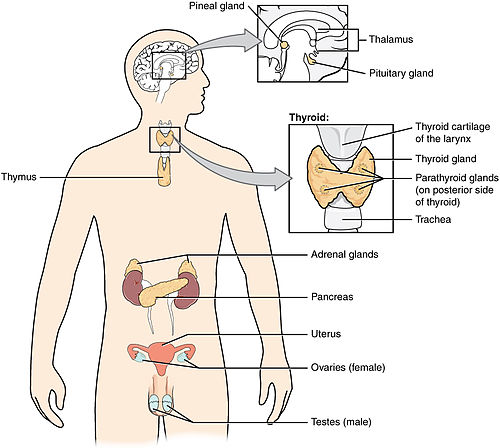 The hypothalamus also controls the glandular secretion of the pituitary gland.
The hypothalamus also controls the glandular secretion of the pituitary gland.
Posterior Pituitary Gland
Communication between the hypothalamus and the posterior pituitary occurs through neurosecretory cells that span the short distance between them. Hormones produced by the cell bodies of the neurosecretory cells are packaged in vesicles and transported through the axon and stored in the axon terminals that lie in the posterior pituitary.
When the neurosecretory cells are stimulated, the action potential generated triggers the release of the stored hormones from the axon terminals to a capillary network within the posterior pituitary. Two hormones—oxytocin and antidiuretic hormone (ADH)—are produced and released this way.
Anterior Pituitary Gland
The anterior pituitary is involved in sending hormones that control all other hormones of the body. Its lobe is derived from oral ectoderm and is composed of glandular epithelium.
Communication between the hypothalamus and the anterior pituitary occurs through hormones (releasing hormones and inhibiting hormones) that are produced by the hypothalamus and delivered to the anterior pituitary via a portal network of capillaries.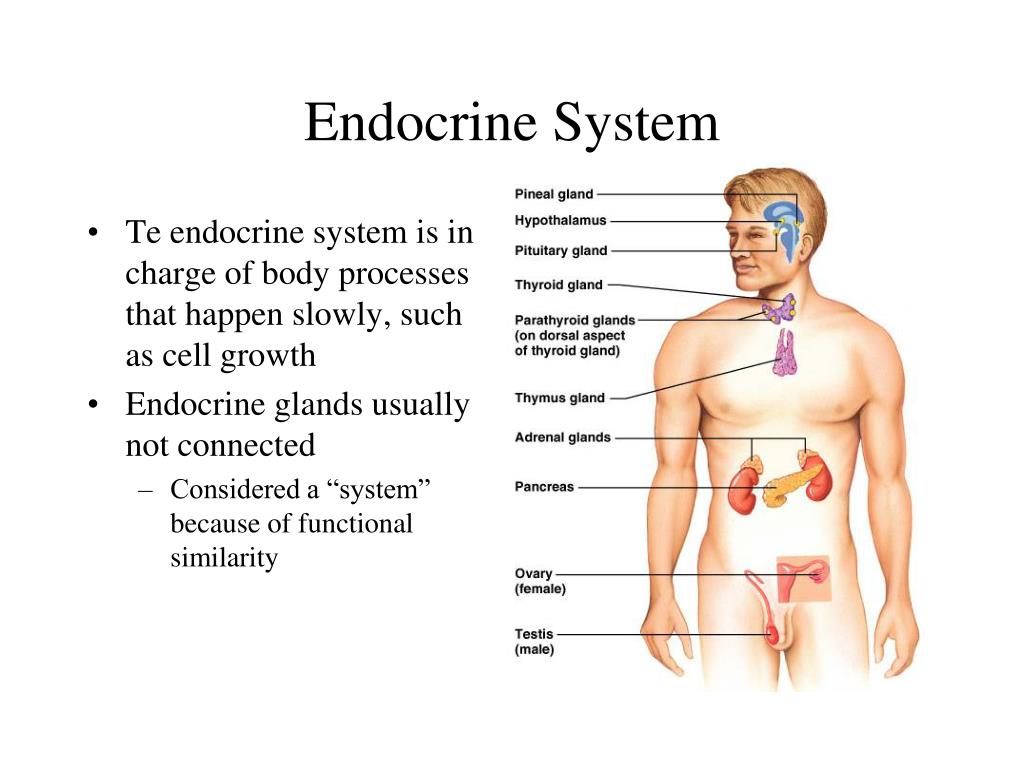 The releasing and inhibiting hormones are produced by specialized neurons of the hypothalamus called neurosecretory cells.
The releasing and inhibiting hormones are produced by specialized neurons of the hypothalamus called neurosecretory cells.
These hormones are released into a capillary network that supplies the anterior pituitary. The hormones then diffuse from this secondary plexus into the anterior pituitary, where they initiate the production of specific hormones by the anterior pituitary.
Thyroid Gland
This is one of the largest endocrine glands in the body. It is positioned on the neck just below the larynx and has two lobes, one on either side of the trachea.
It is involved in the production of the hormones T3 (triiodothyronine) and T4 (thyroxine). These hormones increase the metabolic activity of the body‘s cells.
The thyroid also produces and releases the hormone calcitonin (thyrocalcitonin) that contributes to the regulation of blood calcium levels. Thyrocalcitonin or calcitonin decreases the concentration of calcium in the blood, where most of it is stored in the bones.
Parathyroid
There are four parathyroid glands, all located on the thyroid gland. One of its most important functions is to regulate the body’s calcium and phosphorus levels.
All four glands also secrete parathyroid hormone, or PTH, which causes calcium to be released from the bones back into the extracellular fluid. PTH is released directly into the bloodstream and travels to its target cells, which are often quite far away and found in bone, kidneys, and the gastrointestinal system.
Calcitonin, a hormone produced by the thyroid gland that also regulates ECF calcium levels, serves to counteract the calcium-producing effects of PTH.
Adrenal Glands
Adrenal glands: These are responsible for releasing hormones in response to stress through the synthesis of corticosteroids such as cortisol, and catecholamines such as epinephrine (adrenaline) and norepinephrine.
The adrenal glands are a pair of ductless glands located above the kidneys.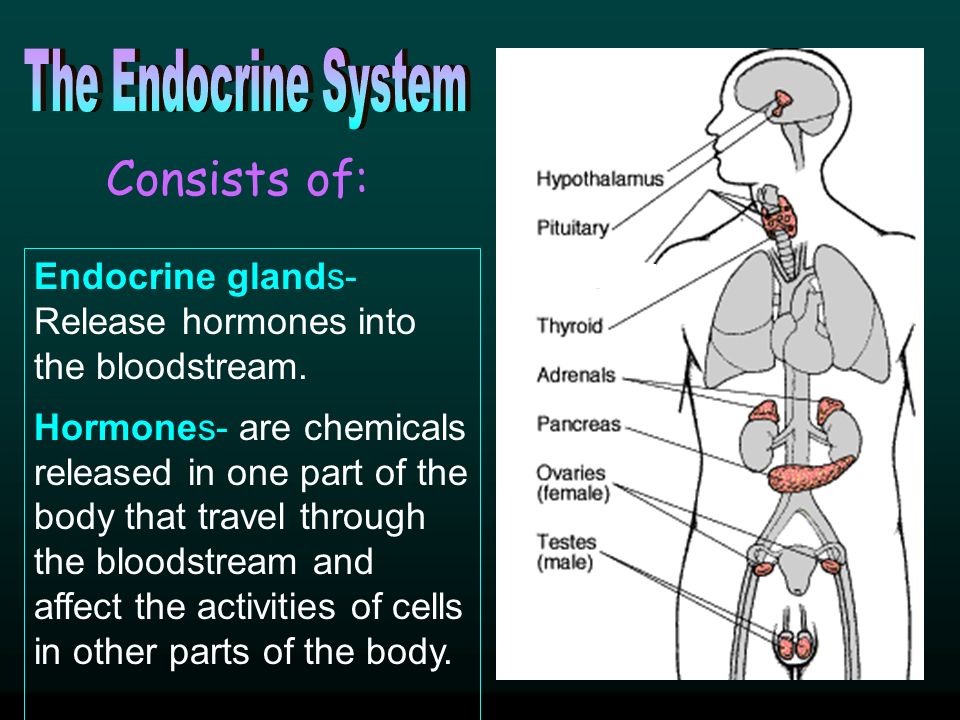 Through hormonal secretions, they regulate many essential bodily functions including biochemical balances that influence athletic training and general stress response.
Through hormonal secretions, they regulate many essential bodily functions including biochemical balances that influence athletic training and general stress response.
The glucocorticoids include corticosterone, cortisone, and hydrocortisone or cortisol. These hormones serve to stimulate the conversion of amino acids into carbohydrates, a process known as gluconeogenesis, and the formation of glycogen by the liver. They also stimulate the formation of reserve glycogen in the tissues, such as in the muscles.
Pancreas
The pancreas is a very important organ in the digestive and the circulatory systems that helps to maintain our blood sugar levels. It is considered to be part of the gastrointestinal system since it produces digestive enzymes. These are released into the small intestine to aid in reducing food particles to basic elements that can be absorbed by the intestine and used by the body.
It has another, very different function in that it forms insulin, glucagon, and other hormones that are sent into the bloodstream to regulate blood sugar levels and other activities throughout the body.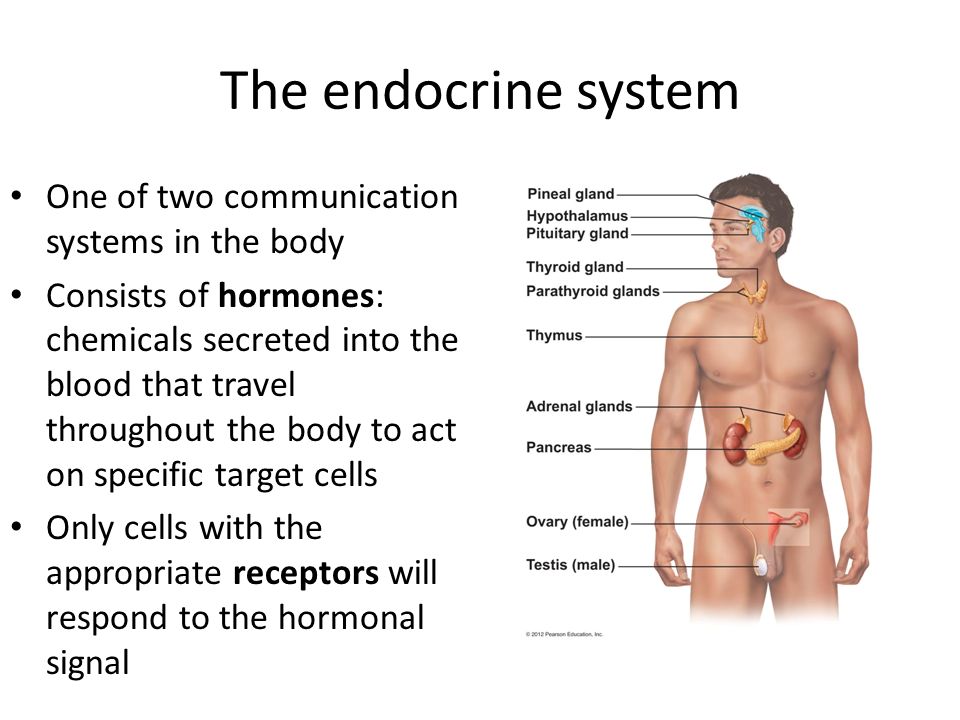
Endocrine system – Chemicals – Environment
Additional tools
What is the endocrine
system?
The endocrine system is a complex network of glands, hormones
and receptors. It provides the key communication and control link
between the nervous system and bodily functions such as reproduction,
immunity, metabolism and behaviour.
In nearly all complex multicellular animals, there are two main
systems controlling and coordinating the processes within the
body:
- The nervous system, which exerts rapid point-to-point control
by means of electrical signals passing down the nerves to particular
organs or tissues. - The endocrine system, which is a slower system based on chemical
messengers, the hormones, which are secreted into the blood
(or other extracellular fluids) and can reach all parts of the
body.
The nervous system works in tandem with the endocrine system
to control all bodily functions and processes. The endocrine system has three main components:
Endocrine glands, situated at
various sites around the body, and in specialised areas of the
brain. The cells in these glands secrete specific chemicals called
hormones.
Hormones circulate around the body via the blood
stream and modulate cellular or organ functions by binding with
receptors in the target cells. Hormones that stimulate and control
the activity of other endocrine glands are called trophic hormones.
Receptors in the target cells, once activated by
binding of the hormone, regulate the functions and processes in
the tissue through interactions with the cell’s DNA or other complex
intracellular signalling processes.
The main human hormones and their functions are shown below :
| Gland | Hormones | Functions |
|---|---|---|
| Hypothalamus | Releasing hormones | Stimulate pituitary activity |
| Pituitary | Trophic (stimulating) hormones | Stimulate thyroid, adrenal, gonadal and pancreatic activity |
| Thyroid | Thyroid hormones | Regulate metabolism, growth and development, behaviour and puberty |
| Adrenal | Corticosteroid hormones Catecholamines | Regulate metabolism Regulate behaviour |
| Pancreas | Insulin and glucagon | Regulate blood sugar levels |
| Gonads | Sex steroid hormones (androgens and oestrogens) | Regulate development & growth, reproduction, immunity, onset of puberty and behaviour |
The production and circulating levels of hormones are controlled
by means of negative feedback processes.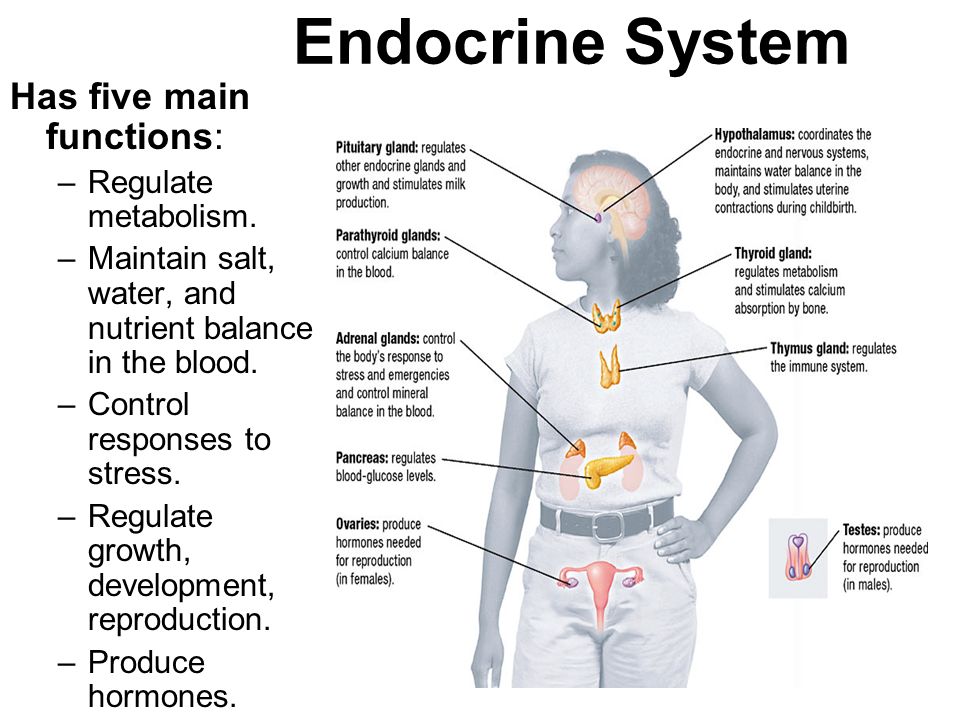 For example, synthesis
For example, synthesis
of thyroid hormone is stimulated by thyroid stimulating hormone
(TSH) produced by the pituitary gland. If blood levels of thyroid
hormone fall, a part of the brain, the hypothalamus, responds
to the change and releases thyroid hormone releasing hormone (TRH),
which stimulates a particular cell type in the pituitary to increase
TSH synthesis. As thyroid hormone levels in blood again rise in
response to TSH, TRH production is reduced and, in turn, TSH secretion
is suppressed. Such feedback systems maintain the balance of various
body systems (operating in a fashion analogous to the system that
controls a domestic central heating system) – a process known
as homeostasis.
Glands: Anatomy and clinical notes
Glands: want to learn more about it?
Our engaging videos, interactive quizzes, in-depth articles and HD atlas are here to get you top results faster.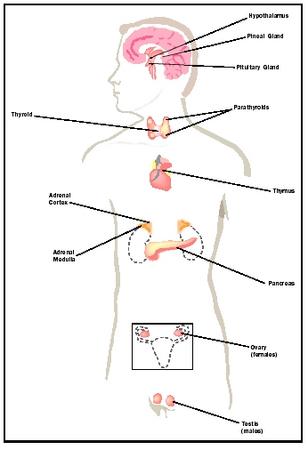
What do you prefer to learn with?
“I would honestly say that Kenhub cut my study time in half.”
–
Read more.
Kim Bengochea, Regis University, Denver
Author:
Charlotte O’Leary BSc, MBChB
•
Reviewer:
Dimitrios Mytilinaios MD, PhD
Last reviewed: May 31, 2021
Reading time: 9 minutes
Epithelia are a group of tissues derived from all three embryonic germ layers, which are involved in absorption, secretion, selective diffusion and physical protection. Epithelia primarily involved in secretion are arranged into structures known as glands. Glands are invaginations of epithelial tissue and can be divided into two main types:
- Exocrine glands
- Endocrine glands
This article will discuss the structure and function of exocrine and endocrine glands as well as examples of these glands. This will be followed by any relevant clinical pathology.
This will be followed by any relevant clinical pathology.
Exocrine glands
Exocrine glands release their secretions onto an epithelial surface via a duct. Exocrine glands consist of two main parts, a secretory unit and a duct. The secretory unit consists of a group of epithelial cells, which release their secretions into a lumen. A duct is lined with epithelium and is involved in transporting the secretions from the secretory unit to an epithelium-lined surface.
Classification by shape
Exocrine glands can be classified into a variety of categories in terms of their structure. They can be categorized according to the shape of their secretory unit. Secretory units shaped as a tube are referred to as tubular, whereas spherical units are referred to as alveolar or acinar, when the pancreas is involved.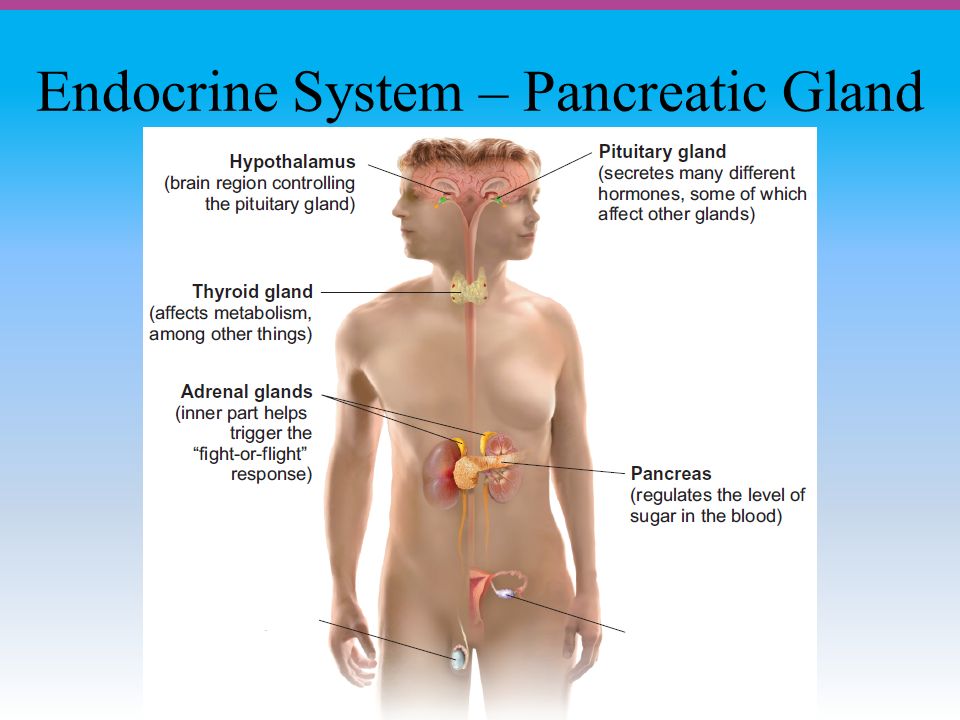 Exocrine glands can also be comprised of both tubular and alveolar secretory units and. In this case, they are referred to as tubuloalveolar. They can also be categorized according to whether their duct is branched or not. An unbranched duct is referred to as a simple gland, whereas a branched duct is known as a compound gland. An example of a simple gland is a sweat gland, whereas the pancreas is an example of a compound gland.
Exocrine glands can also be comprised of both tubular and alveolar secretory units and. In this case, they are referred to as tubuloalveolar. They can also be categorized according to whether their duct is branched or not. An unbranched duct is referred to as a simple gland, whereas a branched duct is known as a compound gland. An example of a simple gland is a sweat gland, whereas the pancreas is an example of a compound gland.
Compound tubuloalveolar mixed salivary gland (histological slide)
Classification by function
Exocrine glands can also be classified into a variety of categories in terms of their function. They can be categorised into 3 subtypes according to their type of secretory product:
- Serous glands
- Mucous glands
- Mixed glands
Serous glands produce serous fluid, a watery substance containing enzymes.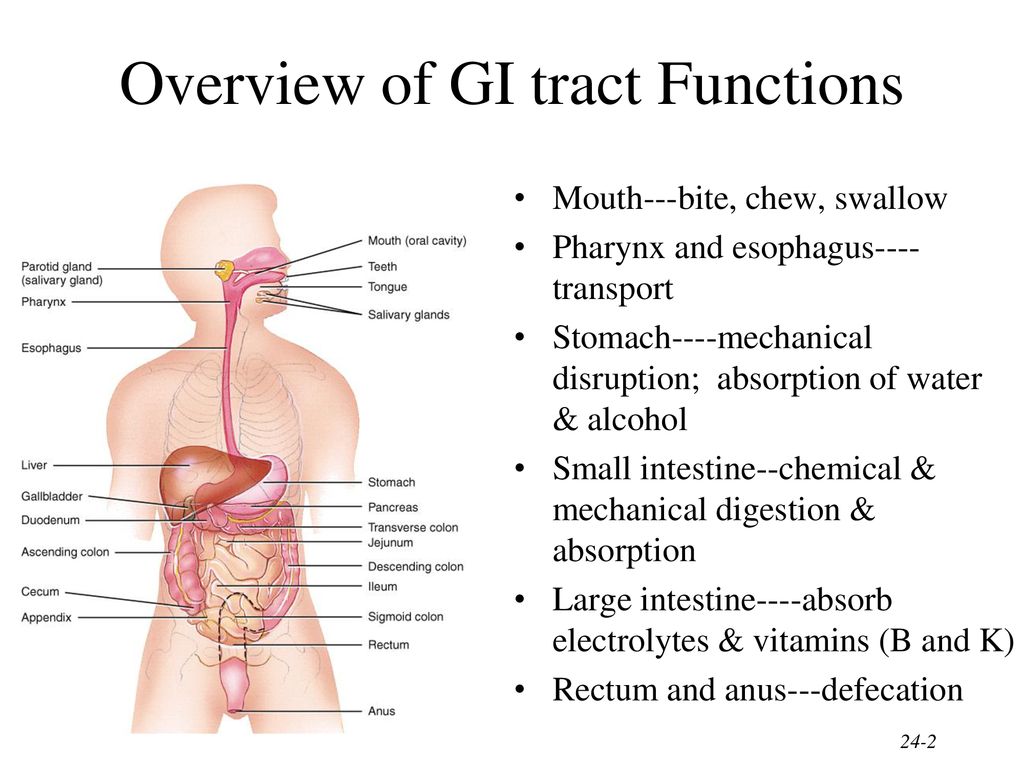 Mucous glands are involved in the production of mucus, a viscid (sticky) glycoprotein. Mixed glands are comprised of both serous and mucous glands and secrete a mixed substance containing both serous fluid and mucus.
Mucous glands are involved in the production of mucus, a viscid (sticky) glycoprotein. Mixed glands are comprised of both serous and mucous glands and secrete a mixed substance containing both serous fluid and mucus.
Mixed seromucous glands (histological slide)
Classification by secretion mechanism
Exocrine glands can also be categorised into another 3 subtypes according to their secretion mechanism:
- Merocine glands
- Apocrine glands
- Holocrine glands
Merocrine glands are the most common and release their secretory products via exocytosis. The major secretory products of these glands are usually proteins. Apocrine glands release their secretory products contained within membrane-bound vesicles. This type of secretion is rare and these glands are found in the breast and constitute some sweat glands. Holocrine glands release whole secretory cells, which later disintegrate to release the secretory products.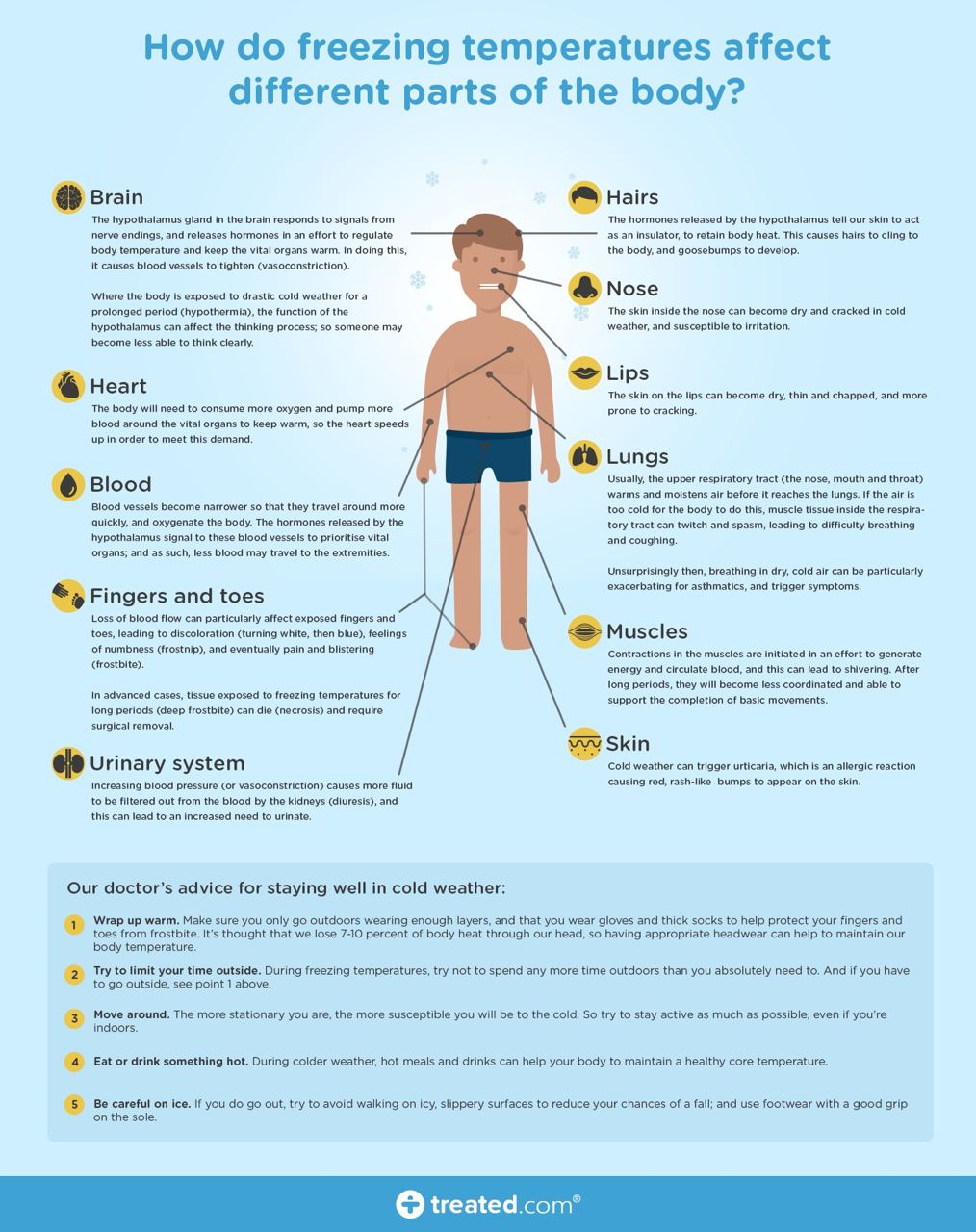 This type of secretion is seen in sebaceous glands associated with hair follicles.
This type of secretion is seen in sebaceous glands associated with hair follicles.
Apocrine sweat gland (histological slide)
The release of secretory products from the secretory unit is aided by some contractile cells, known as myoepithelial cells. These cells comprise characteristics of both muscle and epithelial cells and lie between the secretory unit and basement membrane. The cytoplasmic processes of these cells envelop the secretory unit so that contraction of these cells results in release of the secretory products from the secretory units and into the ducts. Release of secretory products occurs in response to stimulation by hormones or autonomic nerve impulses.
Endocrine glands
Endocrine glands release their secretory products directly into the bloodstream, rather than via a duct. These glands are surrounded by a strong connective tissue capsule, which has fibrous extensions known as trabeculae.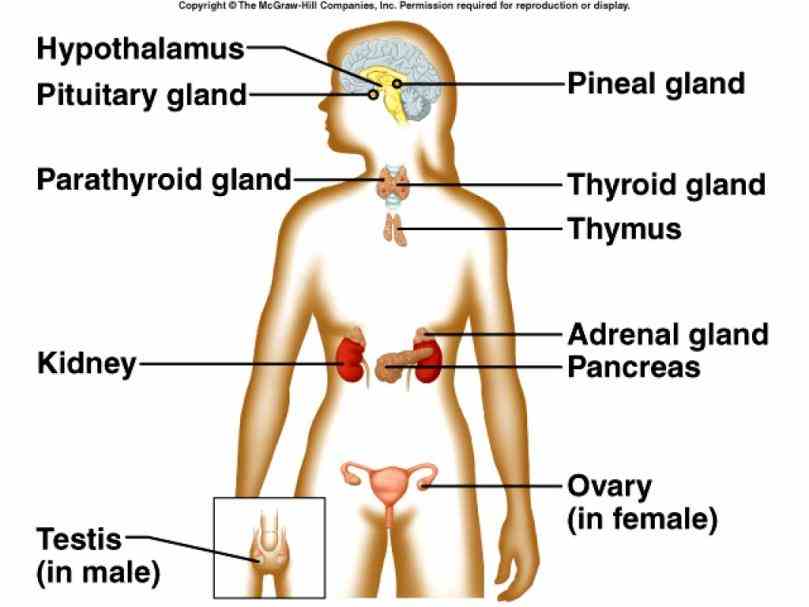 These trabeculae provide internal support and give the gland a lobular appearance. Endocrine glands release secretions known as hormones, which travel via the bloodstream to reach their target cells, where they elicit functional changes. The hormones are commonly stored intracellularly within secretory vesicles and are released intermittently via exocytosis. An exception to this is the thyroid gland, which stores its hormone extracellularly as an inactive precursor molecule. Secretion of hormones is usually regulated by negative feedback, where a rise in the level of hormone in the blood decreases its secretion.
These trabeculae provide internal support and give the gland a lobular appearance. Endocrine glands release secretions known as hormones, which travel via the bloodstream to reach their target cells, where they elicit functional changes. The hormones are commonly stored intracellularly within secretory vesicles and are released intermittently via exocytosis. An exception to this is the thyroid gland, which stores its hormone extracellularly as an inactive precursor molecule. Secretion of hormones is usually regulated by negative feedback, where a rise in the level of hormone in the blood decreases its secretion.
Sebaceous glands
Sebaceous glands are simple, branched, acinar, exocrine glands located within the skin. They secrete a fatty substance sebum, into the follicular duct, which surrounds the hair shaft. Sebum helps keep the skin flexible and prevents water loss. These are known as holocrine glands, as sebum is released when the secretory cells degenerate.
Sebaceous gland (histological slide)
Pituitary gland
The pituitary gland is a small endocrine gland within the brain involved in hormone synthesis and regulation. It consists of two parts, the anterior pituitary or adenohypophysis, and the posterior pituitary, or neurohypophysis. The anterior pituitary secretes:
- growth hormone (GH)
- prolactin
- adenocorticotrophic hormone (ACTH)
- follicle-stimulating hormone (FSH)
- luteinising hormone (LH)
- thyroid-stimulating hormone (TSH)
ACTH and TSH travel to their target organs, the adrenal gland and the thyroid gland, respectively in order to stimulate the release of further hormones. The posterior pituitary secretes antidiuretic hormone (ADH), otherwise known as vasopressin, and oxytocin.
Pituitary gland (anterior view)
Pancreas
The pancreas is an organ comprised of both exocrine and endocrine glands.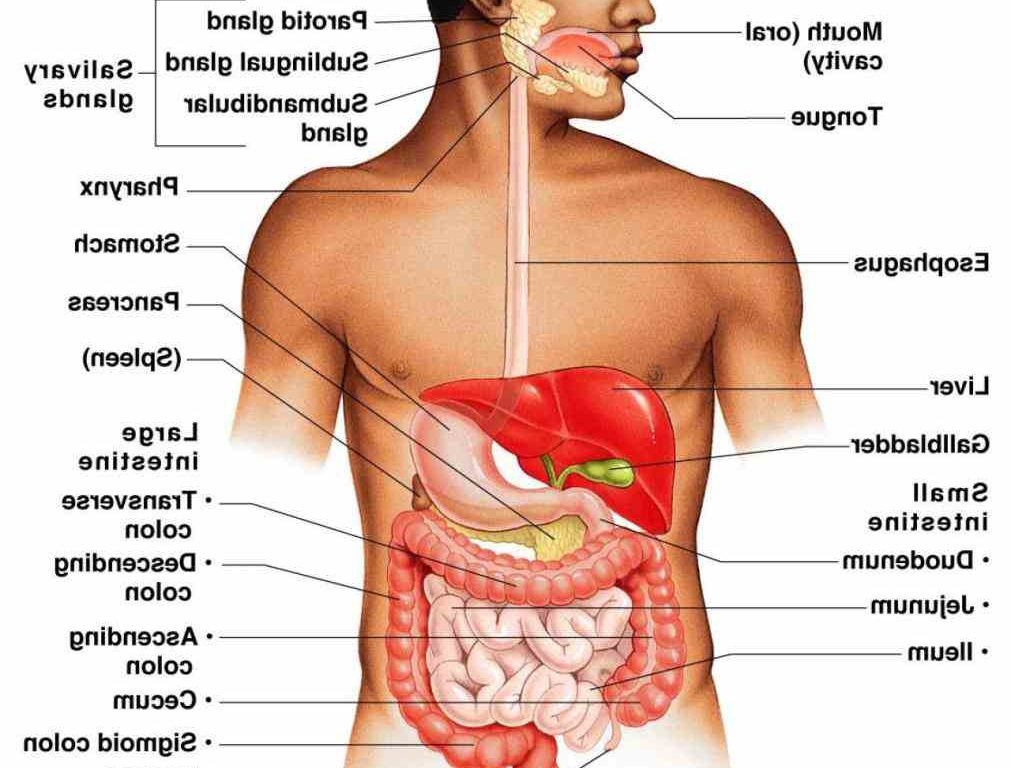 The majority of the pancreas has an exocrine function and secretes an enzyme-rich alkaline fluid into the pancreatic duct, which joins the common bile duct before emptying into the duodenum. The exocrine glands secrete the proteolytic enzymes trypsinogen and chymotrypsinogen, which are activated to trypsin and chymotrypsin in the duodenum and aid in digestion.
The majority of the pancreas has an exocrine function and secretes an enzyme-rich alkaline fluid into the pancreatic duct, which joins the common bile duct before emptying into the duodenum. The exocrine glands secrete the proteolytic enzymes trypsinogen and chymotrypsinogen, which are activated to trypsin and chymotrypsin in the duodenum and aid in digestion.
Pancreas (anterior view)
The exocrine pancreas also secretes bicarbonate ions, which neutralise the acidic chyme as it reaches the duodenum. There are also clusters of endocrine glands located within the exocrine tissue and these are referred to as islets of Langerhans. The two main hormones released from the endocrine glands of the pancreas are insulin and glucagon. The pancreas also secretes:
- somatostatin
- vasoactive intestinal peptide (VIP)
- pancreatic polypeptide (PP)
- motilin
- serotonin
- substance P in smaller quantities
Other glands
Other examples of glands include:
- sweat glands
- salivary glands
- the thyroid gland
- parathyroid glands
- the pineal gland
- adrenal glands
Adrenal glands (anterior view)
Clinical notes
Adenocarcinomas
Adenocarcinomas are malignant tumours that arise from glandular epithelium and are common in the gastrointestinal system, uterus, lungs, breast and prostate. They consist of abnormal glands and can secrete mucus. They are usually diagnosed by a biopsy, a CT scan or by an MRI scan. Treatment can involve solely surgery, chemotherapy or radiotherapy or a combination of these.
They consist of abnormal glands and can secrete mucus. They are usually diagnosed by a biopsy, a CT scan or by an MRI scan. Treatment can involve solely surgery, chemotherapy or radiotherapy or a combination of these.
Adenomas
Adenomas are the benign counterparts of adenocarcinomas and are commonly found in the pituitary gland. Pituitary adenomas do not invade the surrounding tissues, but they can have serious consequences due to compression on surrounding structures such as the optic chiasm, which can lead to visual problems. They can also secrete hormones such as ACTH, which can lead to Cushing’s disease, or GH, which can lead to gigantism in children and acromegaly in adults.
Gland hyperfunction
Hyperfunctioning of an endocrine gland such as the thyroid gland, pituitary gland or adrenal gland can lead to increased secretion of hormones. An example of this is Grave’s disease, which is due to an overproduction of thyroid hormones and can cause symptoms such as irritability, weight loss, tremor and a rapid heartbeat. Treatment can involve pharmacotherapy such as carbimazole or propylthiouracil, surgery or radioiodine therapy.
Treatment can involve pharmacotherapy such as carbimazole or propylthiouracil, surgery or radioiodine therapy.
Gland hypofunctioning
A hypofunctioning endocrine gland can also occur resulting in a reduced production of hormones. An example of this is hypopituitarism, where production of one or more of the hormones of the pituitary gland, is reduced. Symptoms are related to the hormones involved and can include short stature (GH deficiency), polyuria (ADH deficiency) and weakness (ACTH deficiency). Treatment can involve hormone replacement, surgery or radiation therapy.
Another example of a disease due to hypofunction is type I diabetes mellitus, where autoimmune destruction of the beta cells of the pancreas leads to reduced insulin in the bloodstream. This can lead to polyuria (increased urination) and polydipsia (Increased thirst) due to a reduction in glucose storage. Treatment involves daily insulin injections and blood glucose monitoring to try and prevent complications such as diabetic nephropathy (kidney damage) and diabetic neuropathy (damage to the nerves).
Glands: want to learn more about it?
Our engaging videos, interactive quizzes, in-depth articles and HD atlas are here to get you top results faster.
What do you prefer to learn with?
“I would honestly say that Kenhub cut my study time in half.”
–
Read more.
Kim Bengochea, Regis University, Denver
Show references
References:
-
Abdullah et al: Sebaceous gland. Encyclopaedia Britannica (accessed Aug 23, 2015) -
B. Young, J.S. Lowe, A. Stevens, J.W. Heath: Wheater’s Functional Histology: A Text and Colour Atlas, 5th Edition, Churchill Livingstone (2006), p. 82, 95-99, 299, 328-30, 332. -
Cancer Treatment Centers of America: Adenocarcinoma. Cancer Treatment Centers of America (accessed Aug 23, 2015) -
D.H. Cormack: Essential Histology, 2nd Edition, Lippincott Williams & Wilkins (2001), p. 105-112. -
R. Khardori: Type 1 Diabetes Mellitus. Medscape (accessed Aug 23, 2015)
Khardori: Type 1 Diabetes Mellitus. Medscape (accessed Aug 23, 2015)
Illustrators:
- Pituitary gland (anterior view) – Begoña Rodriguez
- Pancreas (anterior view) – Begoña Rodriguez
- Adrenal glands (anterior view) – Begoña Rodriguez
© Unless stated otherwise, all content, including illustrations are exclusive property of Kenhub GmbH, and are protected by German and international copyright laws. All rights reserved.
90,000 Iron in the body: why is it needed and how to get it
The body is often deficient in iron. This is due to the low bioavailability of iron – upon contact with oxygen, iron forms oxides that are poorly soluble and therefore difficult to be absorbed by the body.
Causes of iron deficiency
Iron deficiency occurs as a result of depletion of iron stores, when the absorption of iron over a long period does not keep pace with metabolic requirements for iron, or there is a sharp loss of iron associated with blood loss.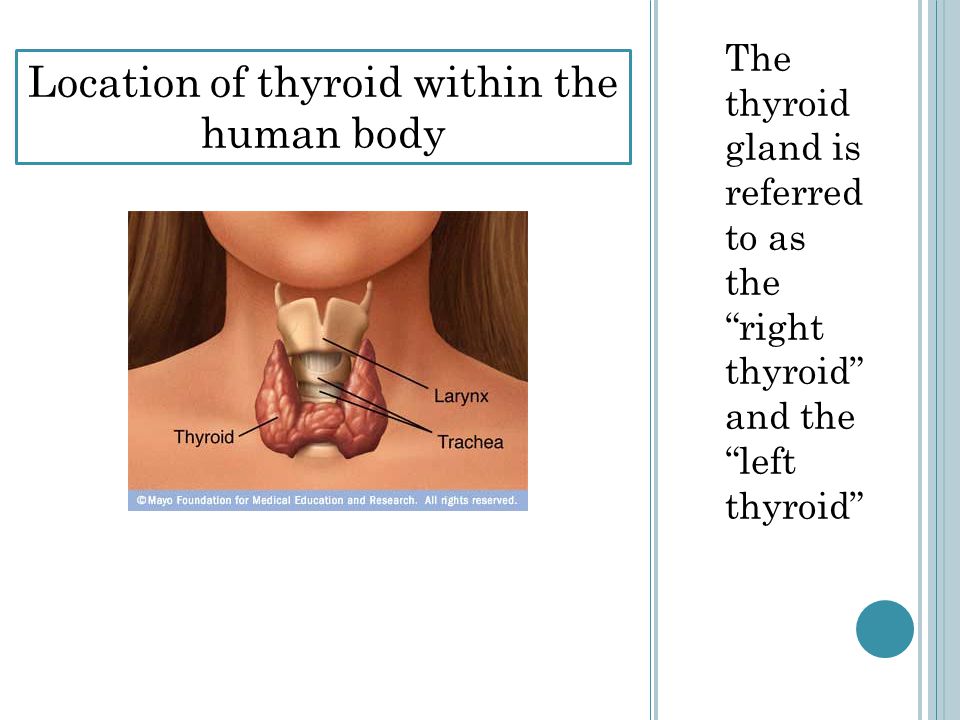
Main causes of iron deficiency:
- copious menstrual or uterine blood loss,
- blood loss during surgery,
- for anticoagulants or antiplatelet agents,
- frequent donations,
- Vegetarianism and Anorexia,
- chronic diseases with impaired absorption of iron (various gastroenterological pathologies, chronic heart failure, renal failure).
Risk group – pregnant women, premature babies and children during periods of intensive growth, women with heavy periods and vegetarians.Iron deficiency is very common in adolescent girls because menstrual iron loss is superimposed on the need for rapid growth.
When the body’s iron stores are insufficient, hemoglobin synthesis is disrupted, and symptoms of iron deficiency and anemia appear.
Most common symptoms of iron deficiency or anemia
- fatigue and lack of energy,
- dyspnea on normal exertion,
- noticeable heartbeat (palpitations),
- pale skin, gums and oral mucosa.

Less common symptoms
- Difficulty concentrating,
- unusual taste preferences (craving to gnaw ice, eat chalk, glue or earth),
- Severe dry mouth, cracks in the corners of the mouth and flattened tongue,
- headache and memory impairment,
- cold intolerance (constantly cold hands and feet),
- decreased immunity,
- easy bruising and bleeding on the skin,
- dry skin, brittle nails and hair loss,
- restless legs syndrome.
Consequences of iron deficiency
Iron deficiency is a decrease in the level of iron in the body while maintaining a normal concentration of hemoglobin, when its level is still sufficient for the production of red blood cells, but other organs and tissues suffer from iron deficiency.
If the reserves are not replenished, then a more serious disease develops – iron deficiency anemia. This is a condition when iron is not enough for the formation of hemoglobin in erythrocytes, its level and the amount of carried oxygen decrease, which means oxygen starvation of the tissues of the whole organism occurs.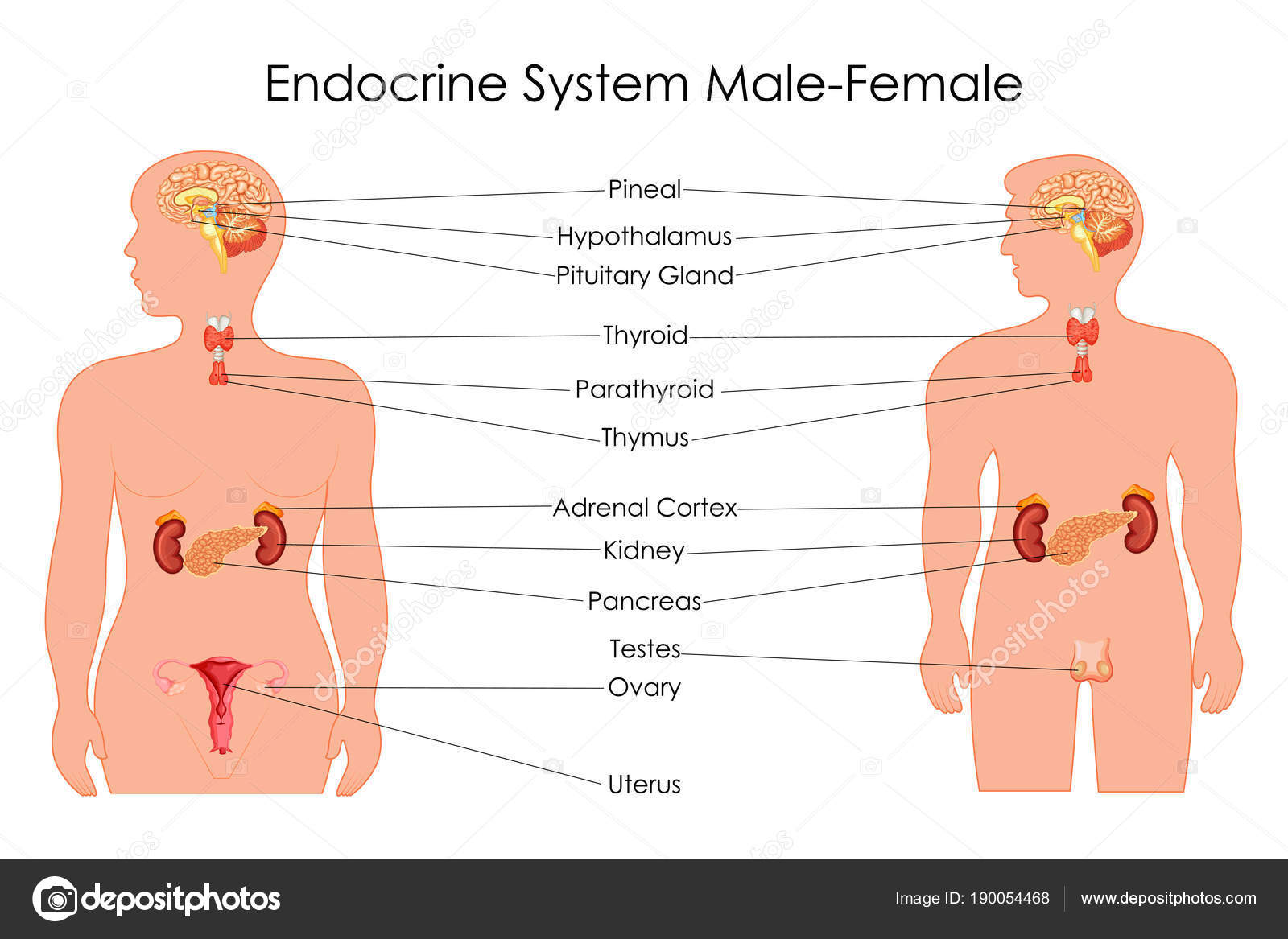
According to the statistics of the World Health Organization, a third of women of childbearing age have anemia, as well as 42% of children under five years of age.
The less iron, the lower the concentration of hemoglobin in the erythrocyte, the more severe the anemia and hypoxia. Even mild to moderate forms of anemia can be associated with functional impairments that affect cognitive development, immune mechanisms, learning ability and performance.
Risks of iron deficiency during pregnancy
Iron deficiency is dangerous during pregnancy – the need for the mother’s body itself increases and the fetus grows – iron deficiency anemia is rapidly aggravated.
Risks for a woman:
- Placental underdevelopment,
- spontaneous abortion,
- premature birth,
- the likelihood of developing severe postpartum hemorrhage.
Risks to the child:
- intrauterine growth retardation,
- high risk of intrauterine death,
- low birth weight or prematurity,
- Delayed neurocognitive development after birth (lagging behind in development and learning ability).

90,000 Functions of the endocrine glands in the human body. Tests for hormones and their decoding
The human endocrine system consists of organs called endocrine glands, which regulate the work of the whole organism through the release of biologically active substances – hormones into the circulatory system. These substances perform paramount functions in the body: they help maintain homeostasis, control growth and development, participate in metabolic processes, are responsible for responding to changes in environmental conditions, and regulate the reproductive system.
Endocrine glands include:
Thyroid gland. Produces hormones – thyroxine (T4), triiodothyronine (T3), calcitonin. These hormones are involved in the metabolism, increasing its intensity, regulate growth processes in the body, and increase the level of vital oxygen consumption by organs and tissues.
Parathyroid glands. Produce parathyroid hormone, which regulates the level of calcium in the body, which is necessary for the normal functioning of the locomotor system and the nervous system.
Thymus (thymus). This organ is central to the human immune system, it is not for nothing that the word “thymus” is translated from ancient Greek as “life force”. The thymus produces T-lymphocytes – immune cells that provide antiviral and antitumor protection of the body. It releases a number of hormones into the bloodstream: thymalin, thymosin, IGF-1, thymopoietin, which are responsible for the functional activity of the immune system.
Adrenal glands. Produce the so-called stress hormone – adrenaline, which is involved in the body’s response to external stressful situations.When a large amount of adrenaline is released into the blood, breathing quickens, heart rate increases, blood vessels narrow, pupils dilate.
Pancreas. Is the main source of enzymes for the digestion of fats, proteins and carbohydrates. It produces hormones insulin, which lowers the level of glucose in the blood, and glucagon, on the contrary, increases it.
Sex glands. In women – ovaries, in men – testes. The hormones produced by these glands are responsible for reproductive function.
Pituitary gland and hypothalamus. Form the hypothalamic-pituitary system. The pituitary gland produces hormones that control the functioning of almost the entire endocrine system. Among them, growth hormone is especially important – somatotropin, which has an effect on the growth of bones, cartilage and muscles.
Epiphysis (pineal gland). The organ performs important functions: it slows down growth hormones, inhibits the development of tumors, and affects sexual development. It produces antidiuretic hormone (ADH), which controls the body’s water balance, oxytocin, which is responsible for muscle contraction, and melatonin, a hormone that controls the sequence of sleep phases.
Based on the foregoing, we can follow the conclusion that the significance of the endocrine system cannot be overestimated – its activity extends to all organs of the body and all processes occurring in it. Therefore, all deviations from the norm in the operation of this system require immediate medical attention.
Therefore, all deviations from the norm in the operation of this system require immediate medical attention.
Symptoms of hormonal disruption
There are a great many symptoms of malfunctioning of the endocrine glands, among them:
- Irregular or absent menstruation in women;
- Miscarriage or infertility;
- Loss of sex drive;
- Increase in body weight;
- Rash on the body, acne;
- Deterioration of hair and nails;
- Sleep disturbances, lethargy, increased fatigue;
- Emotional instability: tearfulness, irascibility, nervousness;
- The development of osteoporosis is a disease that leads to fragility of bones.
It should be noted that none of the above symptoms is a direct confirmation of the presence of a hormonal failure, but only a possible consequence. To make an accurate diagnosis, it is necessary to undergo a full examination by an endocrinologist, which includes a method of functional diagnostics (ultrasound, MRI), as well as laboratory blood tests, which will be discussed below.
How is blood donated for hormones?
A blood test for hormones is the most indicative and informative method for detecting any pathologies in the work of the endocrine glands.However, it is important to take into account that many factors affect the hormonal background: time of day, menstrual cycle in women, medication intake. For this reason, the preparation for the delivery of tests for hormonal research should be taken very seriously. If this is neglected, then the result of the analysis may be incorrect and, at best, it will have to be retaken, and at worst, on its basis, an incorrect diagnosis may be made and the wrong treatment prescribed, which can lead to irreparable consequences.
To prepare blood donation for hormones, the following general rules must be observed:
- On the eve of delivery, you should give up physical exertion, try to avoid stressful situations, stop any physiotherapy procedures, exclude the use of oral contraceptives, the use of alcohol, fatty foods and products containing iodine.
 It is also recommended to postpone the ECG, ultrasound, X-ray examination for a while after the analysis.
It is also recommended to postpone the ECG, ultrasound, X-ray examination for a while after the analysis. - An important point is taking medications – it is necessary to notify the doctor who prescribed the hormonal blood test about the fact of taking medications. He will decide to cancel or continue taking medications at the time of the test.
- The analysis for hormonal research is taken strictly on an empty stomach. Therefore, it is recommended to stop eating 12 hours before blood sampling.
- In the morning, chewing gum, drinking tea and smoking is prohibited.
- Immediately before donating blood, you should rest for 15-10 minutes.
- Women need to consider their menstrual cycle because it is possible to test blood for some hormones only in certain periods of this cycle.
- To trace the dynamics of indicators of the level of certain hormones, a repeated analysis is required. He surrenders at about the same time as the previous one, subject to all of the above rules.

Blood sampling for analysis is carried out in the morning in the morning. The biomaterial is taken from the cubital vein.
Interpretation of analyzes
Thyroid hormones
Triiodothyronine , or T3 – gives a general assessment of the thyroid gland. This hormone is determined both in free form (norm: from 2.6 to 5.7 pmol / l.), And in the serum state, (general form; norm: from 1.3 to 2.7 nmol / l). An increase in the indicator indicates the use of drugs: methadone, heroin, amphetamine, HIV infection, renal failure, hyperthyroidism.A decrease was found with the use of androgens, danazol, dexamethasone, propranolol.
Thyroxin , or T4 – regulates energy metabolism in the body. Norm: 10.8 – 22.0 pmol / l. A low level is observed with hyperthyroidism, hemolysis. The increased level – when taking oral contraceptives, methodon, heroin, estrogens.
Thyroglobulin , or Tg – is prescribed for suspected malignant neoplasms. Norm: <55 ng / ml.
Norm: <55 ng / ml.
Antibodies to thyroglobulin – are prescribed for suspected autoimmune thyroid disease.Norm: 0 – 18 U / ml.
Microsomal antibodies – the most accurate indicator of the presence of autoimmune diseases. A deviation from the norm <5.6 U / ml is evidence of the aggression of the immune system to its own body.
Thyroxine-binding globulin , or TSH – is responsible for the transport of hormones T3 and T4. Norm: from 16.8 to 22.5 μg / ml. An increased indicator may indicate pregnancy, a lower one – with cirrhosis of the liver.
Adrenal hormones
Cortisol – regulates carbohydrate metabolism.Norm: from 230 to 750 nm / l. A low indicator may be the result of chronic adrenal insufficiency, and a high indicator may indicate oncology or adenoma.
Aldosterone – responsible for the water-salt balance. Norms: in a horizontal position 17.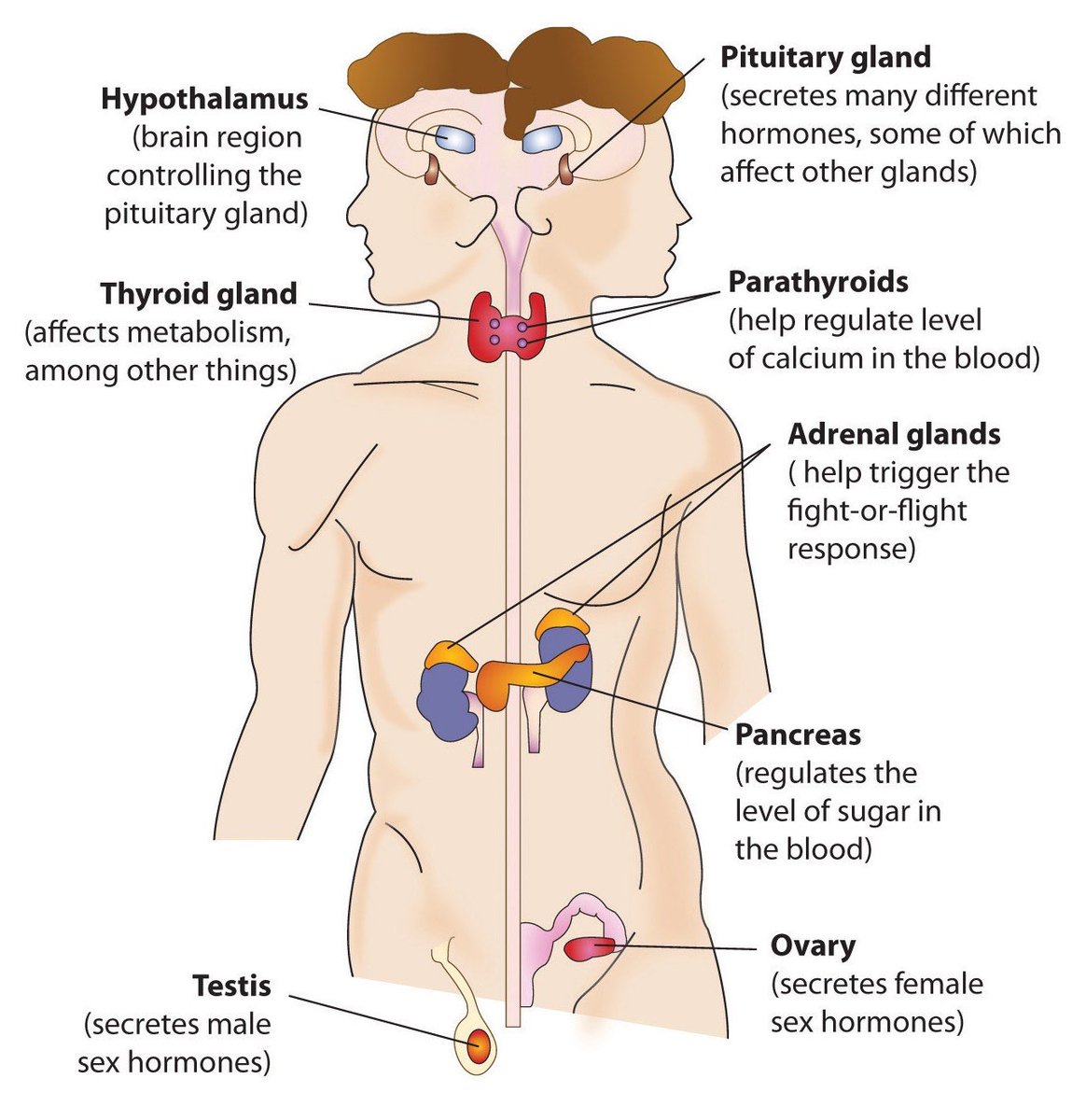 6-230.2 pg / ml; in an upright position 25.2-392 pg / ml. An elevated level of the hormone in the blood usually indicates an adrenal tumor.
6-230.2 pg / ml; in an upright position 25.2-392 pg / ml. An elevated level of the hormone in the blood usually indicates an adrenal tumor.
Norepinephrine and adrenaline – normalize heart rate, blood pressure, and form glucose levels.Norms: from 1.92 to 2.46 nm / l for epinephrine, from 0.62 to 3.23 nm / l for norepinephrine. An increase in indicators indicates kidney disease, Itsenko-Cushing’s syndrome, emotional and physical workload of the body, a decrease – the pathology of the hypothalamus.
Sex hormones
Estradiol – is responsible for the production of germ cells and the proper development of pregnancy. The norm in the first phase of the menstrual cycle (follicular phase) is from 200 to 285 pm / l, the norm in the corpus luteum phase (luteal phase) is from 440 to 575 pi / l, with menopause from 50 to 133 pm / l.A lower indicator may indicate a tumor in the ovaries, an increased one – with their insufficient functioning.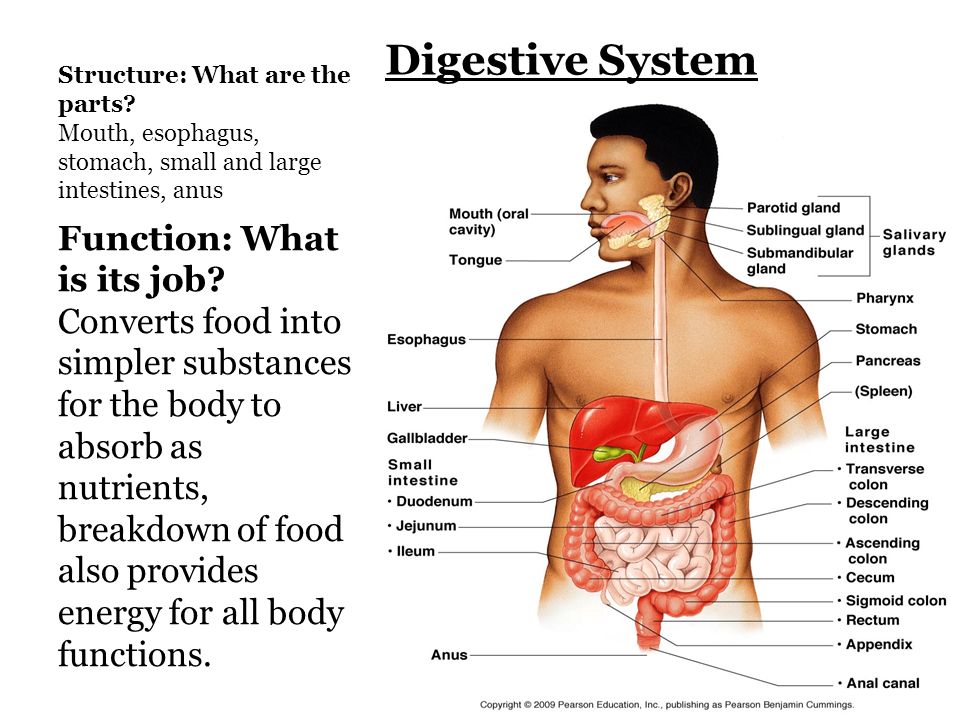
Testosterone is the main male hormone. Responsible for the formation of secondary sexual characteristics, stimulates the growth of muscle mass and bones. Norms: for men – 2-10 ng / ml, for women – 0.2 – 1 ng / l.
Progesterone – ensures the correct development of the genital organs in women. The norm in the first phase of the menstrual cycle (follicular phase) from 1 to 2.2 nm / l, the norm in the corpus luteum phase (luteal phase) from 23 to 30 nm / l, with menopause from 1 to 1.8 nm / l …An increase in the indicator is observed with tumors of the adrenal cortex, a decrease – with ovarian sclerosis.
Pituitary hormones
Thyroid stimulating hormone , or TSH – stimulates the production of the main thyroid hormones, therefore deviations from the reference values indicate thyroid dysfunction. Norm: 0.4-4.0 mU / l.
Growth hormone , or STH – the hormone of the anterior pituitary gland, is responsible for stimulating the mouth of bones, muscle mass and other organs of the human body. Norm: <10.0 ng / ml. Exceeding the value from the established norm indicates gigantism, acromegaly.
Norm: <10.0 ng / ml. Exceeding the value from the established norm indicates gigantism, acromegaly.
Adrenocorticotropic hormone , or ACTH – stimulates the synthesis of hormones in the adrenal cortex. Norm: <46 pg / ml. Deviations from the norm are observed in Itsenko-Cushing's syndrome, Addison's disease, as well as in other disorders of the adrenal glands.
Prolactin is a hormone responsible for the growth of the mammary glands in women and the functioning of the prostate in men. The norm for the stronger sex is 100 – 265 mcg / l, for the fair sex – from 130 to 540 skg / l during the childbearing period.
Follicle-stimulating hormone , FSH – stimulates the growth of follicles in women, is responsible for the work of the seminiferous tubules in men. The norm in women: in the first phase of the menstrual cycle (follicular phase) from 1.37 – 9.90 IU / l, in the phase of the corpus luteum (luteal phase) from 1. 09 – 9.20 IU / ml, with menopause from 29, 5 to 55 IU / l, with ovulation from 2.7 to 6.7 IU / ml. The norm in men: 0.95 – 11.95 mU / ml.
09 – 9.20 IU / ml, with menopause from 29, 5 to 55 IU / l, with ovulation from 2.7 to 6.7 IU / ml. The norm in men: 0.95 – 11.95 mU / ml.
Luteinizing hormone , or LH – stimulates the production of testosterone in men, progesterone in women.Normal values for men: 1.14 to 8.75 mU / ml. The norm for women: in the follicular phase from 1.68 to 15.00 mU / ml, in the ovulatory phase from 21.90 to 56.60 mU / ml, in the luteal phase: 0.61 – 16.30 mU / ml, in postmenopausal women from 14.20 – 52.30 mU / ml. Deviations from normal values in both sexes indicate dysfunction of the gonads.
Influence of the thymus on our body
Perhaps it only seems to us, or perhaps it is true. The older a person becomes, the more he is susceptible to various injuries and illnesses.This is probably because when we were young, there was something in our body that could protect us from health problems. There are many different organs, glands, muscles, bones in the human body, but none of these parts of the human body will ever become useless for us.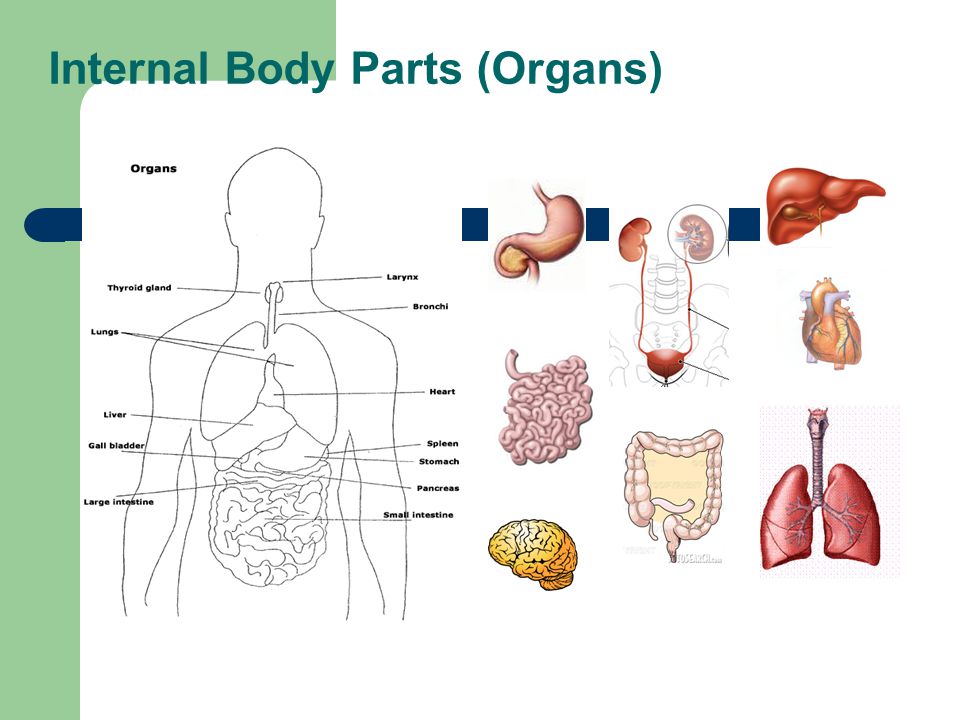 But there is one gland that becomes unnecessary with age. Not unnecessary in the literal sense, because it is very important for our body, unnecessary in the sense that other organs begin to perform some of its functions.
But there is one gland that becomes unnecessary with age. Not unnecessary in the literal sense, because it is very important for our body, unnecessary in the sense that other organs begin to perform some of its functions.
What is the endocrine system?
The endocrine system of the human body consists of a set of endocrine glands, that is, endocrine glands that produce substances – hormones.Major endocrine glands include the hypothalamus, pituitary, pineal gland, thyroid gland, parathyroid glands, pancreas, adrenal glands, sex glands, and tissue hormones. Finally, there remains the iron that we are talking about, the iron, which, unlike the rest, will not be with us all our life.
Thymus, thymus gland, infant gland …
Whatever you say, this is an important part of our body. In some languages, the thymus is called the “infant gland”, because this gland is most productive in childhood.We even know that this gland develops long before birth and works at a time when the brain, heart and liver are not yet fully functional.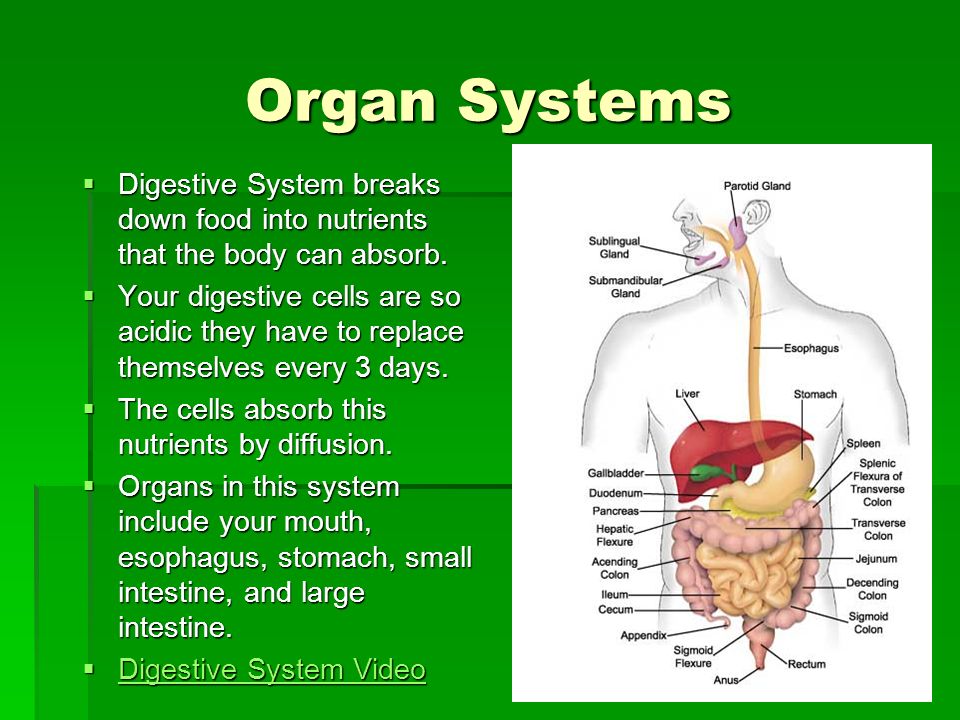 The thymus (gr. Thymos = soul) is located in the upper part of the chest just behind the sternum, in front of the trachea. In children, its location varies: the thymus can be located both near the thyroid gland and near the heart. After the onset of puberty, the thymus undergoes significant atrophy and becomes covered with fat. After 30 years – we don’t even remember that we had a thymus. However, we realize that our body cannot defend itself when the common flu puts us to bed for an entire week.
The thymus (gr. Thymos = soul) is located in the upper part of the chest just behind the sternum, in front of the trachea. In children, its location varies: the thymus can be located both near the thyroid gland and near the heart. After the onset of puberty, the thymus undergoes significant atrophy and becomes covered with fat. After 30 years – we don’t even remember that we had a thymus. However, we realize that our body cannot defend itself when the common flu puts us to bed for an entire week.
Influence of the thymus gland on immunity
The thymus is most active in children under five years of age. The function of the thymus is to differentiate and clone T-lymphocytes, which are responsible for cellular immunity. T-lymphocytes are white blood cells, the main regulatory cells of acquired immunity. They are able to destroy bacteria, viruses, resulting in the formation of healthy cells, and the body recovers. In addition, the thymus controls lymphopoiesis, therefore the growth, maturation and acquisition of immune competence occurs not only in the thymus, but also in other lymph organs and, thus, increases the potential of our body to protect against various pathogenic microorganisms.
No matter how carefully we take care of our body, we will still lose this gland, whether we like it or not. With the onset of adolescence, the thymus transfers some of its functions to the sex glands. By the age of thirty, the gland completely ceases to function and is covered with a layer of fat. Currently, we cannot ignore such an important process as the multiplication of T-lymphocytes. You need to give your body the adequate immune support it deserves.
Small glossary ALAGENEX life
Endocrine system – glandular system with internal secretion (excretion)
Epophysis – pineal gland, produces the hormone melatonin
Hypothalamus – part of the diencephalon, forms the base and walls of the lower part of the third ventricle.Regulates the endocrine system.
The pituitary gland is an appendage of the brain, a gland with internal secretion. It coordinates the rest of the glands, produces hormones that affect growth, metabolism and reproductive function.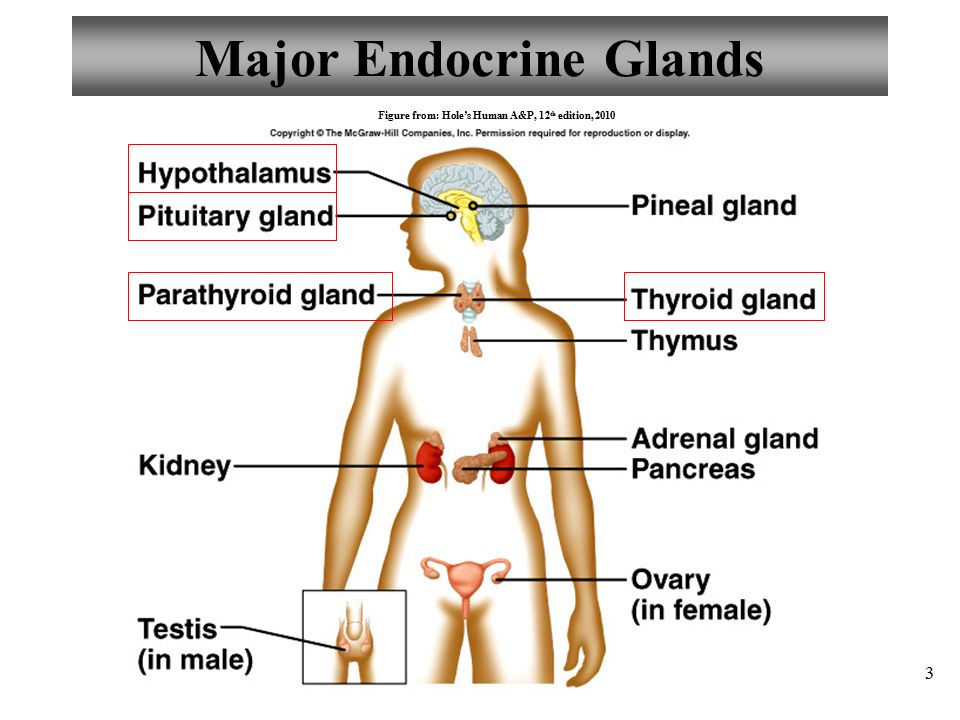
Lymphopoiesis – formation of lymphocytes
Thymus – the gland in which maturation occurs, differentiation immunological “training” of T-cells
T-lymphocyte is a type of lymphocyte, white blood cells. The main regulatory cell of acquired immunity
Physicians have discovered an organ unknown to science in the human body
https: // ria.ru / 20201021 / organ-1580781620.html
Physicians discovered an organ unknown to science in the human body
Physicians discovered an organ unknown to science in the human body – RIA Novosti, 23.10.2020
Physicians discovered an organ unknown to science in the human body
The Netherlands Cancer Institute found a human organ not described in any study. The corresponding work was published in the journal … RIA Novosti, 23.10.2020
2020-10-21T11: 17
2020-10-21T11: 17
2020-10-23T22: 21
health – society
discoveries – ria science
netherlands
/ html / head / meta [@ name = ‘og: title’] / @ content
/ html / head / meta [@ name = ‘og: description’] / @ content
https : // cdn23. img.ria.ru/images/147358/77/1473587709_0:209:4000:2459_1920x0_80_0_0_c6be54f47a728a2519898587147bf253.jpg
img.ria.ru/images/147358/77/1473587709_0:209:4000:2459_1920x0_80_0_0_c6be54f47a728a2519898587147bf253.jpg
MOSCOW, October 21 – RIA Novosti. Scientists from the Netherlands Cancer Institute have found a human organ not described in any study. Corresponding work was published in the journal Radiotherapy and Oncology. Specialists examined patients using a combination of positron emission tomography and computed tomography. They injected radioactively labeled glucose into the body to detect tumors.But as a result, they found a fourth pair of salivary glands in the images, which also reacted to the injected drug. This organ was found in all 100 patients examined using the PSMA PET / CT scanner. The discovery was confirmed by the autopsy of two bodies, male and female. As the researchers note, it was believed that there are only three large pairs of salivary glands in the human body – parotid, submandibular and sublingual. Since the detected pair is located behind the tubal ridge of the pharynx, practically in the center of the head, experts called the glands tubular.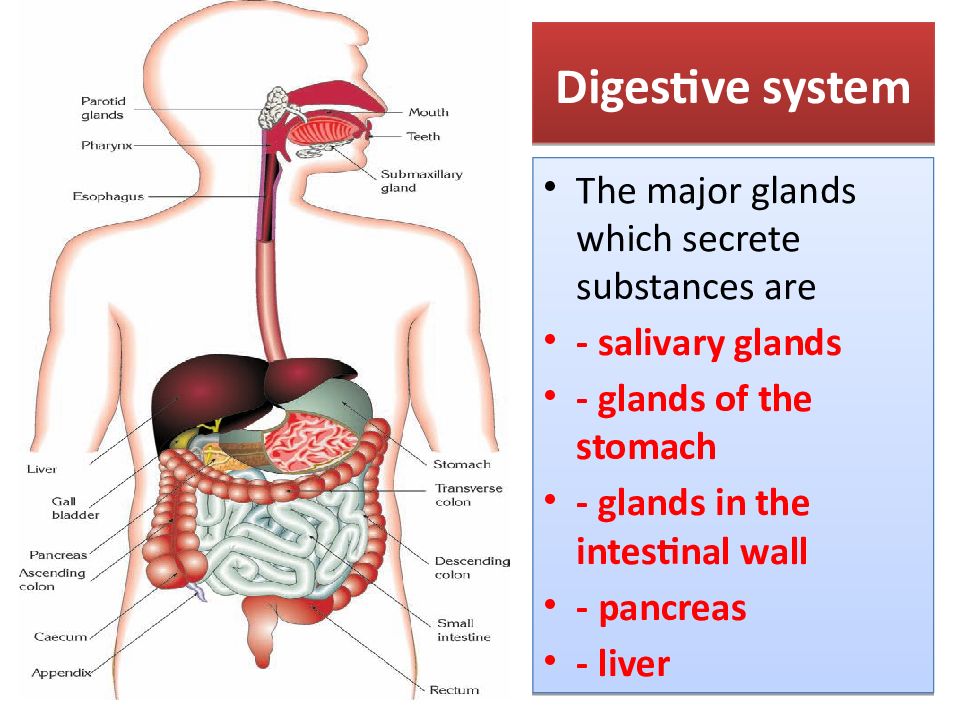 It is assumed that before they were not noticed due to the inconvenient location for research.
It is assumed that before they were not noticed due to the inconvenient location for research.
https://ria.ru/20200924/altsgeymer-1577702959.html
Netherlands
RIA Novosti
7 495 645-6601
FSUE MIA “Russia Today”
https: //xn--c1acbl2abdlkab1og.xn--p1ai/awards/
2020
RIA Novosti
7 495 645-6601
FSUE MIA “Russia Today”
https : // xn – c1acbl2abdlkab1og.xn – p1ai / awards /
News
ru-RU
https://ria.ru/docs/about/copyright.html
https: //xn--c1acbl2abdlkab1og.xn--p1ai/
RIA Novosti
7 495 645-6601
FSUE MIA Rossiya Segodnya
https: //xn--c1acbl2abdlkab1og.xn--p1ai/awards/
https: // cdn21 .img.ria.ru / images / 147358/77 / 1473587709_222: 0: 3778: 2667_1920x0_80_0_0_3faf7d26d0454fd886ea46b154c03662.jpg
RIA Novosti
internet-group@rian.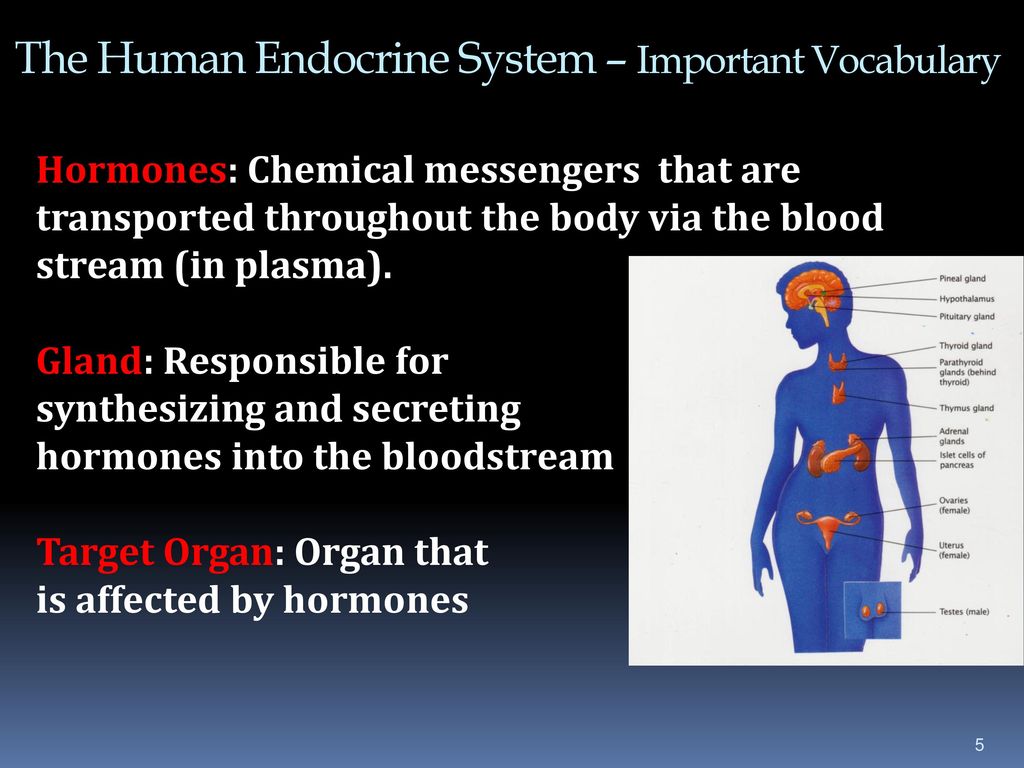 ru
ru
7 495 645-6601
FSUE MIA Rossiya Segodnya
https: //xn--c1acbl2abdlkab1og.xn--p1ai/awards/
RIA Novosti
7 495 645-6601
FSUE MIA “Russia Today”
https: //xn--c1acbl2abdlkab1og.xn--p1ai/awards/
health – society, discoveries – RIA Nauka, the Netherlands
MOSCOW, October 21 – RIA Novosti. Scientists from the Netherlands Cancer Institute have found a human organ not described in any study. Corresponding work was published in the journal Radiotherapy and Oncology.
Specialists performed examination of patients, combining positron emission and computed tomography. They injected radioactively labeled glucose into the body to detect tumors. But as a result, they found a fourth pair of salivary glands in the pictures, which also reacted to the injected drug.
This organ was found in all 100 patients examined with the PSMA PET / CT scanner. The discovery was confirmed by the autopsy of two bodies, male and female.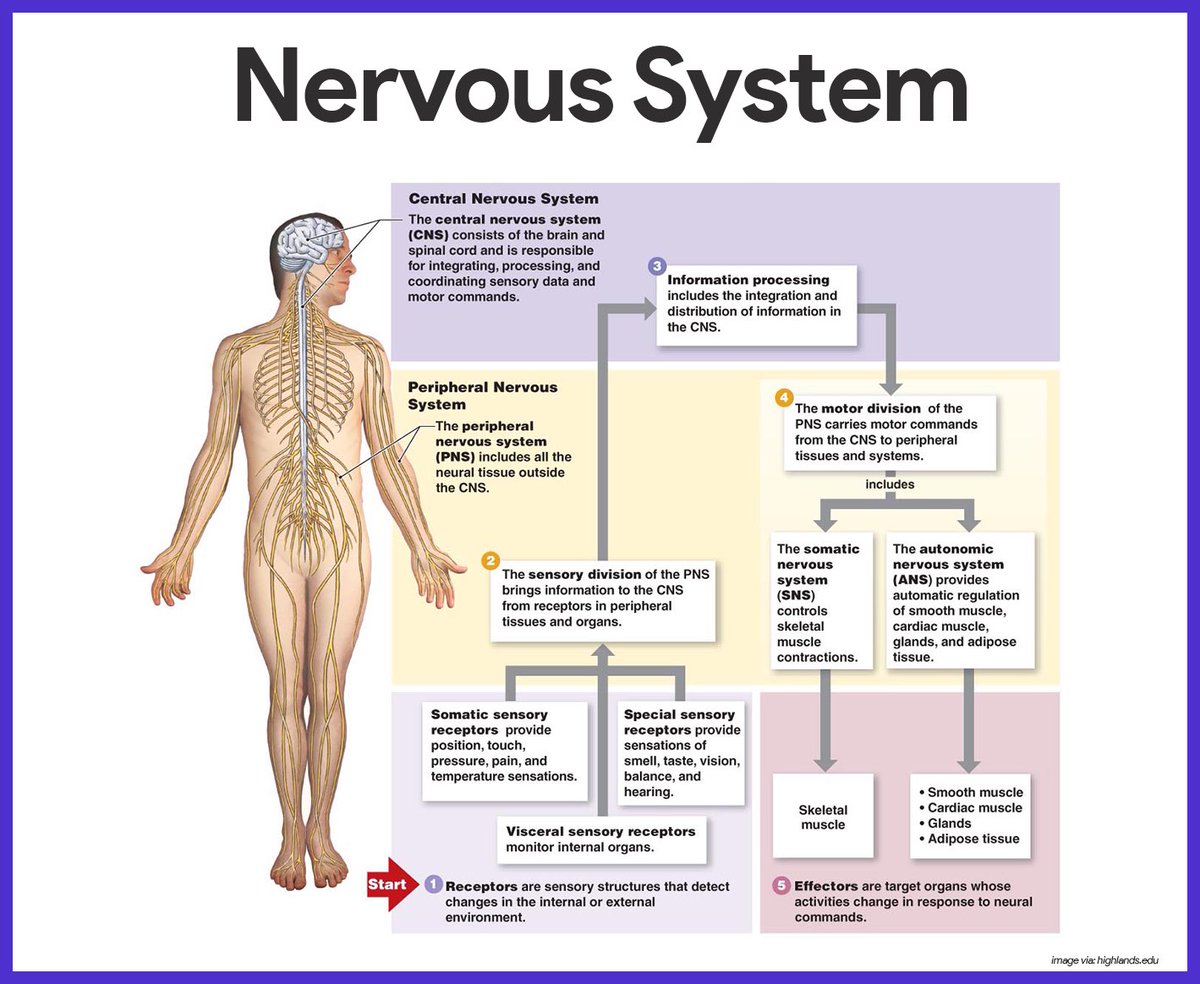
As the researchers note, it was believed that in the human body there are only three large pairs of salivary glands – parotid, submandibular and sublingual. Since the detected pair is located behind the tubal ridge of the pharynx, practically in the center of the head, experts called the glands tubular. It is assumed that before they were not noticed due to the inconvenient location for research.
September 24, 2020, 13:29 Scientists talked about the dangers of fructose for the brain 90,000 functions and role, norms of content and signs of deficiency
The iron contained in the human body is enough for a large nail. This is approximately 2.5-4.5 grams. It would seem quite a bit. Nevertheless, the influence of iron on many vital processes is enormous, and its lack (as well as excess) instantly affects our well-being and can lead to serious consequences.
The role of iron in the body: a trace element with an important mission
Iron has many functions.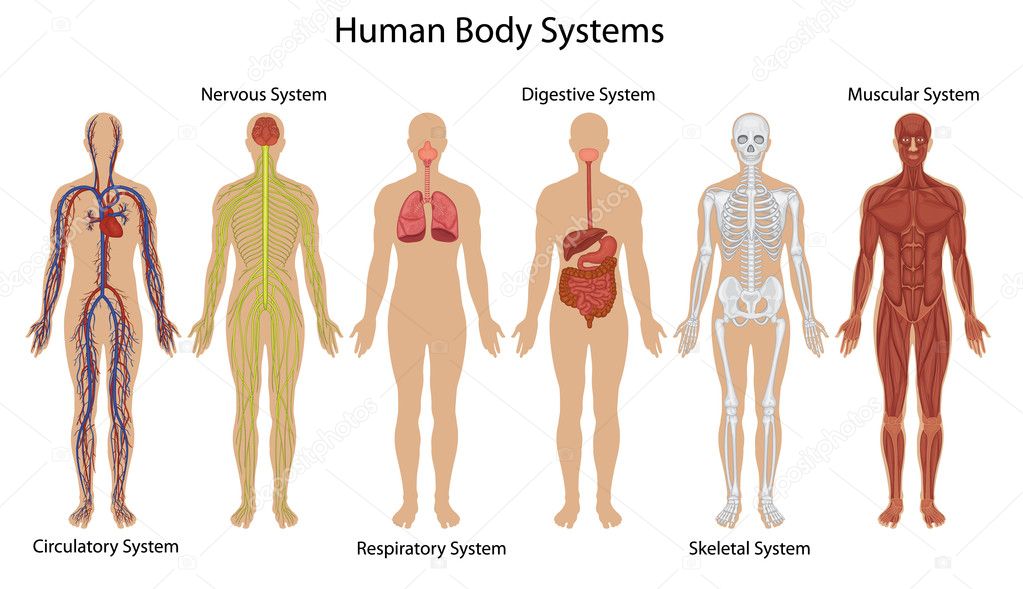 Here are the main ones:
Here are the main ones:
- Oxygen transport to tissues . Iron is part of hemoglobin, the protein that makes up red blood cells (erythrocytes). It is iron that is responsible for capturing oxygen, after which red blood cells carry it to all organs and systems of the body. These same blood cells (and again with the help of iron!) Pick up the waste carbon dioxide and transport it to the lungs for disposal. Without iron, respiratory processes at the cellular level would be simply impossible.
- Metabolism . Iron in the human body is an integral part of many enzymes and proteins that are necessary for metabolic processes – the destruction and utilization of toxins, cholesterol metabolism, and the conversion of calories into energy. It also helps the body’s immune system to deal with aggressors.
It is not surprising that iron deficiency affects appearance, health and well-being.
With a deficiency of this element, the skin becomes pale and dry, the hair becomes dull and weak, and the nails become brittle. Non-healing sores appear in the corners of the lips, and very painful cracks appear on the hands and feet.
Non-healing sores appear in the corners of the lips, and very painful cracks appear on the hands and feet.
As the amount of iron in the body decreases, the state of health worsens – the appetite disappears, many notice discomfort when swallowing. Sometimes tastes change in the strangest ways, like chewing on chalk or chewing on paper.
People with a lack of iron experience a constant breakdown – they even wake up tired. The slightest physical activity causes severe shortness of breath – this is how the lack of oxygen affects.Other typical symptoms of iron deficiency are dizziness and even fainting, drowsiness, irritability, and memory impairment.
Persistent colds and intestinal infections are common among people with iron deficiency. As we have already said, iron is directly involved in the work of the body’s defense system, and when it is deficient, the immune system cannot repel the attacks of pathogenic bacteria in time.
Surely many of you will find these symptoms very familiar.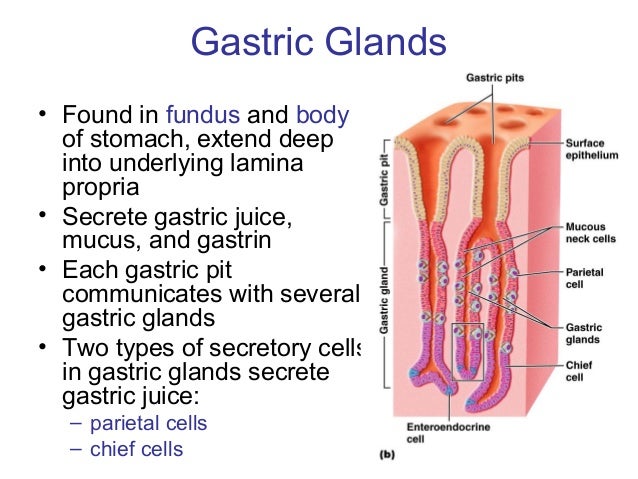 No wonder: according to WHO statistics, about 60% of the world’s population has a lack of iron in the body, and 30% have a deficiency of this element so great that we are talking about iron deficiency anemia – a condition in which the level of hemoglobin significantly decreases.
No wonder: according to WHO statistics, about 60% of the world’s population has a lack of iron in the body, and 30% have a deficiency of this element so great that we are talking about iron deficiency anemia – a condition in which the level of hemoglobin significantly decreases.
Interesting fact
Iron deficiency anemia is the most common type of anemia, accounting for more than 90% of all cases.
Maintenance rate, or How much iron do we “carry”?
As already mentioned, our body contains 2.5–4.5 g of iron, and its supply must be constantly replenished.
Women need more iron than men – this is due to monthly blood loss during menstruation, as well as some features of the hormonal system.On average, a woman should receive 15 mg of iron daily, and during pregnancy and lactation – 20 mg or even more.
Men need 10 mg of iron daily.
Children and adolescents under 18 years of age need to receive 5-15 mg of iron per day – the need for this element increases with age.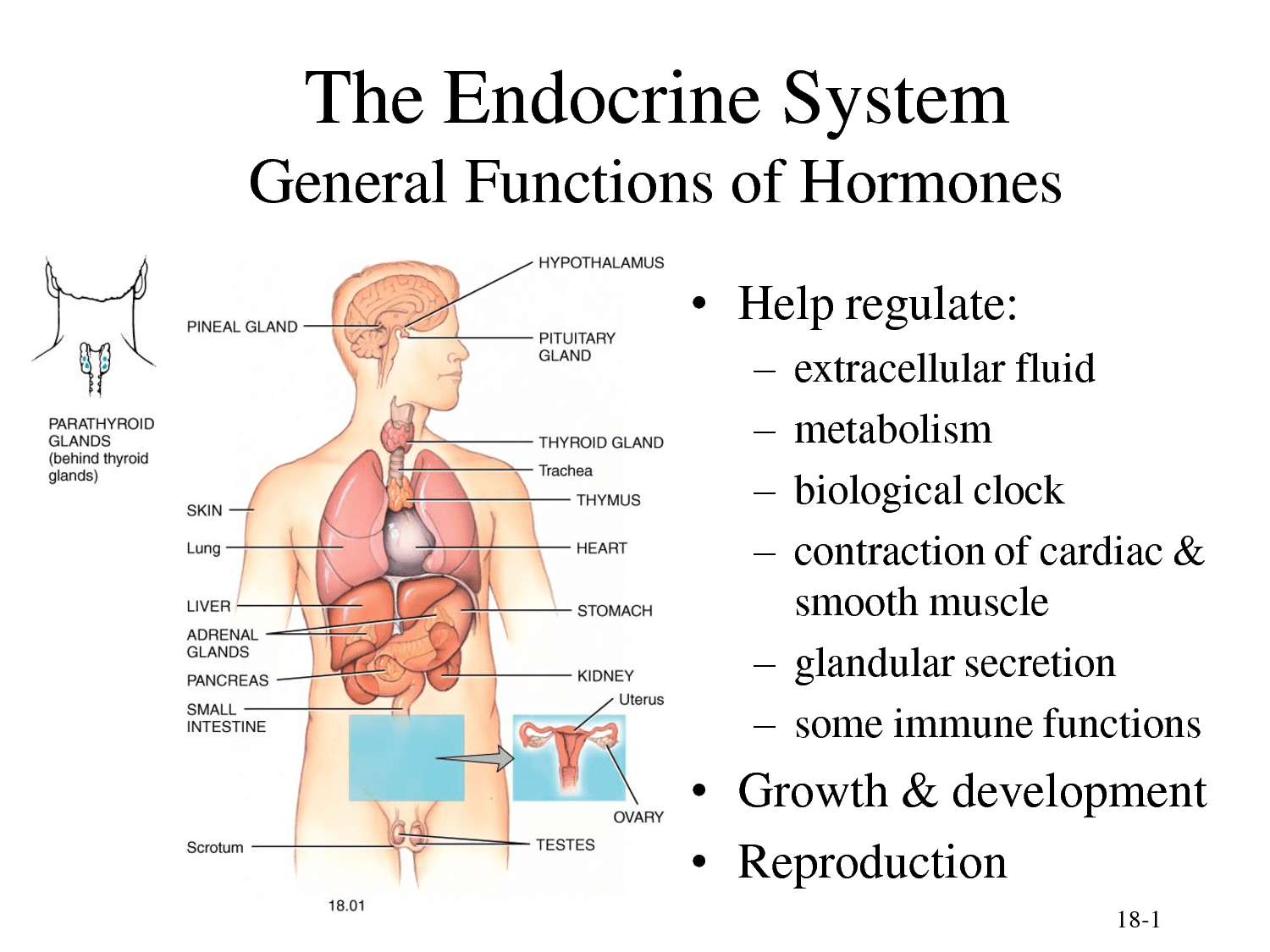
Important!
The diet of a modern person practically does not allow getting enough iron from food. On average, we consume about 10–20% of our daily iron requirement.The rest can be replenished with the help of dietary supplements and vitamin complexes.
Nothing gives such an accurate picture of the level of iron in the body as a regular biochemical blood test that can be done in any laboratory.
The normal level of iron for men is from 11.64 to 30.43 μmol / L, in women – from 8.95 to 30.43 μmol / L. In newborns, the rate of iron content in the blood is much higher – from 17.9 to 44.8 μmol / l. But by the end of the first year of life, it decreases to 7.16–17.9 µmol / L, and by the puberty period it reaches adult values.
Lack and excess of iron in the human body: causes and consequences
Excess iron is much less common than deficiency. This situation often develops with a very high iron content in drinking water, with diseases of the liver and spleen, as well as with metabolic disorders. Excess iron includes symptoms such as persistent indigestion (flatulence, diarrhea and constipation, nausea and vomiting, heartburn), fatigue and dizziness, and skin pigmentation.If you do not take any measures, complications may develop – arthritis, diabetes, liver diseases. Some experts also believe that an excess of iron is one of the risk factors for the development of cancer.
Excess iron includes symptoms such as persistent indigestion (flatulence, diarrhea and constipation, nausea and vomiting, heartburn), fatigue and dizziness, and skin pigmentation.If you do not take any measures, complications may develop – arthritis, diabetes, liver diseases. Some experts also believe that an excess of iron is one of the risk factors for the development of cancer.
Iron deficiency is diagnosed much more often. And, as a rule, it is caused by an unbalanced diet, poor in this element. Other typical reasons for a lack of iron in the body are its active consumption (during growth, pregnancy and lactation), blood loss due to injuries, operations, internal bleeding or heavy menstruation, gastritis, helminthic invasions and dysbacteriosis (due to these diseases, the process is disrupted absorption of iron), a lack of vitamins C and B12, without which iron is not absorbed, disorders in the thyroid gland and lead poisoning.
A decrease in immunity caused by a lack of iron, sooner or later leads to the fact that infectious diseases become chronic, and this is one of the main dangers of iron deficiency.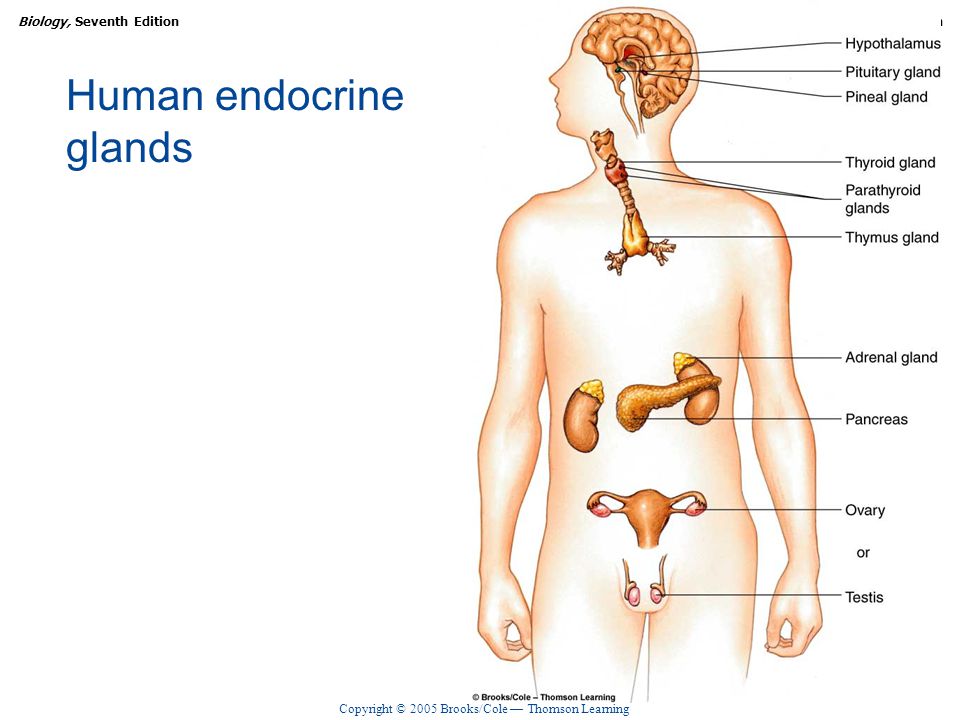 Iron deficiency anemia is a significant risk factor in the development of heart failure and liver disease. Anemia is especially dangerous for pregnant women – mothers who suffered from it while carrying a child often have children with congenital anemia.
Iron deficiency anemia is a significant risk factor in the development of heart failure and liver disease. Anemia is especially dangerous for pregnant women – mothers who suffered from it while carrying a child often have children with congenital anemia.
How to raise iron levels?
Even if a blood test showed an iron deficiency in the body, you should not immediately run to the pharmacy for a mineral complex and assume that the issue is closed.It is necessary to consult a doctor, since a lack of iron in the body may indicate the presence of serious diseases in which the absorption of iron is impaired.
If the iron deficiency in the body is caused by an unhealthy diet, it can be easily corrected.
Diet . Eat as many foods high in iron as possible. Its most valuable sources are red meat, offal (especially liver), oysters, eggs, nuts, legumes, apples, pomegranates, raisins, and figs. It is also necessary to replenish the diet with foods that contain vitamin C (sea buckthorn, rose hips, Brussels sprouts, citrus fruits) and vitamin B12 (fish and seafood), they are needed in order for the incoming iron to be absorbed.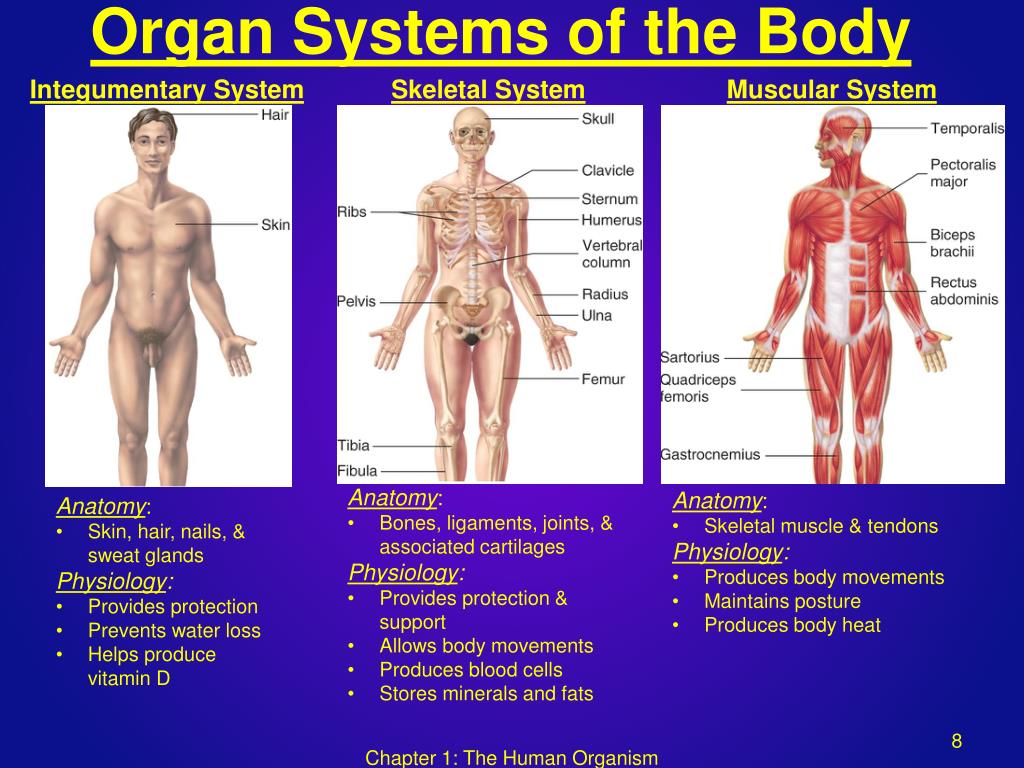 It is better to limit the consumption of tea, coffee and soda, and completely avoid alcohol.
It is better to limit the consumption of tea, coffee and soda, and completely avoid alcohol.
Vitamin complexes . Vitamin supplementation is an effective way to prevent iron deficiency in the body. In addition to this element, the complex should include vitamins A, C, E and D, all vitamins of group B, as well as copper, manganese and zinc – this is the optimal composition of the “rescue team” for iron deficiency.
BAA . There are many dietary supplements available for people who are iron deficient.The most famous dietary supplement for improving the state of anemia is, perhaps, the hematogen, familiar to everyone from childhood. It is a sweet bar, reminiscent of iris and high in albumin, a natural source of iron.
If the iron deficiency in the body has no other reasons, except for improper nutrition, in a month or two, with the help of diet, dietary supplements and vitamins, you can achieve improvement. And to speed up the process, we recommend moving more – physical activity contributes to the saturation of tissues with oxygen and helps to cope with fatigue and drowsiness – the first signs of iron deficiency.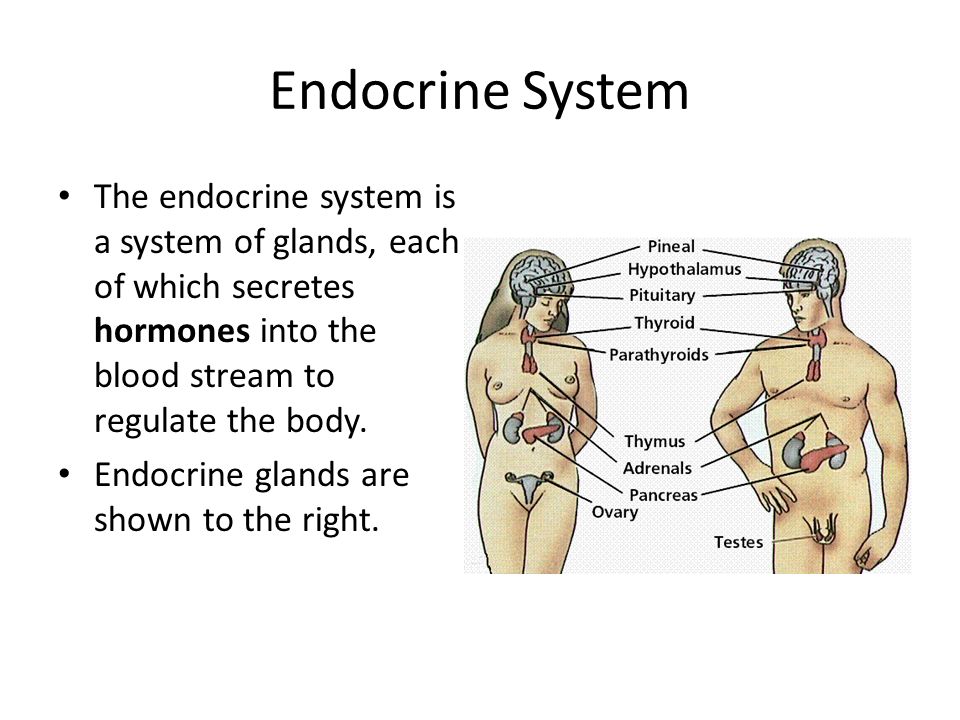
Largest iron – non-iron
+
A
–
How can we help the liver to carry the burden of our carelessness with ease?
A person drinks, smokes, eats somehow, swallows pills for any ailment … For the time being, the liver saves us, which is an organ of purification, digestion, blood circulation and metabolism of all kinds, including hormonal.It performs up to 70 functions in the body! The largest human gland (its mass is 1.5-2 kg) works day and night. But we must remember that this most important human organ is irreplaceable – scientists have not yet been able to reproduce the liver by artificial means. And its removal will inevitably lead to the death of the person himself within 1-5 days.
We must help the liver to carry the burden of our carelessness with ease. How?
This is what a well-known herbalist, doctor of medical sciences, professor, head of the herbal medicine course at the Department of Family Medicine of the Moscow Medical Academy named afterSechenov Sergey Nikolaevich Turishchev:
– There are many fruits and medicinal plants, which contain active plant components that help a person to protect the liver from diseases. Such properties are possessed, for example, by rose hips, mint, oregano, St. John’s wort, chamomile, immortelle, corn stigmas, celandine, calendula, birch buds, milk thistle, oats, many vitamin preparations …
Such properties are possessed, for example, by rose hips, mint, oregano, St. John’s wort, chamomile, immortelle, corn stigmas, celandine, calendula, birch buds, milk thistle, oats, many vitamin preparations …
Celandine. In folk medicine, a decoction of celandine herb with flowers and roots in small doses is used for cholelithiasis, jaundice and other liver diseases.
It is known to increase the secretion of bile.
Calendula promotes the secretion of bile. In folk medicine, it is more often used as a choleretic agent for liver diseases.
– In pharmacies today there are many “targeted” herbal preparations that promote the secretion of bile, cleanse the bile ducts, and remove small stones. Medicinal plants are good in that they are close in structure to the components of the human body. They act softly and are absolutely harmless, since the person himself, albeit a unique one, is a biosystem.Official medicine today no longer denies the healing effect of natural biologically active compounds.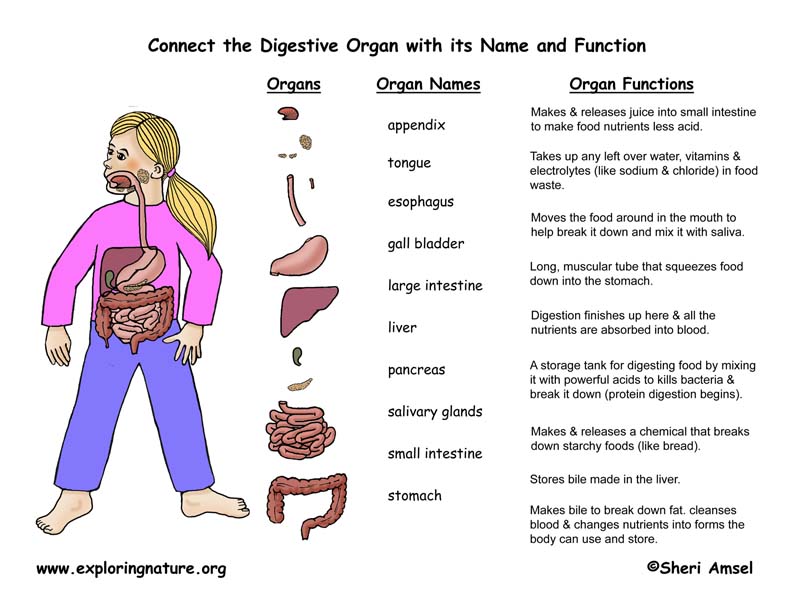 Moreover, it emphasizes not only their advantages, but often also their advantages. The active substances of plants are not only able to cleanse the liver of toxins, and therefore protect its cells from destruction, but also help to restore already damaged liver cells.
Moreover, it emphasizes not only their advantages, but often also their advantages. The active substances of plants are not only able to cleanse the liver of toxins, and therefore protect its cells from destruction, but also help to restore already damaged liver cells.
Based on practical experience, I can say that natural remedies are also good for treating chronic liver disease. As you know, the percentage of viral liver pathologies (hepatitis, cirrhosis, jaundice) is now growing.And in the case of a high load on this organ, herbs will act as hepatoprotectors (literally – defenders of the liver).
You can easily help your liver by sparing nutrition
In this sense, according to experts, boiled meat and fish, dairy products, oatmeal are good. And even more so – decoctions of natural oats. The very thing that horses are fed with. They remove toxins well, save the liver from medicinal “violence” cranberries, lemon drinks. After all, all the nutrients absorbed into the blood from the digestive tract pass through the liver and are processed in it.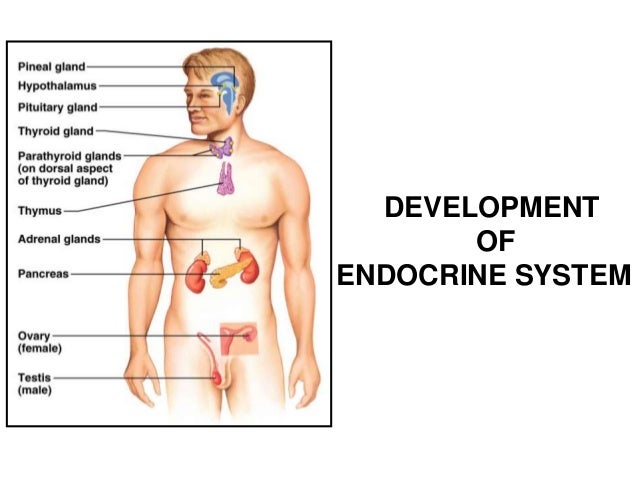 In this case, part of the fat turns into carbohydrates, so the liver, figuratively speaking, is the largest glycogen depot in the body. It also synthesizes blood plasma proteins.
In this case, part of the fat turns into carbohydrates, so the liver, figuratively speaking, is the largest glycogen depot in the body. It also synthesizes blood plasma proteins.
The diet will help to normalize the impaired function of the liver and biliary tract
Recommended foods and dishes.
Egg – protein omelet (without yolk) no more than 2 times a week.
Bread and bakery products – gray, coarse bread. The cookies are not rich.
Milk and dairy products: low-fat cottage cheese, one-day yogurt, low-fat kefir.
Fats: butter, sunflower oil for ready meals.
Meat and fish dishes: lean meats, boiled chicken. Lean fish (cod, navaga, pike) – boiled.
Soups – with vegetable broth or milk (with water). Groats – buckwheat, oatmeal, pasta. Fruit soups.
Fruits, berries, sweets – ripe varieties of fruits and berries in raw and boiled form, lemon with sugar, watermelons, soy chocolate, sugar.
Drinks, juices – rosehip decoction, various juices (with water), tea with milk, tea with lemon, dried fruit compotes.
Vegetables and greens – cabbage, potatoes, carrots, beets, raw and boiled, add onions after boiling.
Undesirable: mushrooms, beans, peas, peppers, sorrel, spinach, fried foods, egg yolks, canned food, alcohol, beer, carbonated water.
The content of proteins in this diet is 100-200 g, fats – 120-130 g, carbohydrates – 350-400 g. Caloric content – 3500 kcal, free liquid up to 1.5 liters, table salt – up to 12 g.
This diet is good by the fact that it is balanced: it contains a normal amount of proteins and limits fats (especially lamb, goose, internal fat).Reduced the set of foods that promote fermentation. The amount of vegetables and fruits has been increased.
It is better to eat 4-5 times a day.
Stay on the wall
Paradoxically, even the behavior and character of a person depends on the state of the liver. Unconscious anxiety, irritability, sleep disturbances can also be signs of an overload of the liver system. Losing your temper is a typical manifestation of an irritated liver. Even the ancients noticed this: harmful and vindictive choleric people were called bile ducts; withdrawn, sad and painful melancholic – people with black bile.And in our time, there are many apt expressions among the people that trace the connection between the liver, health and character of a person: a bilious person, sits in the liver.
Even the ancients noticed this: harmful and vindictive choleric people were called bile ducts; withdrawn, sad and painful melancholic – people with black bile.And in our time, there are many apt expressions among the people that trace the connection between the liver, health and character of a person: a bilious person, sits in the liver.
So if you help your protector, the liver, it will help you enjoy life more often.
BTW
In folk medicine, celandine is used as a means that inhibits the growth of some malignant tumors. But we must remember that celandine is a poisonous plant, so it must be used inside with extreme caution.If poisoned, it can cause nausea, vomiting, and even death.
Rosehip is an ancient medicinal plant, the medicinal properties of which were already known in the 17th century. At that time, rose hips were highly valued and were issued for treatment by special permission only to noble and wealthy people. There are so many vitamins in its fruits that their diversity exceeds all other plants known to medicine. That is why rosehip infusion is also good for the prevention of liver diseases.It increases the body’s resistance to infectious diseases, in particular, hepatitis. Promotes better bile secretion. As you know, many medicinal preparations for the treatment of hepatitis and cholecystitis are made from rose hips.
That is why rosehip infusion is also good for the prevention of liver diseases.It increases the body’s resistance to infectious diseases, in particular, hepatitis. Promotes better bile secretion. As you know, many medicinal preparations for the treatment of hepatitis and cholecystitis are made from rose hips.
Authors:
- Alexandra Zinovieva
90,000 Skin: a multifunctional organ with the requirements of
Skin: a multifunctional organ with the requirements of
The area of human skin is from 1. 5 to 2 square meters, depending on the physique.The weight of the skin is approximately 3.5-10 kg. It is the largest organ of the human body .
5 to 2 square meters, depending on the physique.The weight of the skin is approximately 3.5-10 kg. It is the largest organ of the human body .
These facts are impressive, but, among other things, the list of functions of the skin is equally impressive: like the sense organ , it gives us important information about the ambient temperature, touch and pain. The protective function of is to protect the internal environment of the body from external influences such as microbes, mechanical damage, ultraviolet radiation, etc. In addition, the skin is nutrient and water reservoir .It removes metabolic products in the form of sweat and, as an additional effect, due to this, participates in the regulation of body temperature. How does it all happen? Let’s take a look at the anatomy and function of the skin.
Three layers of effective protection
The skin consists of three layers. Each layer performs its own specific tasks.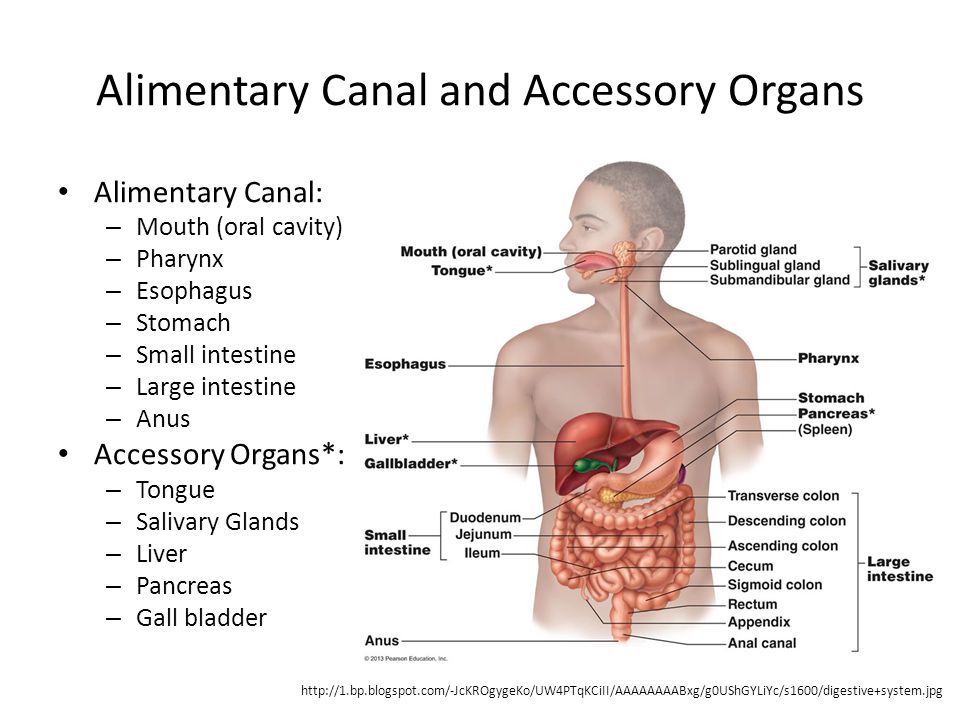
Epidermis
The epidermis is the outermost layer of the skin. It serves as a protective sheath and is in direct contact with the environment.Its main function is to protect against harmful external influences, such as microbes. The epidermis is about 0.1 mm thick, which is comparable to the thickness of a sheet of paper. However, in places subject to significant stress, such as the palms of the hands and soles of the feet, the epidermis can be as thick as five millimeters. The outer layer of the epidermis is made up of solid, dead cells made up of a protein called keratin. In order to provide stable protection against mechanical and chemical influences, these cells are firmly “glued” together.Over time, they slough off in the form of skin scales and are replaced by underlying cells. A person loses about 10 g of skin flakes every day. The topmost layer of the skin is completely renewed in about four weeks.
Derma
The dermis is located under the epidermis. This layer is much thicker than the epidermis, very durable and consists of elastic connective tissue, which makes the skin strong, but at the same time elastic. This layer contains the blood vessels that feed the epidermis, as well as the sweat glands and lymphatic vessels.The dermis is also home to nerve receptors for pressure, touch, pain, and temperature.
This layer is much thicker than the epidermis, very durable and consists of elastic connective tissue, which makes the skin strong, but at the same time elastic. This layer contains the blood vessels that feed the epidermis, as well as the sweat glands and lymphatic vessels.The dermis is also home to nerve receptors for pressure, touch, pain, and temperature.
Subcutaneous tissue
The third layer of the skin is the subcutaneous tissue. It consists mainly of adipose tissue, which is divided into individual fatty lobules by layers of connective tissue. A large amount of adipose tissue serves as a protection from the cold and as a reservoir for storing energy. There are also large blood vessels and thick nerve trunks. Hair roots and sebaceous and sweat glands are also located here.
Our protective shell is under constant influence
Healthy skin is smooth, elastic and durable. But our largest organ is influenced by many factors.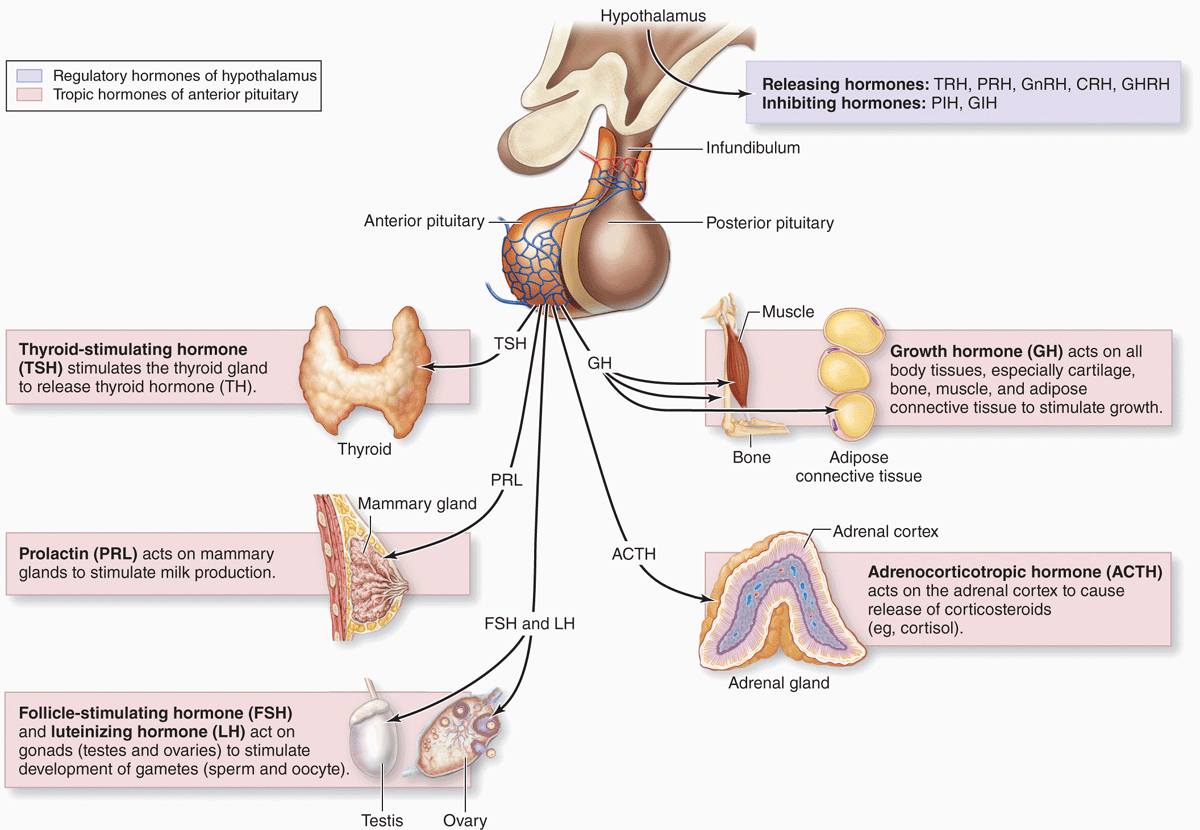 In winter, it is a combination of cold outdoor air and warm dry indoor air, and in summer, solar ultraviolet light. Skin contact with harsh cleaning agents or excessive bathing will have a negative effect on the skin. This reduces the water and fat content of the stratum corneum.The skin becomes dry, dense and begins to resemble parchment to the touch. The protective function of such skin is reduced and the skin becomes susceptible to damaging influences. Certain actions are required to maintain the full functionality of the skin.
In winter, it is a combination of cold outdoor air and warm dry indoor air, and in summer, solar ultraviolet light. Skin contact with harsh cleaning agents or excessive bathing will have a negative effect on the skin. This reduces the water and fat content of the stratum corneum.The skin becomes dry, dense and begins to resemble parchment to the touch. The protective function of such skin is reduced and the skin becomes susceptible to damaging influences. Certain actions are required to maintain the full functionality of the skin.
How to keep your skin healthy
What can help dry skin? First of all, it is the right care! It starts with daily washing. Ideally, the shower should be short and not too hot.Soft shower gels or oils are suitable for washing the body. Long-term baths are not a good idea, as they wash out too many essential substances from the skin. After showering, it is best to treat your face and body with lotions or creams.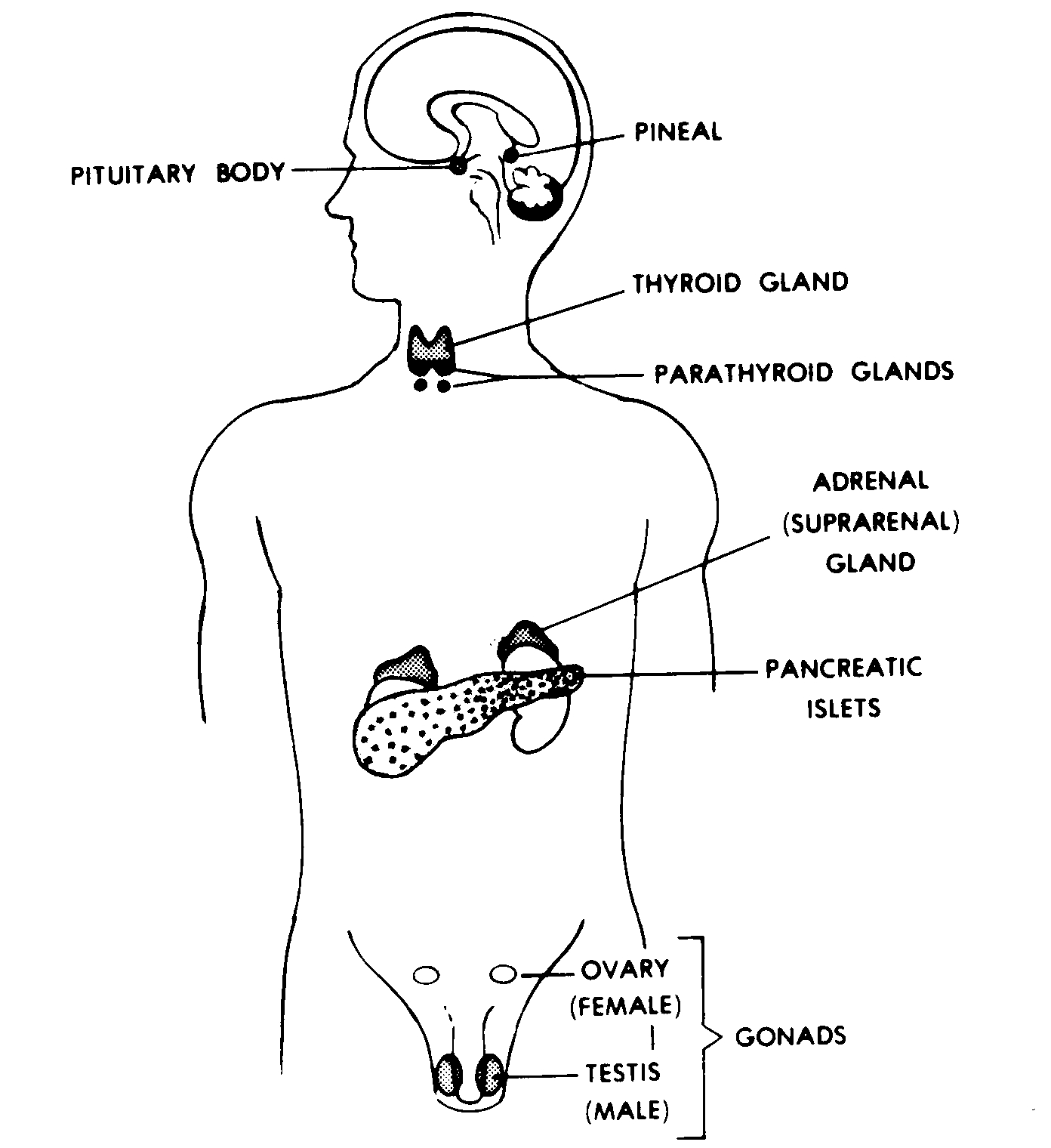 Care products must be suitable for the type of skin. As a rule, we distinguish between normal, oily, dry and very dry and sensitive skin.
Care products must be suitable for the type of skin. As a rule, we distinguish between normal, oily, dry and very dry and sensitive skin.
Moisturizers are recommended for dry skin. Age also plays a role because the skin gets thinner over the years.The efficiency of the sebaceous glands and the stratum corneum decreases, and the skin becomes dry. In addition to proper care, diet can also affect the condition of the skin, both positively and negatively. Skin requires a lot of nutrients, so a poor complexion can be a sign of a malnutrition. The same applies to the entire body: a varied and balanced diet is essential. It should include plenty of fruits and vegetables, milk and wholemeal foods, fish and a small amount of meat.Tip: Drink plenty of fluids! By drinking enough water, we help our skin replenish its fluid storage reservoir. You need to drink from one and a half to two liters of water per day. Finally, regular exercise, getting enough sleep, and avoiding stress can help maintain a healthy complexion.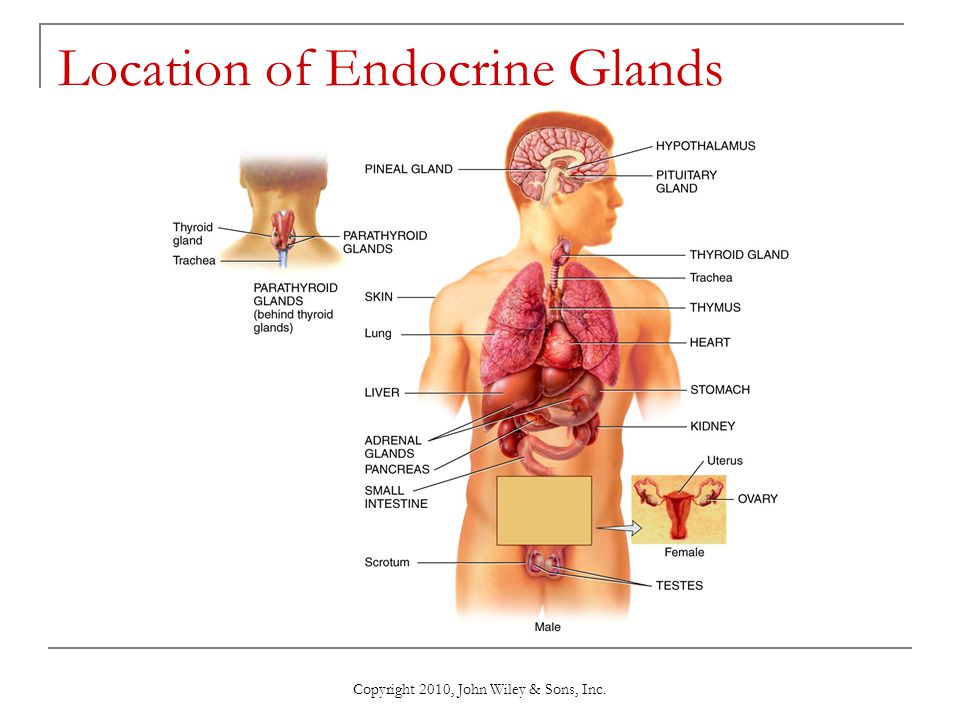


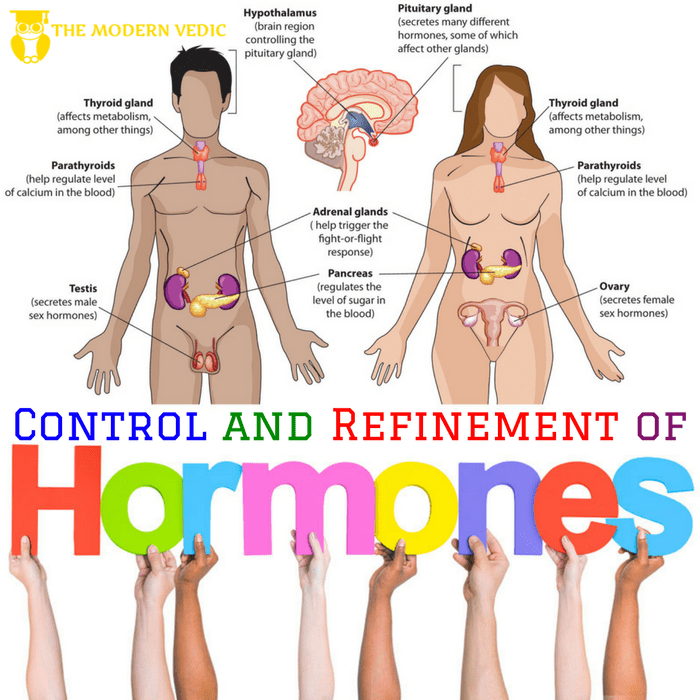 It’s responsible for your metabolism (how your body uses energy).
It’s responsible for your metabolism (how your body uses energy).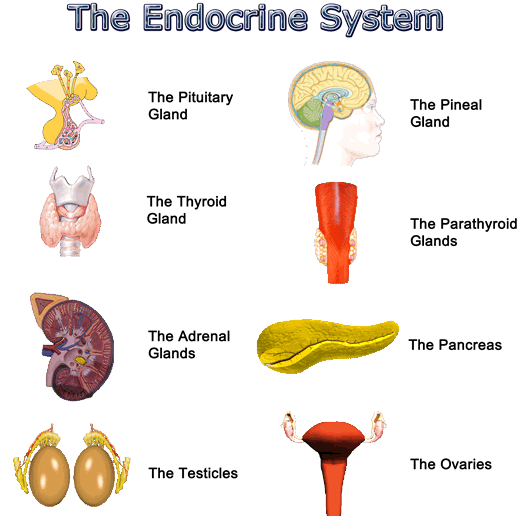
 Hypothyroidism happens when the thyroid doesn’t produce enough hormones. Hyperthyroidism occurs when it creates too many hormones.
Hypothyroidism happens when the thyroid doesn’t produce enough hormones. Hyperthyroidism occurs when it creates too many hormones.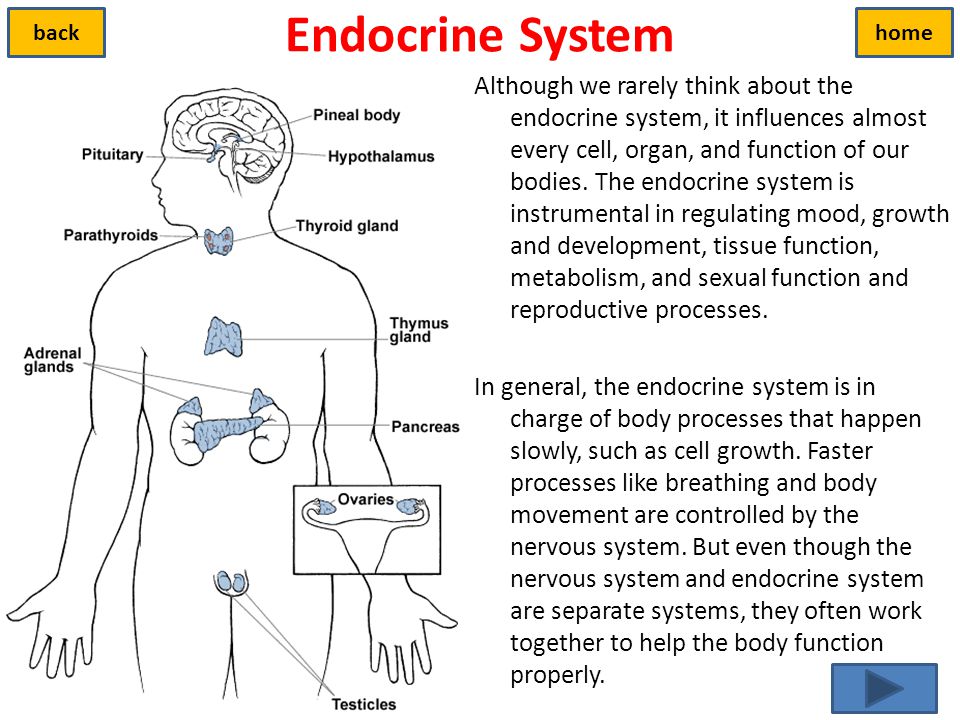
 S. It is a leading cause of infertility.
S. It is a leading cause of infertility.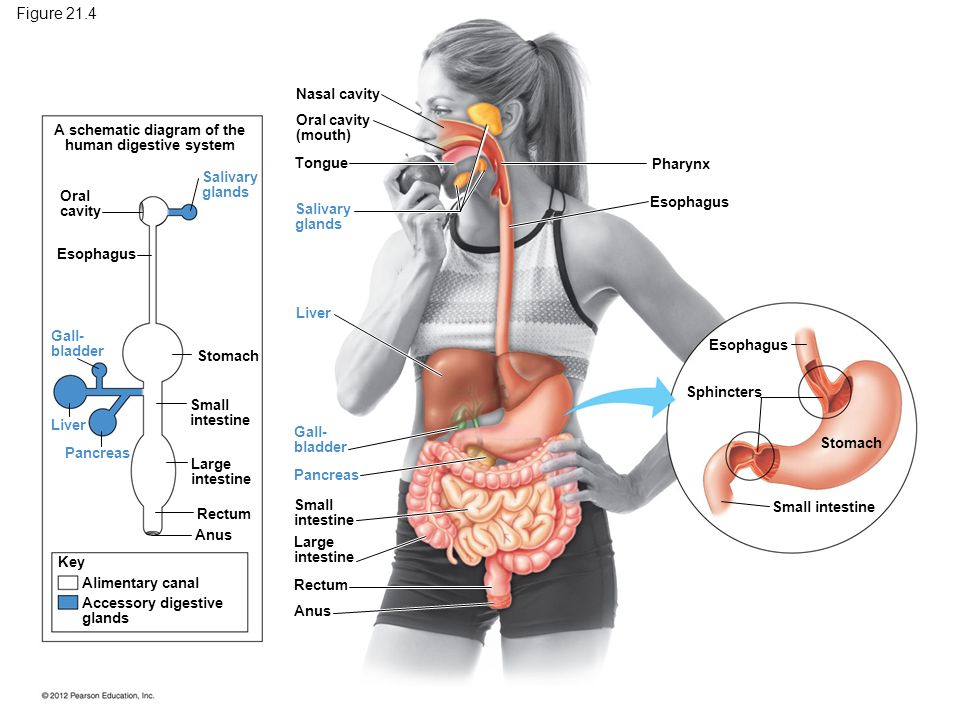 The pancreas also releases digestive enzymes that break down protein, fats, and carbs in our food.
The pancreas also releases digestive enzymes that break down protein, fats, and carbs in our food.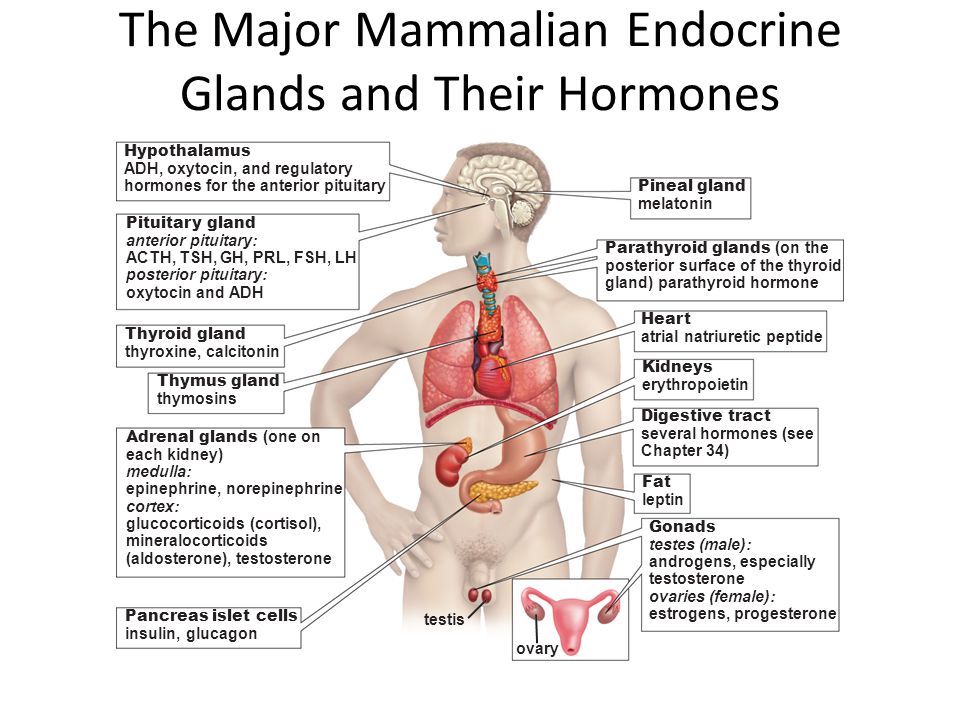
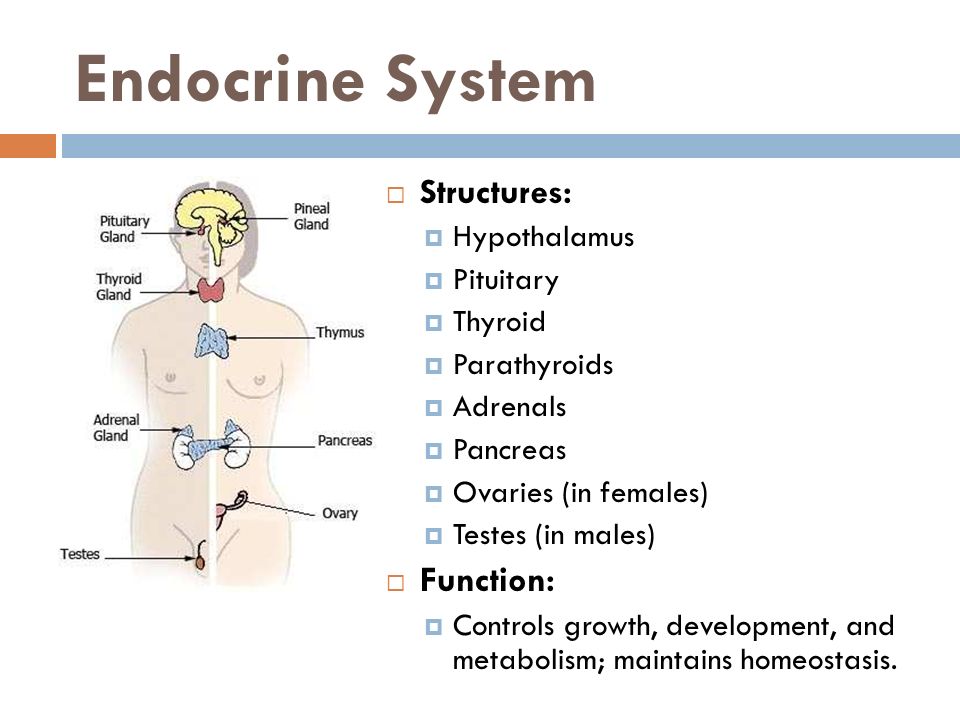

 Khardori: Type 1 Diabetes Mellitus. Medscape (accessed Aug 23, 2015)
Khardori: Type 1 Diabetes Mellitus. Medscape (accessed Aug 23, 2015)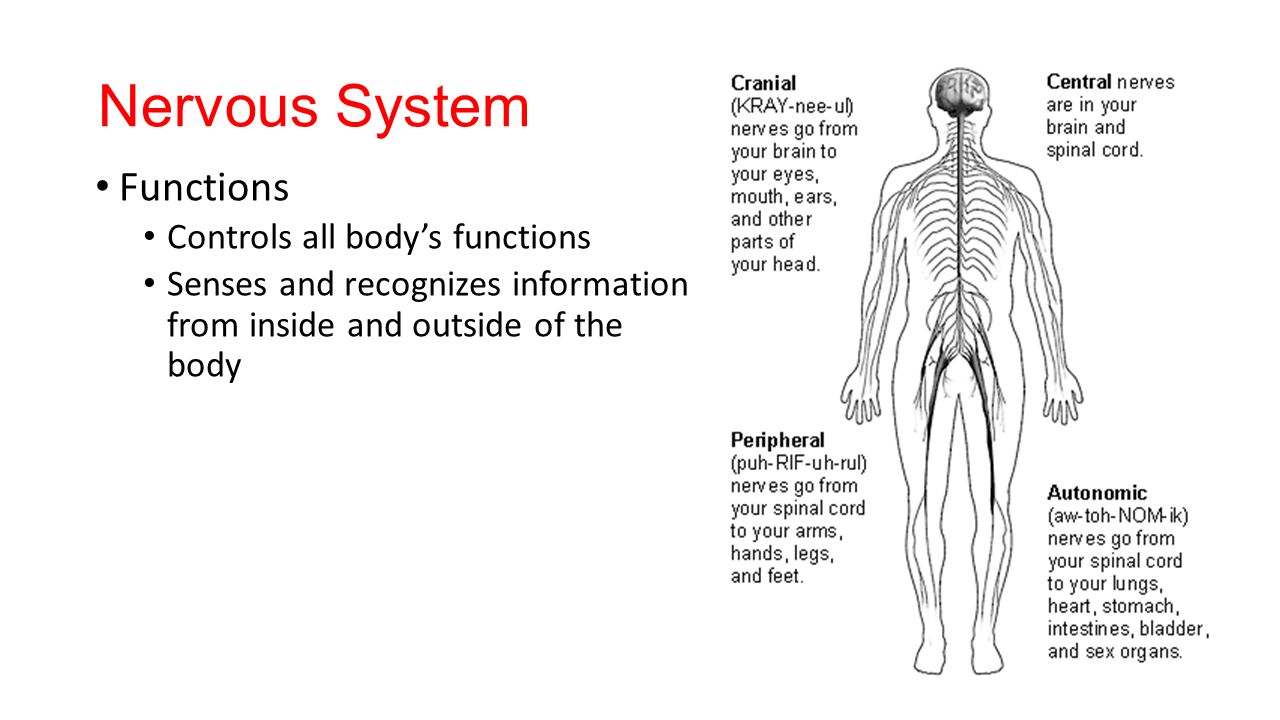
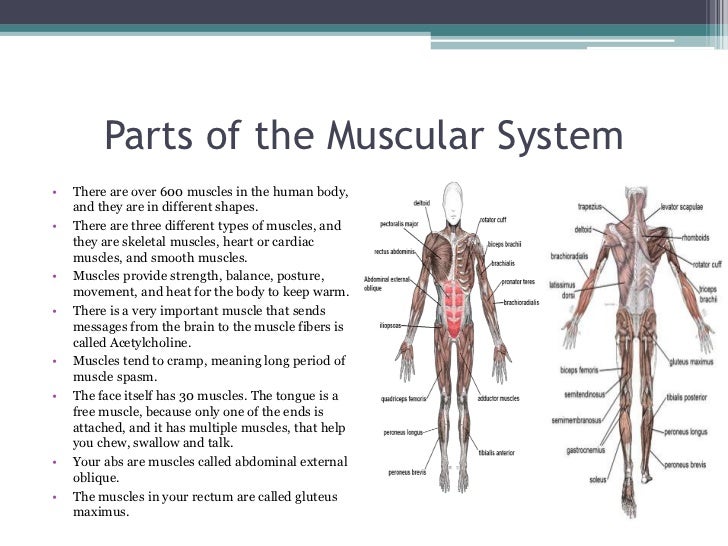
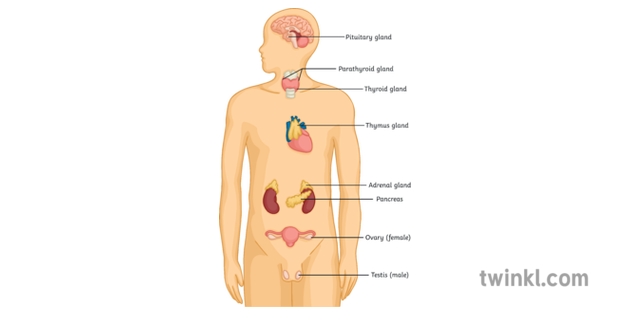 It is also recommended to postpone the ECG, ultrasound, X-ray examination for a while after the analysis.
It is also recommended to postpone the ECG, ultrasound, X-ray examination for a while after the analysis.